
14 Best Travel Authors of All Time
Here are some of the best travel authors that you will want to read to gain inspiration about the art of traveling.
There are times when we simply want to escape the mundanity of everyday life and explore an exotic location like Arabia or Mexico. Yet when travel is not possible, a book can take us where we want to go. Exploring the world through the writing of travel authors can give us a sense of wonder, even when we have to stay at home.
If you are hoping to learn more about the world, put down the guidebook and pick up a more engaging work by one of these top travel authors . You will read a great story while also gaining some travel experience. These 14 authors are ones you will want to grab from Amazon to read today.
1. Bill Bryson
2. paul theroux, 3. bruce chatwin, 4. eric newby, 5. ernest hemingway, 6. graham greene, 7. jack kerouac, 8. freya stark, 9. jan morris, 10. john steinbeck, 11. peter mayle, 12. anthony bourdain, 13. elizabeth gilbert, 14. pico iyer, best travel authors ranked.

Bill Bryson is an American and British author whose book Notes from a Small Island, showcasing travel in Britain, brought him to prominence among travel writers. His travel books include works about travel in America, England, Australia, Africa, and other countries in Europe.
Bryson started his adult life as a student at Drake University, but he dropped out to backpack in Europe after two years. Neither Here nor There: Travels in Europe chronicled these adventures. This trip caused him to move to Europe permanently, settling in Britain in 1977.
Early in life, Bryson worked as a journalist and copy editor. In 2014, he took the citizenship test to earn dual citizenship in the UK and America. Bryson’s extensive work earned him several honorary doctorates from schools in America and the UK.
- Bryson, Bill (Author)
- English (Publication Language)
- 324 Pages - 05/15/2001 (Publication Date) - William Morrow Paperbacks (Publisher)
Paul Theroux was born in Massachusetts in 1941, and he earned his acclaim as a novelist and travel writer. The Great Railway Bazaar is one of his most famous works in the travel genre.
Throughout his career, Theroux experienced some controversy. For example, Singapore banned his novel, Saint Jack, for over 30 years because of its content.
Throughout his life, Theroux lived in several countries, including Uganda, Singapore, and England, in London specifically. He returned to the United States in the 1990s and continues to write today. Looking for more books to binge on a weekend? Check out the best books for beach reading . Or you can also search for our best book guides using our search bar.
- Theroux, Paul (Author)
- 352 Pages - 06/01/2006 (Publication Date) - Mariner Books (Publisher)
Bruce Chatwin considered himself a storyteller, not a travel writer, but his first book, In Patagonia, solidified him in the genre. He got to travel much of the world working as a reporter for The Sunday Times Magazine, interviewing political figures. This helped him gather more tales for his travel books.
Chatwin was born in England and went to Marlborough College. He worked for a time at Sotheby’s, where he gained knowledge of and appreciation for art.
Throughout Chatwin’s body of work, the theme of human restlessness is clear. He believed humans had a genetic predisposition to wanderlust, and his works helped fuel that. You might also be interested in these essays about traveling and essays about journeys .
- Bruce Chatwin (Author)
- 240 Pages - 03/01/2003 (Publication Date) - Penguin Classics (Publisher)
Eric Newby was an English travel writer known for A Short Walk in the Hindu Kush, The Last Grain Race, and A Small Place in Italy. He was born in London in 1919 and died in 2006 at 86. His famous travel work The Last Grain Race chronicled his experience on a Finnish ship that took part in a voyage from Australia to Europe past Cape Horn.
Newby was a prolific writer, with 25 books to his name. His travel writing included some of his stories from being captured as a prisoner of war in the Adriatic during World War II, which he wrote about in Love and War in the Apennines.
Newby continued writing until 2003, three years before his death. Many of his works included his own photography.
- Newby, Eric (Author)
- 288 Pages - 07/06/2024 (Publication Date) - HarperPress (Publisher)

Ernest Hemingway was a Nobel Prize-winning author who wrote For Whom the Bell Tolls, which spoke of the Civil War in Spain. His travel books include Green Hills of Africa, which talks about his time on safari.
Hemingway grew up in Illinois and joined the military during World War I. He got his first taste of international travel on the Italian front of the war. He also served during WWII, working as a journalist and foreign correspondent.
He fell in love with Paris and chose to live there as an ex-pat for some time. His time there was the story behind The Sun Also Rises, another of his famous works. In addition to traveling and writing, Hemingway was a keen sportsman.
- Hemingway, Ernest (Author)
- 480 Pages - 07/01/1995 (Publication Date) - Scribner (Publisher)
Graham Greene was a British writer who lived from 1925 to 1991. He often brought conflicting moral and political issues into his writing, and he earned the Shakespeare Prize and the Jerusalem Prize for his works.
Greene traveled extensively to find subject matter for his books, which led him to get recruited for MI6, the British espionage agency. As a result, many of his works, including The Comedians and his memoir My Silent War, include settings pulled from his travels.
Greene often wrote about remote places, which earned him a spot as one of the best travel writers, but he was more prominently known as a thriller and political writer.
- Greene, Graham (Author)
- 320 Pages - 01/25/2005 (Publication Date) - Penguin Classics (Publisher)
Jack Kerouac was an American poet and novelist known for Big Sur and The Dharma Burns. His prose is known for its spontaneity, and he covers a wide range of themes in his writing. Though he grew up in Massachusetts, his home was French-speaking, so he often spoke with a French accent.
Like many travel writers, Kerouac got his taste for international travel during World War II, where he served as a Marine. He published a total of 14 novels during his lifetime and also several volumes of poetry.
On the Road is one of his most famous travel works. It chronicles a road trip Kerouac once took with Neal Cassady. A heavy drinker, Kerouac died from an abdominal hemorrhage at the age of 47.
- Jack Kerouac (Author)
- 293 Pages - 06/01/1999 (Publication Date) - Penguin Classics (Publisher)
Freya Stark was an explorer and travel writer who lived in the early 1900s. She had dual British and Italian citizenship and lived in many parts of Europe, including Italy and France. The book One Thousand and One Nights, which she received for her ninth birthday, inspired a love for Asia and the Orient, which later fueled her passion for exploration.
Stark took many excursions into the Middle East, including dangerous countries like Lebanon, Baghdad, and Iraq, and these became part of her writings. The Valleys of the Assassins, which she published in 1934, is one of her famous works, and it describes some of her early travels.
Throughout her life, Stark continued to travel extensively. She helped the British in both World War I and World War II. Her adventure travel writings earned her the Founder’s Gold Medal of the Royal Geographical Society.
- Stark, Freya (Author)
- 320 Pages - 07/24/2001 (Publication Date) - Random House Publishing Group (Publisher)
Yet another English travel writer, Jan Morris, lived in Great Britain and Wales. She was born James Morris, and while living as a male, she was part of the 1953 British Mount Everest expedition – the first time the mountain was traversed.
Last Letters from Hav was one of Morris’s most engaging travel novels. She described it as an imagined travelogue and political thriller. She also published several books on travel to Trieste and Venice.
Morris died in 2020 at the age of 94. She was famous for being one of the first high-profile individuals to make a gender transition. She traveled to Morocco for the necessary surgery when British doctors refused to perform it.
- Morris, Jan (Author)
- 203 Pages - 02/18/1989 (Publication Date) - Vintage Books / Random House (Publisher)

American author John Steinbeck is most famous for his novels The Grapes of Wrath and Of Mice and Men. He won the Nobel Prize for Literature in 1962 and the Pulitzer Prize for Fiction in 1940. The Grapes of Wrath sold 14 million copies in just the first 75 years of publication.
Not all of Steinbeck’s works are travel works, but in 1943 he became a war correspondent for the New York Herald Tribune. A role that took him overseas. This gave him new settings for his stories beyond California, and some of his works became known as travel books. For example, his A Russian Journal included photographs and first-hand accounts of his visit to the Soviet Union in 1947.
In 1960 Steinbeck embarked on a road trip with his dog, Charley, which created the scenes for Travels with Charley: In Search of America. This piece of travel literature is a travel memoir that perfectly captures what it means to be American, even the different flavors of America seen across the country.
- Steinbeck, John (Author)
- 277 Pages - 01/31/1980 (Publication Date) - Penguin Books (Publisher)
Peter Mayle is the author of the New York Times bestseller A Year in Provence. He has 14 books to his name, including both non-fiction works and travel novels. A Year in Provence was his first book, and it has six million copies in forty languages to date.
Mayle was born in 1939 in England, and he started his literary career writing educational books, not travel stories. However, he eventually moved to southern France as an expatriate, which served as fodder for his most famous works. In 1989 the British Book Awards called A Year in Provence the Best Travel Book of the Year.
Mayle died in 2018 at the age of 78. He was still living in Provence at the time. In addition to his work as an author, he also worked as an advertising copywriter.
- Great product!
- Bourdain, Anthony (Author)
- 312 Pages - 01/09/2007 (Publication Date) - Ecco (Publisher)
Anthony Bourdain is a chef who also traveled the world. He writes on both cooking and travel, and A Cook’s Tour is one book that combines both into one interesting tour of the dining and culture of the world.
Bourdain’s books are known for their whit, and his book Kitchen Confidential: Adventures in the Culinary Underbelly hit the New York Times bestseller list in 2000. Many of his works tied in with his television series.
In addition to writing, Bourdain hosted several travel shows for television. His work for these shows fueled some of his great travel and cooking books. Are you searching for books to give to someone? Check out our round-up of the best books to give ! Or you can also search for our best book guides using our search bar.
In Eat, Pray, Love, Elizabeth Gilbert takes the reader to Italy, Indonesia and India. The book’s theme is finding self-love and inner devotion, but it fits the travel genre because of its exploration of these locations.
Gilbert was born in Connecticut in 1969 and grew up on a Christmas tree farm. She started writing short stories while in college, and she traveled throughout America during her young adult years, which provided some ideas for her books.
The popularity of Eat, Pray, Love, and the movie based on the book earned her a spot on Time Magazine’s list of the 100 most influential people in the world.
- Gilbert, Elizabeth (Author)
- 400 Pages - 01/30/2007 (Publication Date) - Riverhead Books (Publisher)
Pico Iyer was a close friend of the Buddhist leader Dali Lama, which comes into play in his book The Open Road. In this book, he encourages readers to look into the themes of Buddhism as they relate to life.
Iyer traveled to Cuba, Ethiopia, and Kathmandu throughout his life, and those places influenced his writing. Though he was born to Indian parents and raised in California, he currently resides in Western Japan. His Falling Off the Map: Some Lonely Places of the World showcases his travel writing style as he explores places not often found in travel guidebooks.
Because of the Buddhist influence in his life, Iyer’s works are very introspective. Often causing the reader to think about human nature just as much as they inspire thought about travel. If you liked this post, you might also be interested in these authors like Bill Bryson .
- Iyer, Pico (Author)
- 288 Pages - 03/10/2009 (Publication Date) - Knopf Doubleday Publishing Group (Publisher)
Trending Post : 52 Best Things to do in Ireland

Great Travel Writing Examples from World Renowned Travel Writers
Are you ready to be a better travel writer? One of the best ways to do this is to read great travel writing examples from great travel writers.
Writing about travel in a way that keeps your reader reading is not always easy. Knowing how to write an irresistible first paragraph to entice the reader to keep reading is key. Writing a lede paragraph that convinces the reader to finish the article, story or book is great travel writing. This article features travel writing examples from award-winning travel writers, top-selling books, New York Times travel writers, and award-winning travel blogs.
Ads are how we pay our bills and keep our blog free for you to enjoy. We also use affiliate links; if you make a purchase through them, we may receive a small commission at no cost to you.

The writers featured in this article are some of my personal favorite travel writers. I am lucky to have met most of them in person and even luckier to consider many friends. Many I have interviewed on my podcast and have learned writing tips from their years of travel writing, editing and wisdom.
11 Great Travel Writing Examples
Writing with feeling, tone, and point of view creates a compelling story. Below are examples of travel writing that include; first paragraphs, middle paragraphs, and final paragraphs for both travel articles as well as travel books.
I hope the below examples of travel writing inspire you to write more, study great travel writing and take your writing to a higher level.
Writing Example of a Travel Book Closing Paragraphs

Don George is the author of the award-winning anthology The Way of Wanderlust: The Best Travel Writing of Don George , and the best-selling travel writing guide in the world: How to Be a Travel Writer .
He is currently Editor at Large for National Geographic Travel, and has been Travel Editor at the San Francisco Examiner-Chronicle, Salon, and Lonely Planet.
I had the wonderful opportunity to see Don speak at Tbex and read from one of his books as well as interview him on the Break Into Travel Writing podcast. You can listen to the full podcast here .
Below is the closing of Don’s ebook: Wanderlust in the Time of Coronavirus: Dispatches from a Year of Traveling Close to Home
I continued hiking up to Lost Trail and then along Canopy View Trail. Around noon I serendipitously came upon a bench by the side of the trail, parked my backpack, and unpacked my lunch. Along with my sandwiches and carrot sticks, I feasted on the tranquility and serenity, the sequoia-swabbed purity of the air, the bird and brook sounds and sun-baked earth and pine needle smells, the sunlight slanting through the branches, the bright patch of blue sky beyond.
At one point I thought of shinrin-yoku, forest bathing, the Japanese practice that has become widely popular in the U.S. This was a perfect example of shinrin-yoku, I thought: Here I am, alone in this forest, immersed in the sense and spirit of these old-growth redwoods, taking in their tranquility and timelessness, losing myself to their sheer size and age and their wild wisdom that fills the air.
I sat there for an hour, and let all the trials, tremors, and tribulations of the world I had left in the parking lot drift away. I felt grounded, calm, quiet—earth-bound, forest-embraced.
In another hour, or two, I would walk back to the main paved trail, where other pilgrims would be exclaiming in awe at the sacred sequoias, just as I had earlier that day.
But for now, I was content to root right here, on this blessed bench in the middle of nowhere, or rather, in the middle of everywhere, the wind whooshing through me, bird-chirps strung from my boughs, toes spreading under scratchy pine needles into hard-packed earth, sun-warmed canopy reaching for the sky, aging trunk textured by time, deep-pulsing, in the heart of Muir Woods.
- You can read the whole story here: Old Growth: Hiking into the Heart of Muir Woods
- Please also download Don’s free ebook here: Wanderlust in the Time of Coronavirus
- In addition to writing and editing, Don speaks at conferences, lectures on tours around the world, and teaches travel writing workshops through www.bookpassage.com .

Writing Example of a Travel Book Intro Paragraphs
Francis tapon.

Francis Tapon , author of Hike Your Own Hike and The Hidden Europe , also created a TV series and book called The Unseen Africa, which is based on his five-year journey across all 54 African countries.
He is a three-time TEDx speaker. His social media username is always FTapon. I interviewed Francis on the Break Into Travel Writing podcast about “How to Find An Original Point of View as a Travel Writer “. You can listen to the full podcast here .
Below is the opening of Francis’ book, The Hidden Europe:
“This would be a pretty lousy way to die,” I thought.
I was locked in an outhouse with no way out. Outhouses sometimes have two latches—one on the outside and one on the inside. The outside latch keeps the door shut to prevent rodents and other creatures who like hanging out in crap from coming in. Somehow, that outer latch accidentally closed, thereby locking me in this smelly toilet. I was wearing a thin rain jacket. The temperature was rapidly dropping.
“This stinks,” I mumbled. It was midnight, I was above the Arctic Circle, and the temperatures at night would be just above freezing. There was no one around for kilometers. If I didn’t get out, I could freeze to death in this tiny, smelly, fly-infested shithole.
My mom would kill me if I died so disgracefully. She would observe that when Elvis died next to a toilet, he was in Graceland. I, on the other hand, was in Finland, not far from Santa Claus. This Nordic country was a jump board for visiting all 25 nations in Eastern Europe.
You can find his book on Amazon: The Hidden Europe: What Eastern Europeans Can Teach Us
For $2 a month, you can get Francis’ book as he writes it: Patreon.com/ftapon
Intro (Lede) Paragraph Examples of Great Travel Writing Articles
Michele peterson.

Former banking executive Michele Peterson is a multi-award-winning travel and food writer who divides her time between Canada, Guatemala, and Mexico (or the nearest tropical beach).
Former banking executive Michele Peterson is a multi-award-winning travel and food writer who divides her time between Canada, Guatemala, and Mexico (or the nearest tropical beach). Her writing has appeared in Lonely Planet’s Mexico from the Source cookbook, National Geographic Traveler, Conde Nast’s Gold List, the Globe and Mail, Fifty-five Plus and more than 100 other online and print publications.
She blogs about world cuisine and sun destinations at A Taste for Travel website. I met Michele on my first media trip that took place in Nova Scotia, Canada. I also had the pleasure of interviewing about “ Why the Odds are in Your Favor if you Want to Become a Travel Writer” . You can listen to the full podcast here .
Michele’s Lede Paragraph Travel Writing Example
I’m hiking through a forest of oak trees following a farmer who is bleating like a pied piper. Emerging from a gully is a herd of black Iberian pigs, snuffling in response. If they weren’t so focused on following the swineherd, I would run for the hills. These pigs look nothing like the pink-cheeked Babe of Hollywood fame.
These are the world’s original swine, with lineage dating back to the Paleolithic Stone Age period where the earliest humans decorated Spain’s caves with images of wild boars. Their powerful hoofs stab the earth as they devour their prized food, the Spanish bellota acorn, as fast as the farmer can shake them from the tree with his long wooden staff. My experience is part of a culinary journey exploring the secrets of producingjamón ibérico de Bellota, one of the world’s finest hams.
You can read the full article here: Hunting for Jamón in Spain
Perry Garfinkel

Perry Garfinkel has been a journalist and author for an unbelievable 40 years, except for some years of defection into media/PR communications and consulting.
He is a contributor to The New York Times since the late ’80s, writing for many sections and departments. He has been an editor for, among others, the Boston Globe, the Middlesex News, and the Martha’s Vineyard Times.
He’s the author of the national bestseller “ Buddha or Bust: In Search of the Truth, Meaning, Happiness and the Man Who Found Them All ” and “ Travel Writing for Profit and Pleasure “.
Perry has been a guest on my podcast twice. He gave a “ Master Class in Travel Writing ” you can listen to the full podcast here . He also shared “ How to Find Your Point Of View as a Travel Writer ” you can listen to the full episode here .
Perry’s Lede Travel Article Example from the New York Times
SAN FRANCISCO — A block off Grant Avenue in San Francisco’s Chinatown – beyond the well-worn path tourists take past souvenir shops, restaurants and a dive saloon called the Buddha Bar – begins a historical tour of a more spiritual nature. Duck into a nondescript doorway at 125 Waverly Place, ascend five narrow flights and step into the first and oldest Buddhist temple in the United States.
At the Tien Hau Temple, before an intricately carved gilded wooden shrine and ornate Buddha statues, under dozens of paper lanterns, Buddhists in the Chinese tradition still burn pungent incense and leave offerings to the goddess Tien Hau in return for the promise of happiness and a long life.
You can read the full article here: Taking a Buddhist pilgrimage in San Francisco
Elaine Masters

Elaine Masters apologizes for pissing off fellow travelers while tracking story ideas, cultural clues, and inspiring images but can’t resist ducking in doorways or talking with strangers.
She’s recently been spotted driving her hybrid around the North American West Coast and diving cenotes in the Yucatan. Founder of Tripwellgal.com, Elaine covers mindful travel, local food, overlooked destinations and experiences. Elaine was a guest on my podcast where we spoke about “ How to Master the CVB Relationship “. You can listen to the full podcast here .
Elaine’s Lede Example
I jiggered my luggage onto the escalator crawling up to the street. As it rose into the afternoon light, an immense shadow rose over my shoulder. Stepping onto the sidewalk, I burst into giggles, looking like a madwoman, laughing alone on the busy Barcelona boulevard. The shadow looming overhead was the Sagrada Familia Cathedral. It had mesmerized me forty years earlier and it was the reason I’d finally returned to Spain.
You can read the full article here: Don’t Miss Going Inside Sagrada Familia, Barcelona’s Beloved Cathedral

Along with his wife, photographer Mary Gabbett, Bret Love is the Co-Founder/Editor In Chief of Green Global Travel and the Blue Ridge Mountains Travel Guide.
He’s also an award-winning writer whose work has been featured by more than 100 publications around the world, including National Geographic, Rolling Stone, American Way, the Washington Post, and the New York Times.
Bret’s Lede Example
Congo Square is quiet now. Traffic forms a dull drone in the distance. A lone percussionist taps out ancient tribal rhythms on a two-headed drum. An air compressor from Rampart Street road construction provides perfectly syncopated whooshes of accompaniment.
Shaded park benches are surrounded by blooming azaleas, magnolias, and massive live oaks that stretch to provide relief from the blazing midday sun. It’s an oasis of solitude directly across the street from the French Quarter.
Congo Square is quiet now. But it’s here that the seeds of American culture as we know it were sown more than 200 years ago. And the scents, sounds, and sights that originated here have never been more vital to New Orleans than they are now, more than a decade after Hurricane Katrina devastated the city.
You can read the full article here: Treme, New Orleans (How Congo Square Was The Birthplace Of American Culture)
Middle Paragraph Examples of Great Travel Writing Articles
Mariellen ward.

Canadian travel writer and blogger Mariellen Ward runs the award-winning travel site Breathedreamgo.com , inspired by her extensive travels in India.
She has been published in leading media outlets worldwide and offers custom tours to India through her company India for Beginners. Though Canadian by birth, Mariellen considers India to be her “soul culture” and she is passionate about encouraging mindful travel.
Mariellen’s Middle Paragraph Example
While the festival atmosphere swirled around me, I imbued my diya with hope for personal transformation. I had come to India because a river of loss had run through my life, and I had struggled with grief, despair and depression for eight years. I felt I was clinging to the bank, but the effort was wearing me out. Deciding to leave my life and go to India was like letting go of the bank and going with the flow of the river. I had no idea where it would lead me, what I would learn or how I would change. I only knew that it was going to be big.
You can read the full article here: The River: A tale of grief and healing in India

Joe Baur is an author and filmmaker from Cleveland currently based in Berlin. His work has appeared in a variety of international publications, including BBC Travel, National Geographic, and Deutsche Welle.
He regularly reports for the Jewish Telegraphic Agency and is the author of Talking Tico detailing his year of living in Costa Rica and traveling around Central America. I interviewed Joe about “ How to Find Unique Travel Stories “. You can listen to the full podcast here .
Joe Baur’s Middle Paragraph Example
I first became aware of the Harz mountains and the Brocken when reading the works of some of Germany’s great writers, like Goethe and Heinrich Heine. Legends of witches congregating with the devil being the main theme of the mountain’s mythology. I, however, was more interested in a refreshing time spent in nature rather than reveling with the devil.
The first stage from Osterode to Buntenbock was a warm-up to the more rigorous stages ahead. It began on sidewalks before sliding into the forest sporting a healthy shade of green — a gentle jaunt that made my hiking boots feel a bit like overkill given the dry, pleasant weather.
You can read the full article here: Follow the witch through the forest: 5 days hiking Germany’s Harz
Samantha Shea

Samantha is a freelance travel writer with bylines in Matador Network, GoNomad and more. She also runs the travel blog Intentional Detours which provides thorough guides and tales related to offbeat adventure travel in South Asia and beyond.
When she’s not writing she enjoys cycling, hiking, the beach, as well as language learning.
Samantha Shea’s Middle Paragraph Example
Suddenly, the spark of a match pulsed through the early-fall afternoon and my head snapped towards the men. Amir touched the flame to an unidentifiable object that seconds later made itself known by the deep earthy scent of Pakistani hashish.
Amir’s ice blue eyes focused intently on his creation: a combination of tobacco and nuggets of greenish-brown charas. He forced the mixture back into the cigarette, before bringing it to his pursed lips, flicking the match, and setting flame to his high.
I reached out from the cot to take my turn and took a deep inhale, acutely pleased. I savored the familiar burn of the drag, the rows and rows of corn and apple plants in front of me, the stuttered cacophony of animal exclamations behind me, and the generosity of the men to my left, some of whom we had just met an hour before.
You can read the full article here: Thall Tales: A Hazy Afternoon in Thall, Pakistan
Final Paragraph Example of Great Travel Writing Articles
Cassie bailey.
Cassie is a travel writer who has solo backpacked around Asia and the Balkans, and is currently based in Auckland. Alongside in-depth destination guides, her blog has a particular focus on storytelling, mental health, and neurodiversity.
Cassie’s Final Paragraphs Example
So my goal is to feel, I guess. And I don’t mean that in a dirty way (although obvz I do mean that in a dirty way too). This is why we travel, right? To taste crazy new foods and to feel the sea breeze against our skin or the burn on the back of our legs on the way down a mountain. We want to feel like shite getting off night buses at 4am and the sting of mosquito bites. We know we’re going to feel lost or frustrated or overwhelmed but we do it anyway. Because we know it’s worth it for the ecstasy of seeing a perfect view or making a new connection or finding shitty wine after a bad day.
My goal is never to become numb to all of this. To never kid myself into settling for less than everything our bodies allow us to perceive. I’m after the full human experience; every bit, every feeling.
You can read the full article here: Goals inspired by life as a solo backpacker
Lydia Carey

Lydia Carey is a freelance writer and translator based out of Mexico City who spends her time mangling the Spanish language, scouring the country for true stories and “researching” every taco stand in her neighborhood.
She is the author of “ Mexico City Streets: La Roma ,” a guide to one of Mexico City’s most eclectic neighborhoods and she chronicles her life in the city on her blog MexicoCityStreets.com .
Lydia’s Final Paragraphs Example
Guys from the barrio huddle around their motorcycles smoking weed and drinking forties. Entire families, each dressed as St. Jude, eat tacos al pastor and grilled corn on a stick. Police stand at a distance, keeping an eye on the crowd but trying not to get too involved.
After this celebration, many of the pilgrims will travel on to Puebla where they will visit some of the religious relics on display in the San Judas church there. But many more will simply go back to their trades—legal and illegal—hoping that their attendance will mean that San Judas protects them for another year, and that he has their back in this monster of a city.
You can read the full article here: San Judas de Tadeo: Mexico’s Defender of Lost Causes

I hope you enjoyed these examples of travel writing and they have inspired you to want to write more and write better! The next article that will be published is a follow-up to this and will include travel writing examples from my first travel writing teacher, Amanda Castleman. This article will include travel writing tips from Amanda and travel writing examples from her students as well as one from her own writing.

Follow 52 Perfect Days on Facebook | Twitter | Pinterest | Instagram
If you liked it, please share it. Thank you!
- Pinterest 1
Alexa Meisler is the editorial director of 52 Perfect Days. Born in Paris, France she has since lived in Chicago, San Francisco, Los Angeles and Portland, Oregon. She currently resides in San Diego with her husband and son where they enjoy exploring California and Mexico.
Travel has always been a part of her life; traveling to such places as Morocco, Tangiers and Spain as a young child as well as taking many road trips to Mexico with her grandparents as a young girl. Since then, she has traveled abroad to locations such as Russia, Taiwan and throughout Europe.
Prior to working at 52 Perfect Days she was a freelance travel writer; focusing on family and women’s adventure experiences.
Leave a Reply Cancel reply
Your email address will not be published. Required fields are marked *
The Best Travel Literature of All Time
Like many travellers, you may have found yourself immersed in the voyages of those who have gone before you from time to time. While living vicariously is no replacement for being on the road, there are some utterly wonderful nonfiction travel books out there, which are the next best thing.
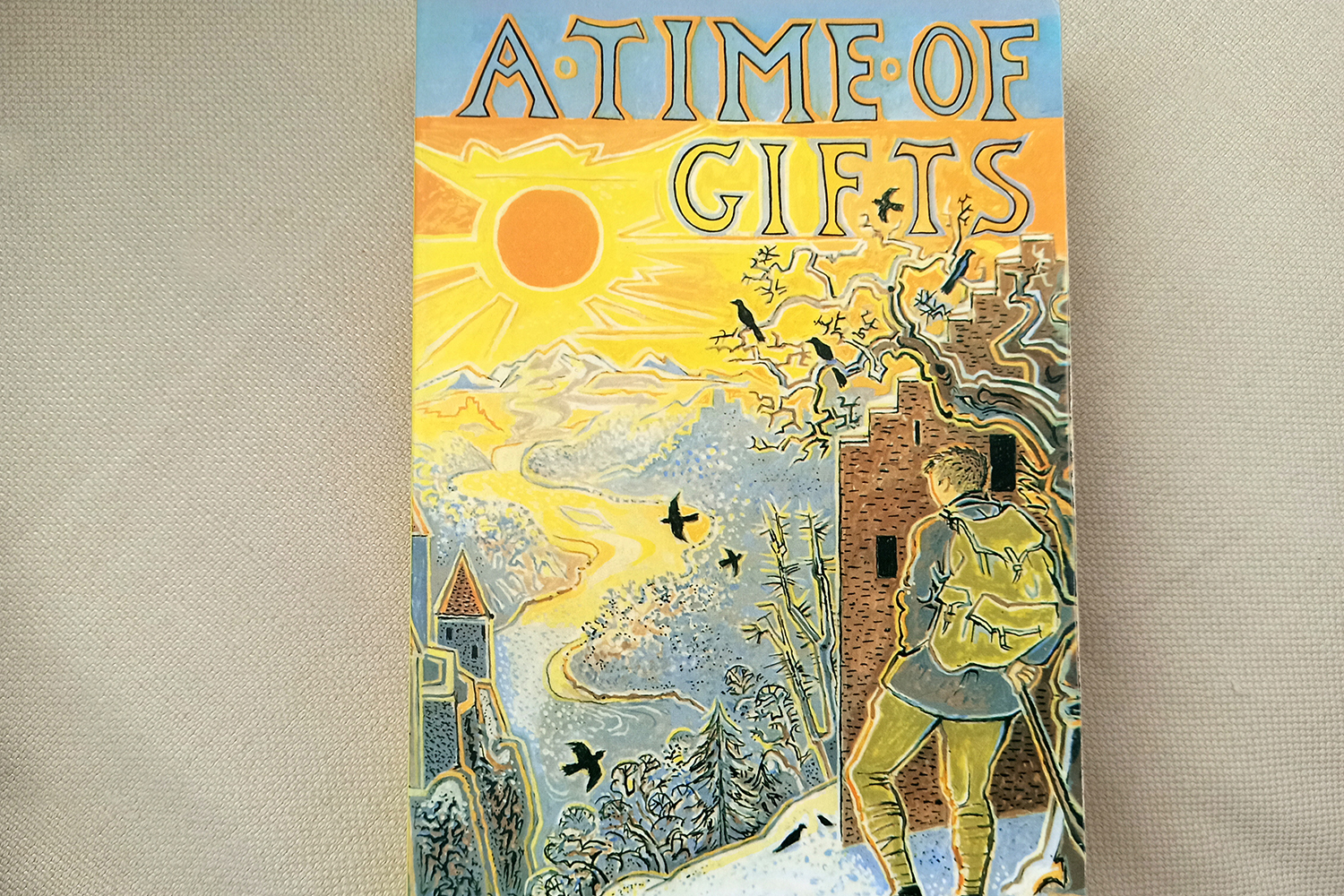
A Time of Gifts by Sir Patrick Leigh Fermor (Photo: Paul Stafford for TravelMag.com)
It’s quite genuinely impossible to create a comprehensive list of the best travel literature. While there’s a lot of replication of these types of lists out there, some books endure precisely because of their importance at the time or to other writers. Although some authors listed below deserve to have more than one of their books featured on this compendium of the greatest travel literature, only their finest work has been included. Consider it your gateway to that writer’s greater oeuvre, if you’ve not read any of their work previously; a reminder if you have. Similarly, non-male writers have often been unfortunately overlooked in the past and some real gems that deserve to be on the best travel literature of all-time lists have been overlooked.
The following aims to redress the balance a little. Consideration is also given to some of the works that defined people who are now better-known for their other exploits, because there’s no greater adventure than that of somebody whose travels inspired them to do something more important or lasting in the world beyond merely moving through space and time for travel’s sake. Here are twenty of the best pieces of travel literature ever written (theoretically), to guide you to your next read, to find inspiration for your next trip, or to simply use as a general reading checklist until your next journey.
A Time of Gifts (1977) – Sir Patrick Leigh Fermor
Writing about Paddy Leigh Fermor in 2020, it would be easy to dismiss the great writer as a privileged individual who was fortunate to stay with royalty and the well-to-do all across Europe as he sauntered from one place to the next. But that would be an awful disservice. A Time of Gifts is the first of a trilogy of books documenting his journey, on foot, from the Hook of Holland to Constantinople (Istanbul). His scholarship and complete immersion in every culture he encountered helped his writing transcend mere travel literature to reach a higher level of writing. You never feel as though he’s an outside observer trying to make sense of the foreign by superimposing his own beliefs. His prose has been described as baroque, and is densely layered with a deep intelligence, understanding and, above all, passion for everything he encounters. The trip itself was undertaken in 1933/4 and the Europe that Fermor uncovers on his peregrinations is one which is beginning to spiral blindly into major conflict. Somehow this aspect makes the random acts of kindness he experiences across Germany and the rest of the continent even more bittersweet.
Publisher: John Murray, Buy at Amazon.com
Arabian Sands (1959) – Sir Wilfred Thesiger
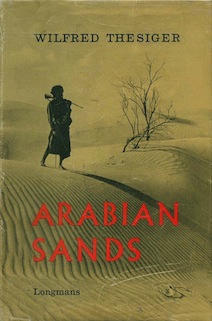
Arabian Sands by Wilfred Thesiger (Photo: courtesy of P.S. Burton via Wikimedia Commons)
Another travel literature classic is Thesiger’s intrepid anthropological look at Bedouin culture and lifestyle in one of the remotest, most inhospitable places on earth: the Arabian Peninsula’s Rub’ al Khali. The setting for the journey is amid the embers of World War II, the repercussions of which were being felt worldwide, including among the Bedouin tribes who’d lived much in the same way they always had until the outside world intruded. In effect, this book offers a snapshot of a remarkable culture that was fast altering, which is what makes this, and many of the books written during the reign of the British Empire, fascinating historical documents. For all of the rightful condemnation of European colonialism, one thing is clear in this book: the fascination and inquisitive nature of the many British scholarly individuals sent to far-reaching corners of the globe created an immensely valuable cache of first-person accounts of cultures and peoples that may not have been recorded otherwise amid the inevitable and inescapable rise of globalisation of the time.
Publisher: Penguin Classics, Buy at Amazon.com
Black Lamb and Grey Falcon (1942) – Rebecca West
West’s voluminous, in-depth examination of Yugoslavia during her time travelling there in 1937 was designed to explore how the country was a reflection of its past. West spent six weeks journeying across the whole region with her husband and meeting eminent citizens along the way. Sadly, by the time the book was published, the Nazis had invaded and the country would never be the same again, which makes this yet another invaluable early-20 th -century document. What sets Black Lamb and Grey Falcon apart though is the level of exquisite detail and research dedicated to the subject. If there was any proof required that travel literature serves an invaluable purpose as a piece of primary historical evidence, then this may well be it.
Publisher: Canongate Books, Buy at Amazon.com
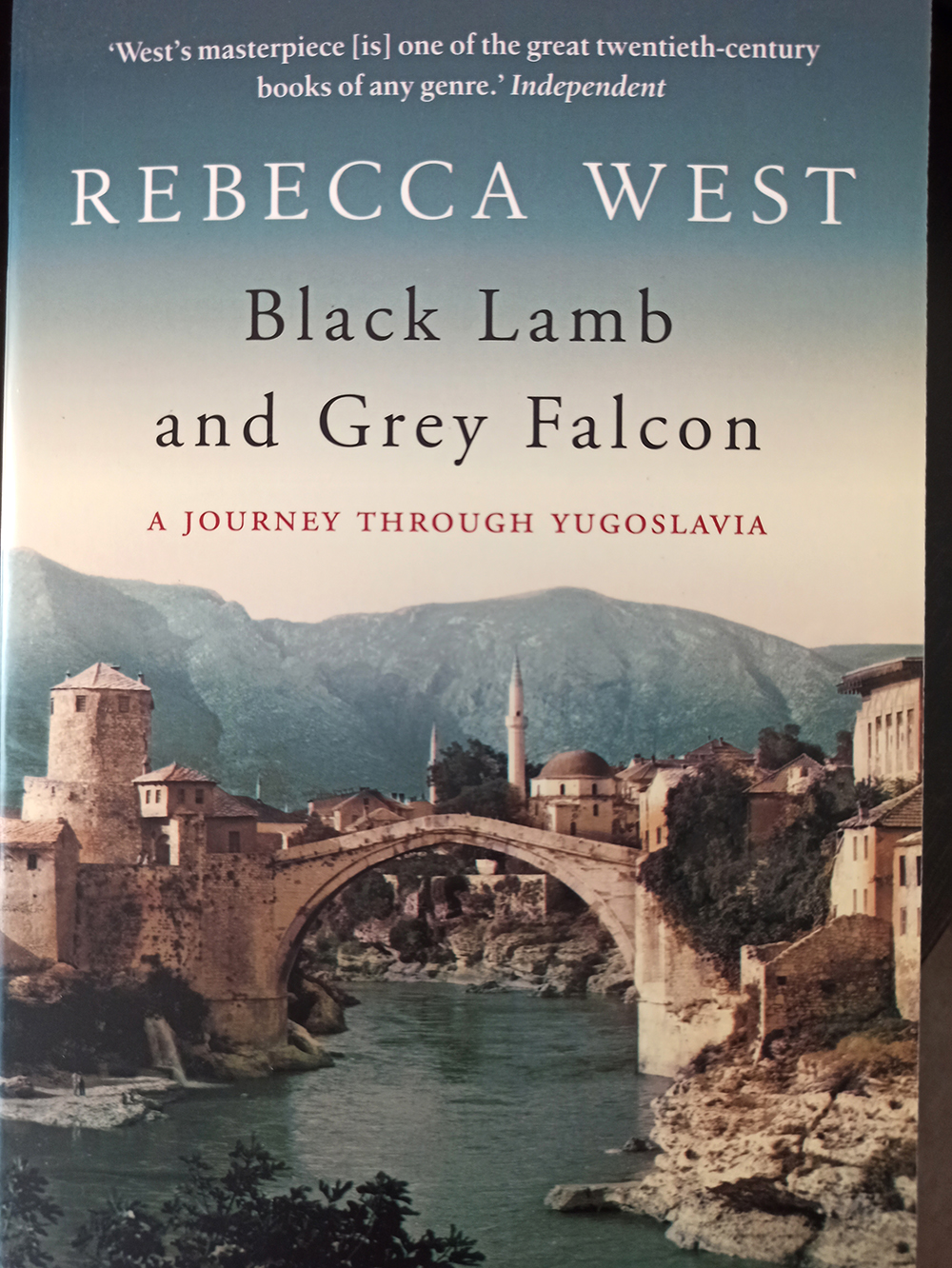
Black Lamb and Grey Falcon by Rebecca West (Photo: Paul Stafford for TravelMag.com)
Border (2017) – Kapka Kassabova
Beautifully written and layered with a real sense of atmosphere, Kassabova’s haunting Border is one of the standout pieces of travel writing to be published in the last decade. Eastern Europe is one of the least explored regions of the world in travel literature. Owing perhaps in part to the secrecy and legacy of distrust brought about by the Cold War, even those who have travelled through as part of longer journeys (Paul Theroux in Pillars of Hercules or Bill Bryson in Neither Here Nor There ) scarcely shed any real light on the region. Here, Kassabova heads back to the nation of her birth (Bulgaria) to explore the fragments of political ideology, faith and race, and the blurred lines between them, that have developed around the border region separating Bulgaria from Greece and Turkey.
Publisher: Granta Books, Buy at Amazon.com
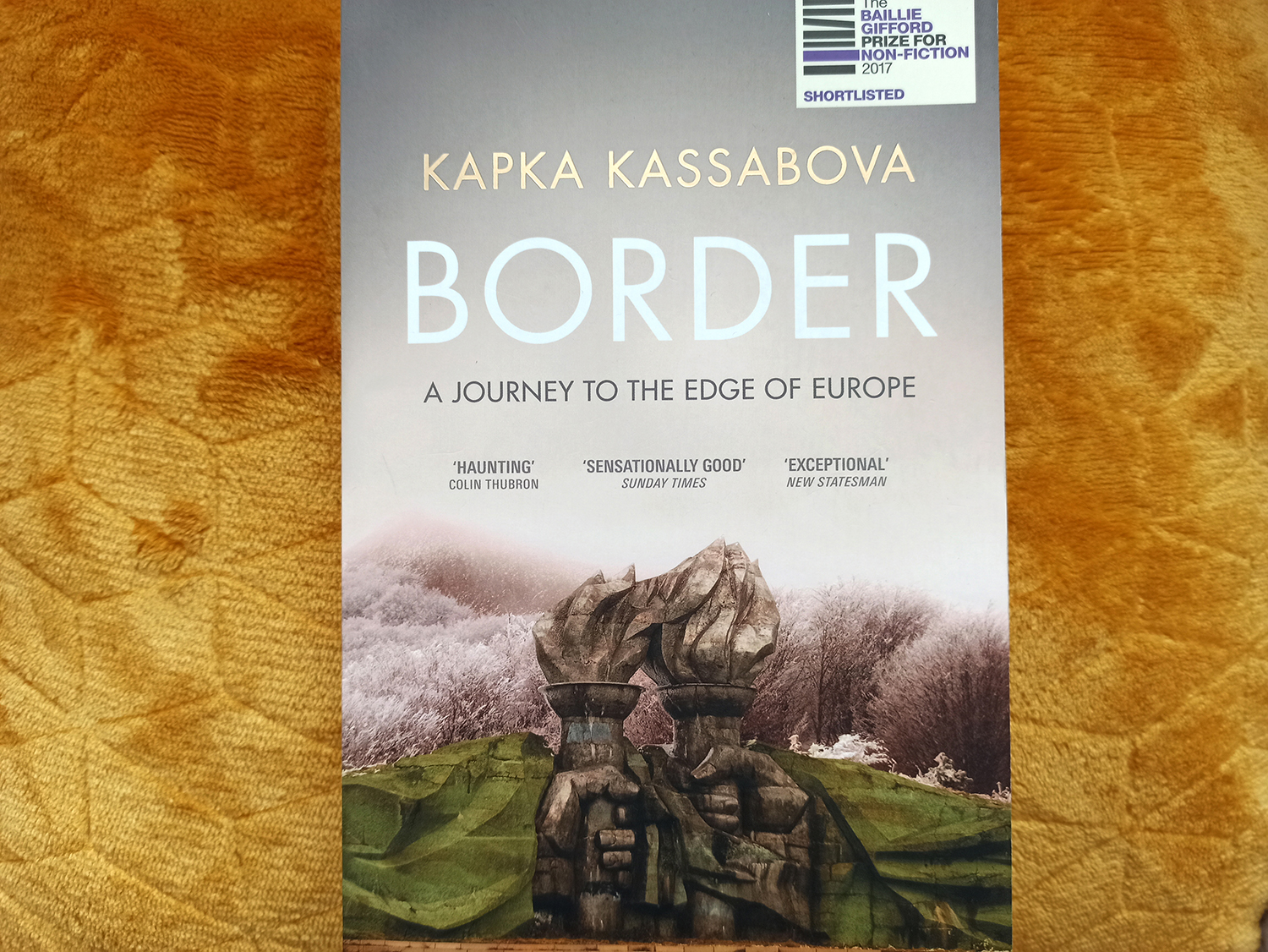
Border by Kapka Kasabova (Photo: Paul Stafford for TravelMag.com)
Down and Out in Paris and London (1933) – George Orwell
While much of travel literature is concerned with the voyage and seeking out the miraculous, the unique and the lesser known, Orwell took another route entirely. Down and Out in Paris and London does exactly what it says on the tin. It is a memoir of impoverished living in two of the world’s great cities, at a time when they were global beacons in terms of both power and culture. Not only does this book, in a very prescient move, eschew the superior tone of academia when examining the other, it also avoids all glamour in those cities, focussing entirely on the poor, the meek and the desperate. In Paris he lives on the edge of eviction, working the kitchens of a fancy establishment, while in London he lives the life of a tramp, moving from one bunkhouse and soup kitchen to the next, living day to day. It is to travel writing what the ‘method’ is to acting.
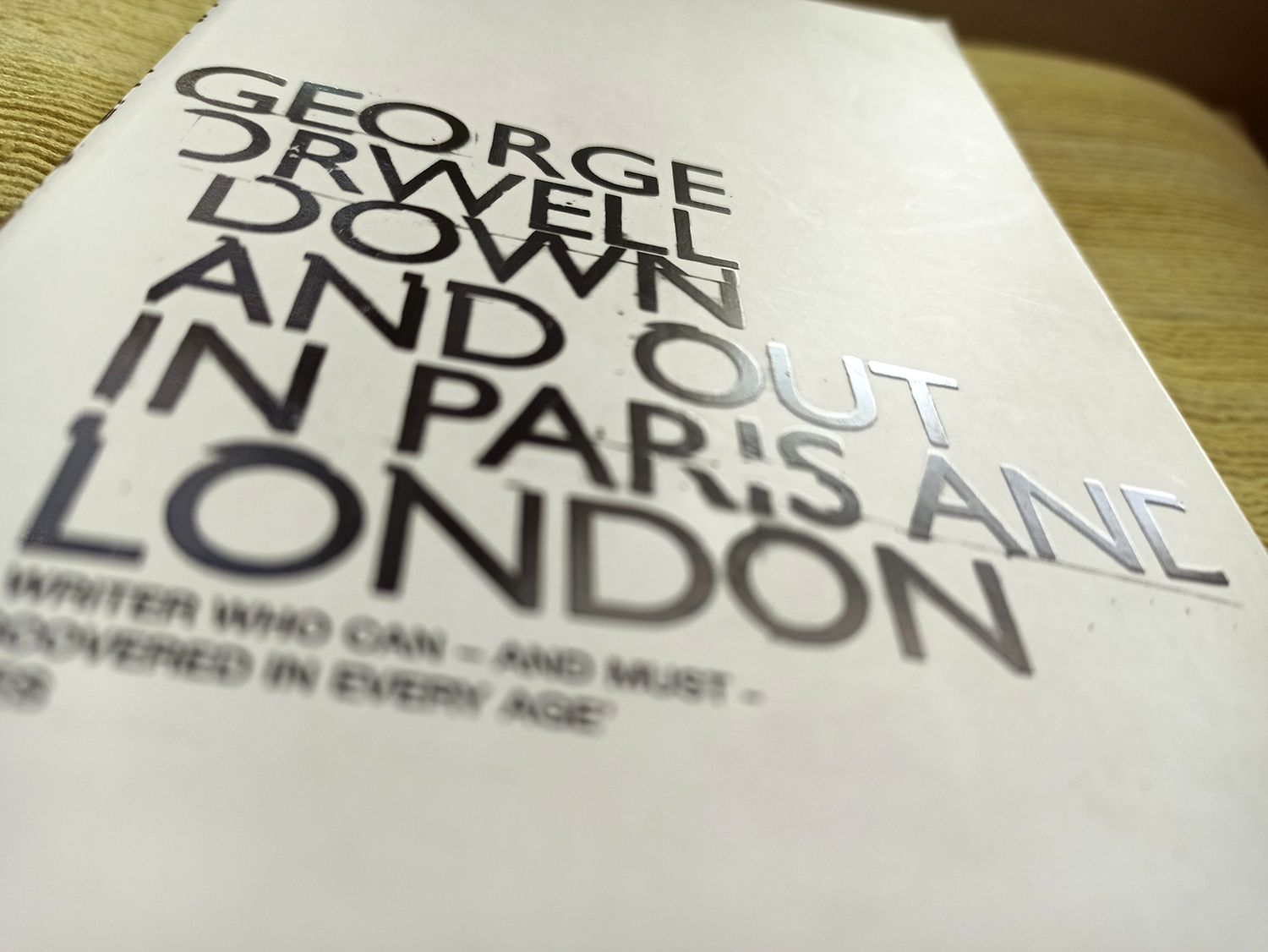
Down and Out in Paris and London by George Orwell (Photo: Paul Stafford for TravelMag.com)
Fear and Loathing in Las Vegas (1972) – Hunter S. Thompson
The outlier on this list (all good lists need one) is Hunter S. Thompson’s delightfully absurd, occasionally apocryphal and downright debauched novel Fear and Loathing in Las Vegas . In it, he created a new way of writing known as gonzo journalism, a style of storytelling which is found most commonly today in some documentaries, where the lines of fact and fiction become blurred and with the journalist placed as a central character in the story. This brilliant commentary on the flexible and inconsistent nature of truth was perfectly epitomised by the increasingly hallucinogenic recollections of protagonist Raoul Duke and Dr. Gonzo. The road trip to Las Vegas ultimately casts important light on an American society gripped by racism and violence (partly why the story is still so powerful today is that America hasn’t yet learned to grow up). As such it remains one of the most intriguing snapshots of America out there, surpassing the work of many strait-laced travel narratives in the process.
Publisher: Random House Inc., Buy at Amazon.com
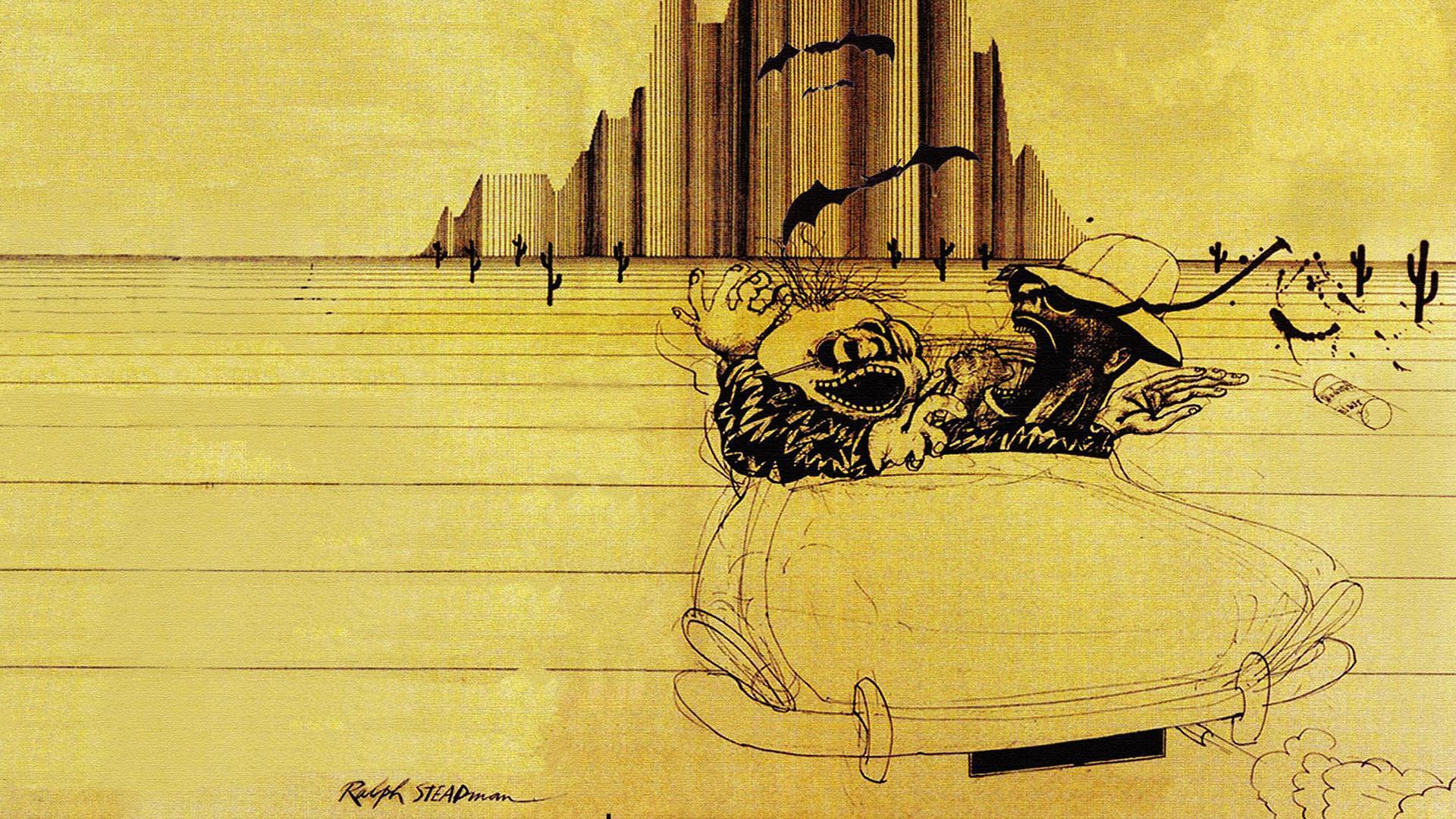
Fear and Loathing in Las Vegas by Hunter S. Thompson (Photo: Mathieu Croisetière via Flickr / CC BY-SA 2.0)
The Great Railway Bazaar: By Train Through Asia (1975) – Paul Theroux
A perfect example of how gonzo journalism began to seep into travel literature comes from what is arguably the most important modern travelogue: The Great Railway Bazaar . In it, Theroux travels from London all the way to Southeast Asia and Japan, via India, then back to Europe via Russia’s Trans-Siberian railway. While Theroux upholds elements of the old school travel narrative – like the scholarly, studious approach and the inquisitive air – his journey by train is as much about the growing backpacker, hippie, trail and the western counterculture that encouraged it. Occasionally the line between fact and fiction is blurred in his writing, but only to better convey his interactions with the people he met. As such, you get a fascinating look at what could be called modern colonialism, whereby the train networks that were often built by colonial rulers in non-European nations across the world, like India and Burma, were now being used by a new generation in the post-colonial era to explore these newly-sovereign nations.
In Patagonia (1977) – Bruce Chatwin
Coming hot on the tail of Theroux’s above book is perhaps the most popular and enduring travel book of all time: In Patagonia . Bruce Chatwin starts it off with a direct nod to writing and journalism’s slide into apocrypha by framing his trip loosely around the search for remains of a “brontosaurus” found in a Patagonian cave, which he first found languishing in his grandparent’s house. The doubtful story behind this find sets him on a road where he aim to unravel various other mysteries whose only connection is geographical, including the final resting place of Butch Cassady and the Sundance Kid, in the wild, empty spaces of South America. It’s a brilliant book formed of loose sections that don’t directly link to one another but has greatly influenced modern travel literature today.
Publisher: Vintage Classics, Buy at Amazon.com
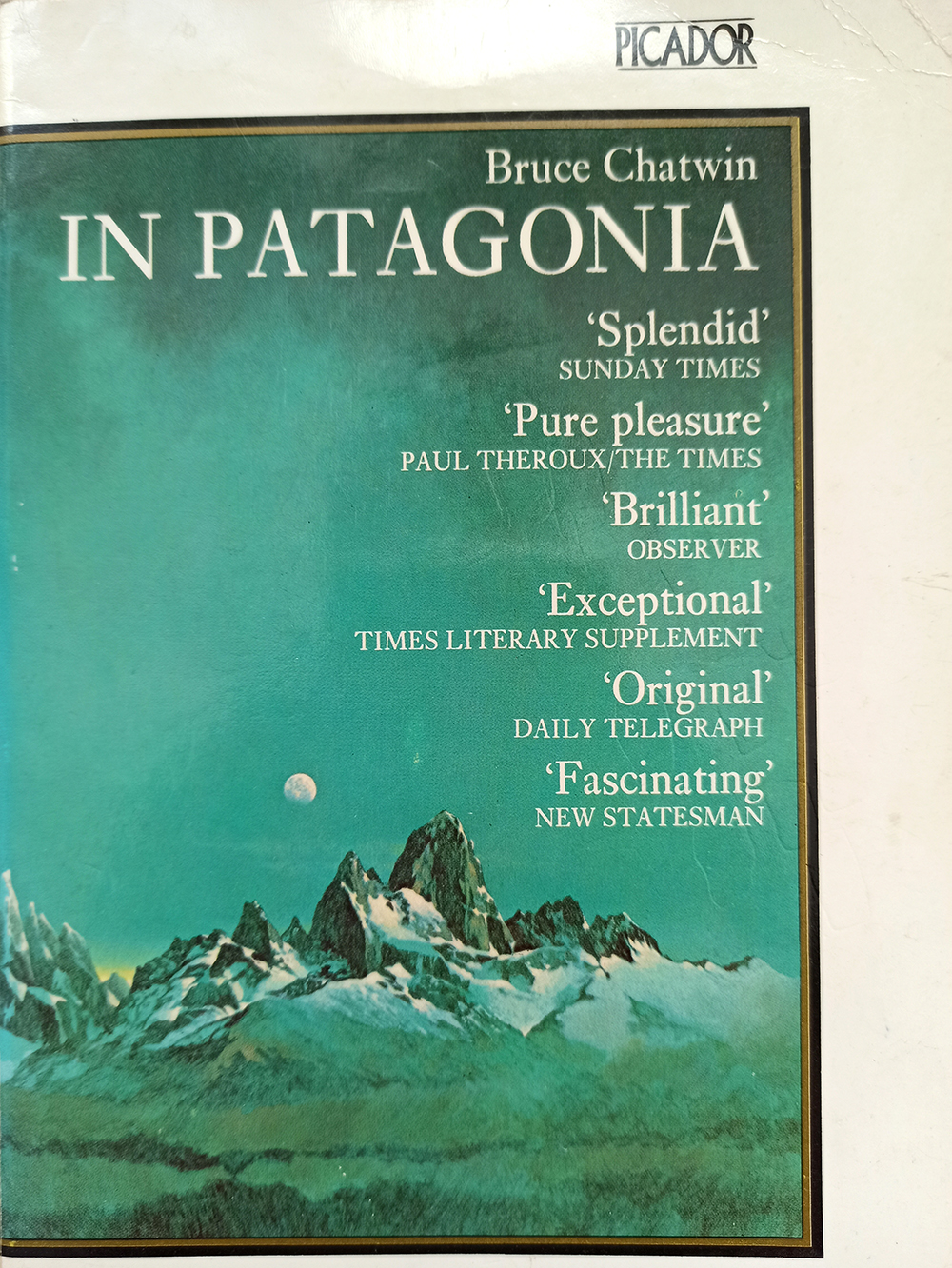
In Patagonia by Bruce Chatwin (Photo: Paul Stafford for TravelMag.com)
In Xanadu (1989) – William Dalrymple
One of the travel writers greatly influenced by Chatwin was William Dalrymple, whose own quest for his first book, In Xanadu , was framed as a search for the fabled palace of Kublai Khan, Xanadu. This type of narrative has always proven to be a ready source of inspiration for some of the better modern travel books; searching for answers to popular mysteries. It has a journalistic bent to it, and manages to sidestep the awkwardness of westerners merely travelling abroad and casting aspersions about the people and cultures they encounter through an imperial gaze, as is the criticism often lodged again some of the earlier works of travel writing. Here, Dalrymple follows in the footsteps of Marco Polo (following footsteps of somebody famous is also a common trope of travel literature) to find the palace. While Dalrymple restores elements of the scholarly, learned approach common to writers like Robert Byron and Paddy Leigh Fermor, you can feel the impact of those 70s writers as well.
Publisher: Flamingo, Buy at Amazon.com
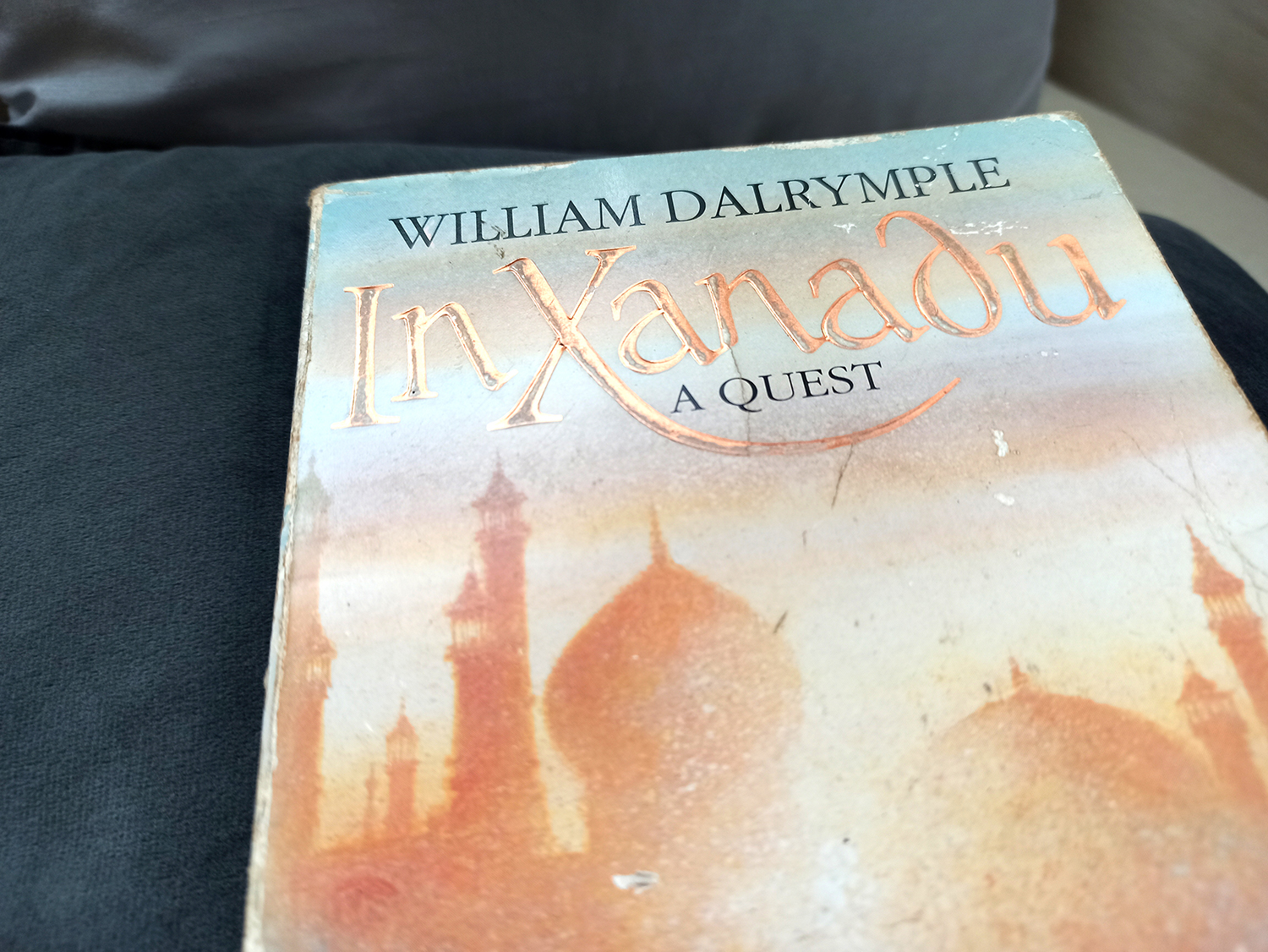
In Xanadu by William Dalrymple (Photo: Paul Stafford for TravelMag.com)
Into the Wild (1996) – Jon Krakauer
Few gripping travel narratives manage to capture the why? of our impulse to roam quite like Jon Krakauer does in Into the Wild . The book is both harrowing and revelatory, while performing a third-person character study on a young man he never actually met. In 1992 Chris McCandless walked into the Alaskan wilderness and never came back out. The book tries to examine what had led him there in the first place, whether he’d intended to return at all, and why he wasn’t the first to try and cut all ties with modern society. Krakauer looks to others, such as Henry David Thoreau ( Walden is the original escape from society book and a must-read for anybody fascinated by this subject), who successfully parted from the rat race, as well as the reasons McCandless initially fled from well-to-do family life years before and never contacted them again in his search for something more profound and meaningful. While most readers may disagree with McCandless’s methods, his motives seem far more familiar and relatable.
Publisher: Pan Macmillan, Buy at Amazon.com
The Living Mountain (1977) – Nan Shepherd
Perhaps one of the finest pieces of nature writing ever committed to paper is The Living Mountain by Nan Shepherd. Sadly, it’s also one of the most underrated books. The research for her book was undertaken in and around 1942, during the Second World War, which didn’t trouble the wilds of Scotland too badly. Here, the stark beauty of the Cairngorms seems to mirror the harsh reality of war. But Shepherd’s deep examination of the various microcosms of life that thrive on the region’s mountains is really a poem that exalts life. It’s a celebration of survival and endurance. Her wonderful book almost never made it to print, lying in a drawer for decades until a friend read it and encouraged her to seek out a publisher. We’re lucky it did.
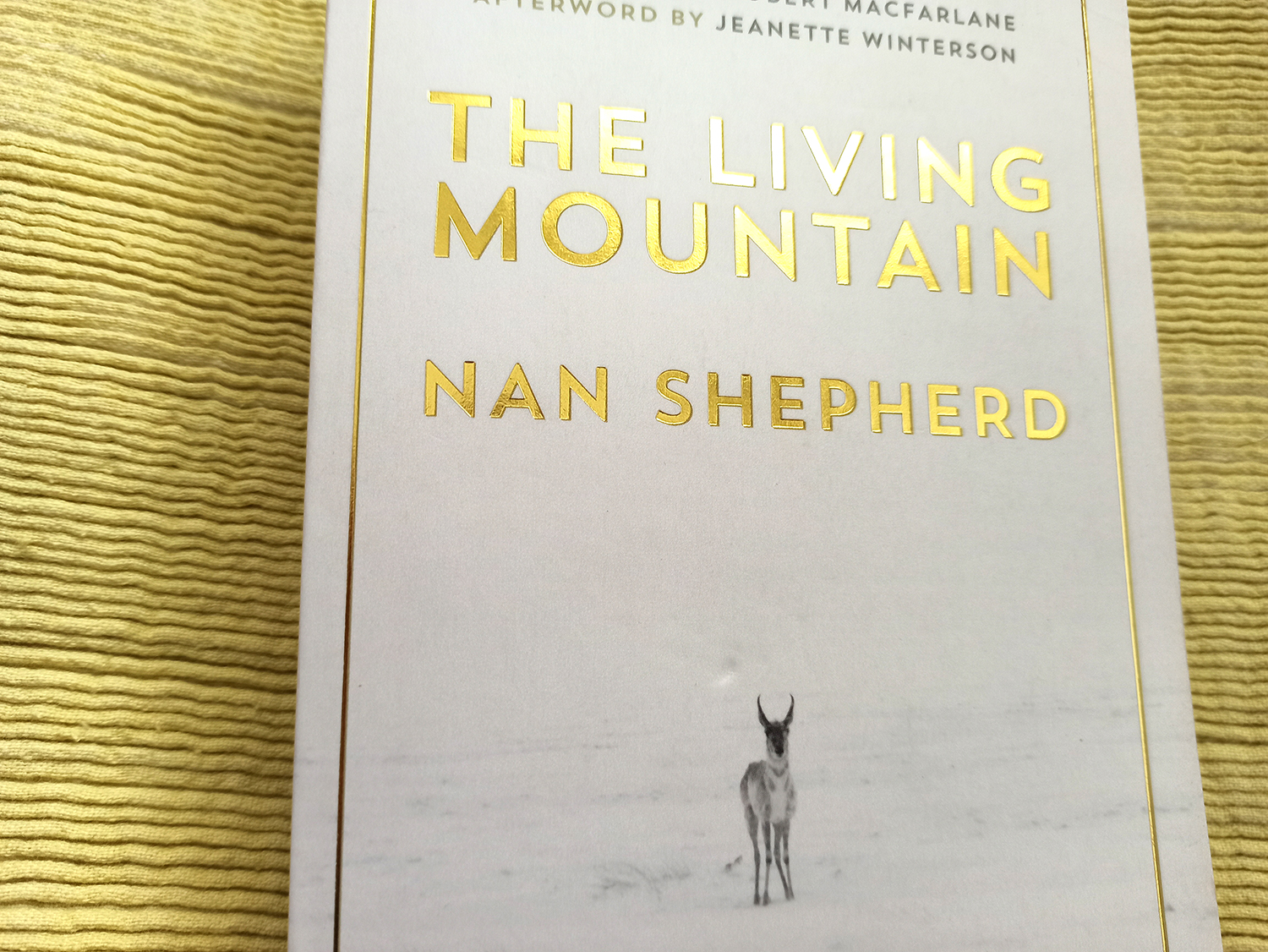
The Living Mountain by Nan Shepherd (Photo: Paul Stafford for TravelMag.com)
The Motorcycle Diaries (1992) – Che Guevara
Even if Che Guevara never became the revolutionary and icon of a generation that he did, The Motorcycle Diaries is a fascinating first-person account of travel’s capacity to broaden the mind. The young medic Ernesto ‘Che’ Guevara sets out from his home in Buenos Aires with his friend Alberto Granado sharing a motorcycle ‘La Poderosa’ and in his pointed recollections, you can almost feel Che’s ideological shift. He sees poverty and pain and beauty in the poor communities they visit, and through this, we learn a lot about how Guevara became a key player in the Cuban Revolution. But it’s also a beautiful rumination about the paths we take in life and the importance of curiosity.
Publisher: Perennial, Buy at Amazon.com
Notes from a Small Island (1995) – Bill Bryson
You can’t really write a top travel literature list and omit Bill Bryson. He’s one of the finest travel writers still producing books. Notes from a Small Island is particularly intriguing because, while most of the books that make any top travel literature list tend to be written by Brits, this is a book about Britain, written by an American. And it’s a delightfully observed book at that, pinpointing the eccentricities and unusual aspects of the island nation that most Brits would never think twice about, but when seen through foreign eyes suddenly become absurd. Bryson is especially gifted at making even the most mundane things seem funny. His books neatly balance thorough research and scholarship with humour and keen observation, effectively amalgamating all of the key aspects of travel literature into one inimitable style.
Publisher: Black Swan, Buy at Amazon.com
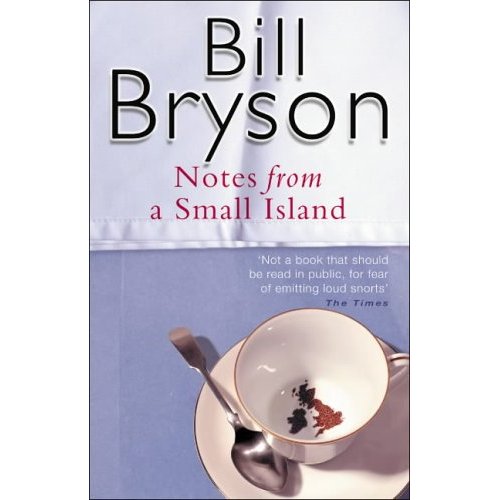
Notes from a Small Island by Bill Bryson (Photo: Wolf Gang via Flickr / CC BY-SA 2.0)
On the Road (1957) – Jack Kerouac
Before modern travel literature’s more self-aware phase that started in the 1970s, we had what essentially kick-started the great 20 th -century American cultural upheaval: The Beat Movement. Kerouac was writing about sexual promiscuity, wanton drug use and giving the establishment the middle finger way before it was cool to do so. Well-educated and moving in New York’s literary circles, Kerouac’s thinly-veiled characters in On the Road (substituting Old Bull Lee for William S. Burroughs, Dean Moriarty for Neal Cassady, Carlo Marx for Allen Ginsberg, and Sal Paradise for himself) are painted into a quasi-fictional account of his cross-country jaunts in the late 1940s. The post-war world was much-changed; the white picket fence America with its Jim Crow segregation and uptight Bible-belt hypocrisy were no longer acceptable. Around the same time, J.D. Salinger was branding it phoney, while Kerouac was realising this in his own way, by embracing escapism and drugs. On the Road still resonates today; both the book and the Beats gave licence to a generation of youths to question the oppressive system that became all too obvious in the 60s.
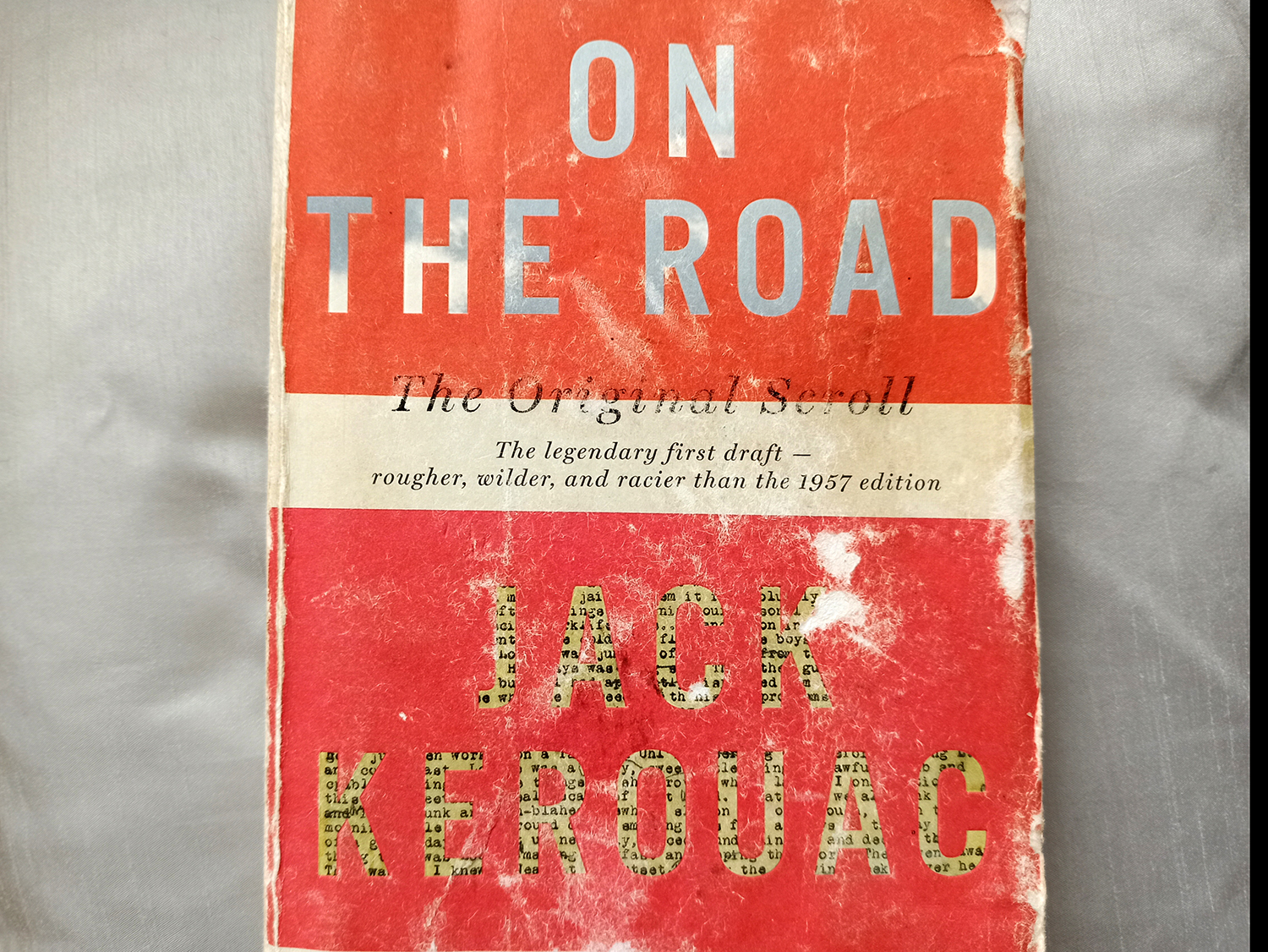
On The Road by Jack Kerouac (Photo: Paul Stafford for TravelMag.com)
The Road to Oxiana (1937) – Robert Byron
Much of the Afghanistan and Iran of Byron’s writing has disappeared, making the precision of his prose all the more valuable. The Road to Oxiana has all the classic elements of earlier travel narratives in it, scholarship, keen observation but also the kind of humour and casual presentation that would become far more popular in the writing styles common to the latter half of the 20 th century. Byron’s constant use of Marjoribanks to replace the name of the Persian ruler of the time was designed to evade censure or punishment in case his notebooks were confiscated and read. The humour of this rebelliousness is not lost when read today, even if some of his style may feel a little bit dated now. His architectural descriptions may be among some of the finest in all of travel literature.
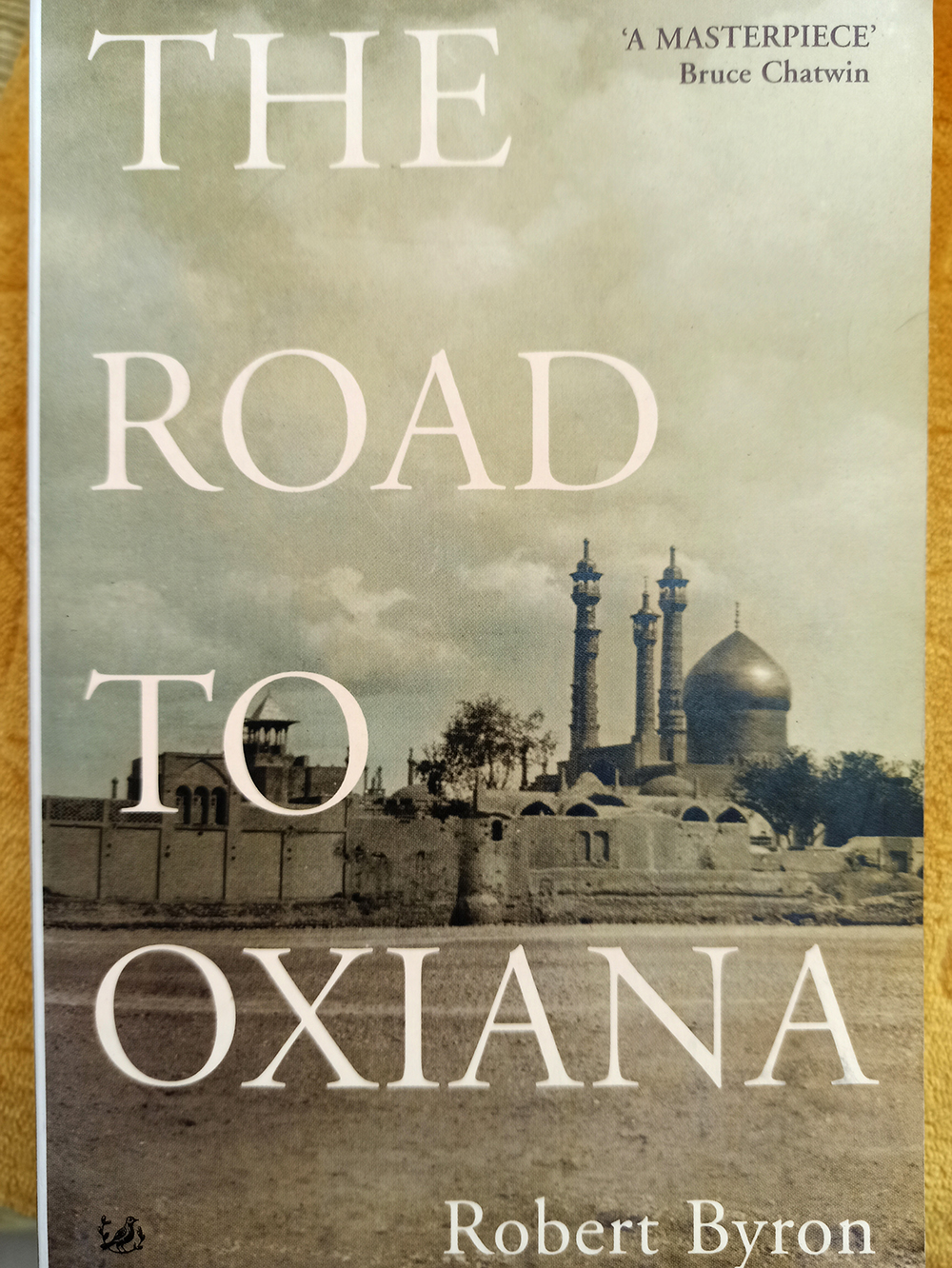
The Road to Oxiana by Robert Byron (Photo: Paul Stafford for TravelMag.com)
Rome and a Villa (1952) – Eleanor Clark
Because the majority of travel writing is crafted around a voyage or quest of some sort, we expect the movement to transcend places, countries even. What Clark does exceptionally well in Rome and a Villa is offer an in-depth depiction of just one city: Rome. This book, although not particularly tied to or crafted around any one specific idea, offers a deeper understanding of The Eternal City based on Clark’s explorations, often on foot. Indeed, her scholarly treatment of the Italian capital brings the city’s rich, storied past to life in imaginative and illuminating ways that offer fresh insight on a place that we may easily think has already been well covered already. Which goes to show that places change with the times offering an opportunity for fresh perspectives. There’s nowhere that is dull or too well-known in travel writing if handled by the right scribe.
Publisher: Harper Perennial, Buy at Amazon.com
Shadow of the Silk Road (2007) – Colin Thubron
Colin Thubron’s fascination with worlds that are ostensibly closed off to westerners has often led him into places that many others wouldn’t think to go. He visited China before it had opened up to the world, and the same goes for Soviet Russia. In Shadow of the Silk Road Thubron exhibits why his books are perhaps the most masterfully crafted of all contemporary travel literature. His pacing and descriptive writing are exquisite, particularly in this book, in which he journeys from Xi’an to Antakya in Turkey following the old ways, through Central Asia, once known as the Silk Road. The worlds he uncovers and the people he meets are painstakingly woven into a rich text, much like a hand-woven Persian rug, that is one of the most evocative pieces of travel writing out there.
Publisher: Vintage, Buy at Amazon.com
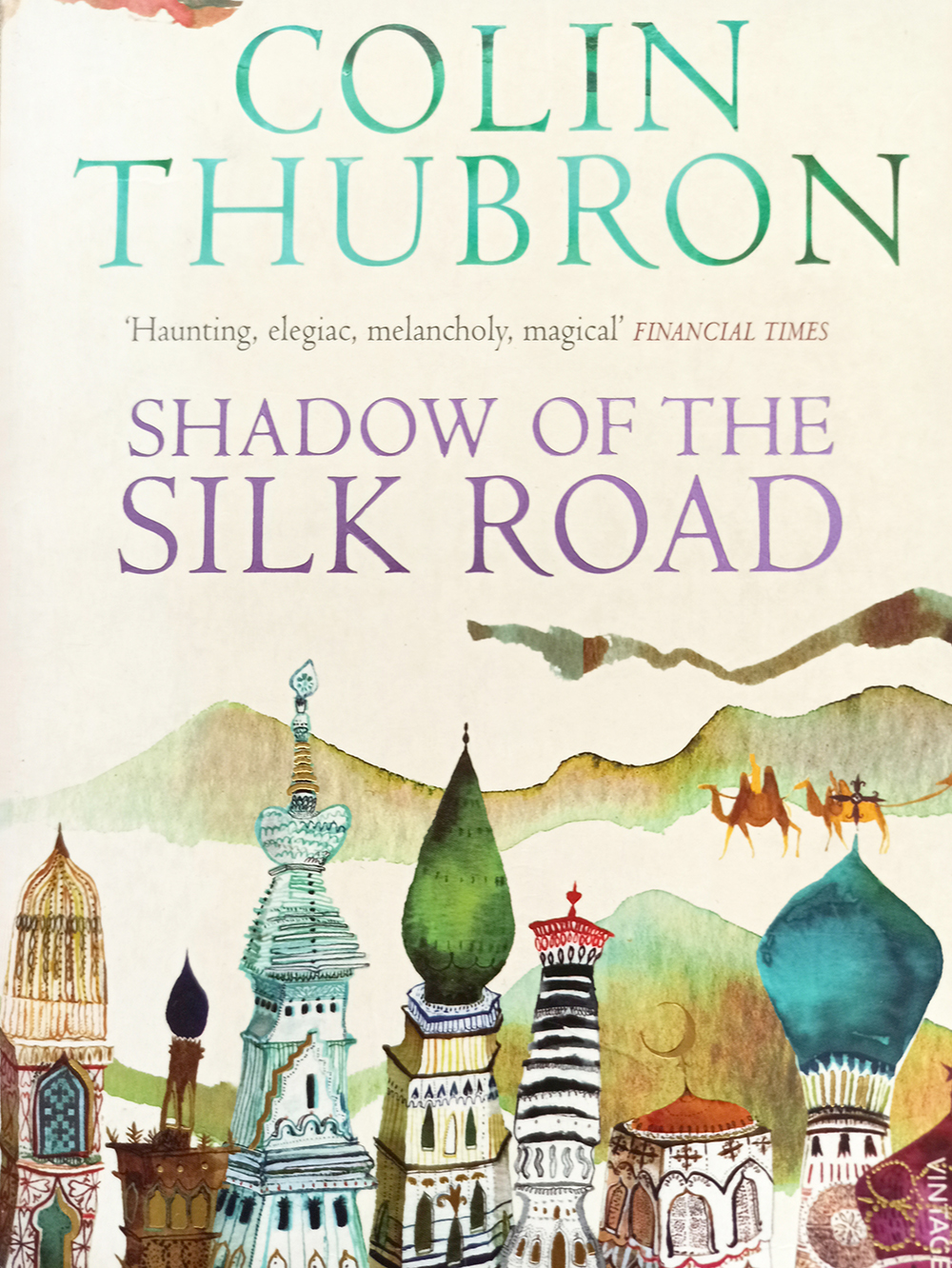
Shadow of the Silk Road by Colin Thubron (Photo: Paul Stafford for TravelMag.com)
Travels with Myself and Another (1979) – Martha Gellhorn
Even if Martha Gellhorn was writing today, she would rightly be upheld as one of the great journalists, but given that she was doing it decades ago, often better than her counterparts in a male-dominated field, is even more remarkable. The ‘Another’ that accompanies Gellhorn through much of the book was her former husband Ernest Hemingway, but the book also includes memoir from Africa in which she voyages solo. The book is presented as a collection of essays, a format that has become increasingly common in travel writing and which effectively allows the book to focus on more than one topic. Gellhorn’s writing includes keen observation, lively wit and a really sharp political outlook.
Publisher: Eland Publishing Ltd., Buy at Amazon.com
The Valleys of the Assassins (1934) – Freya Stark
Stark was an incredible human being. Fluent in numerous languages, including Farsi, she travelled the world often alone at a time when even men undertaking such journeys were considered intrepid. Stark was particularly drawn to the Middle East and was able to recount the stories of the women there, living in devout Muslim communities, in a way no man would ever have been able to do. She also discovered regions that had not been explored by Westerners before, including the Valley of the Assassins, which forms the basis of this eponymous book, receiving the Royal Geographical Society’s prestigious Back Award in the process. She continued to write books well into her 90s (releasing work over six decades) and died in Italy at the age of 100.
Publisher: Modern Library Inc., Buy at Amazon.com
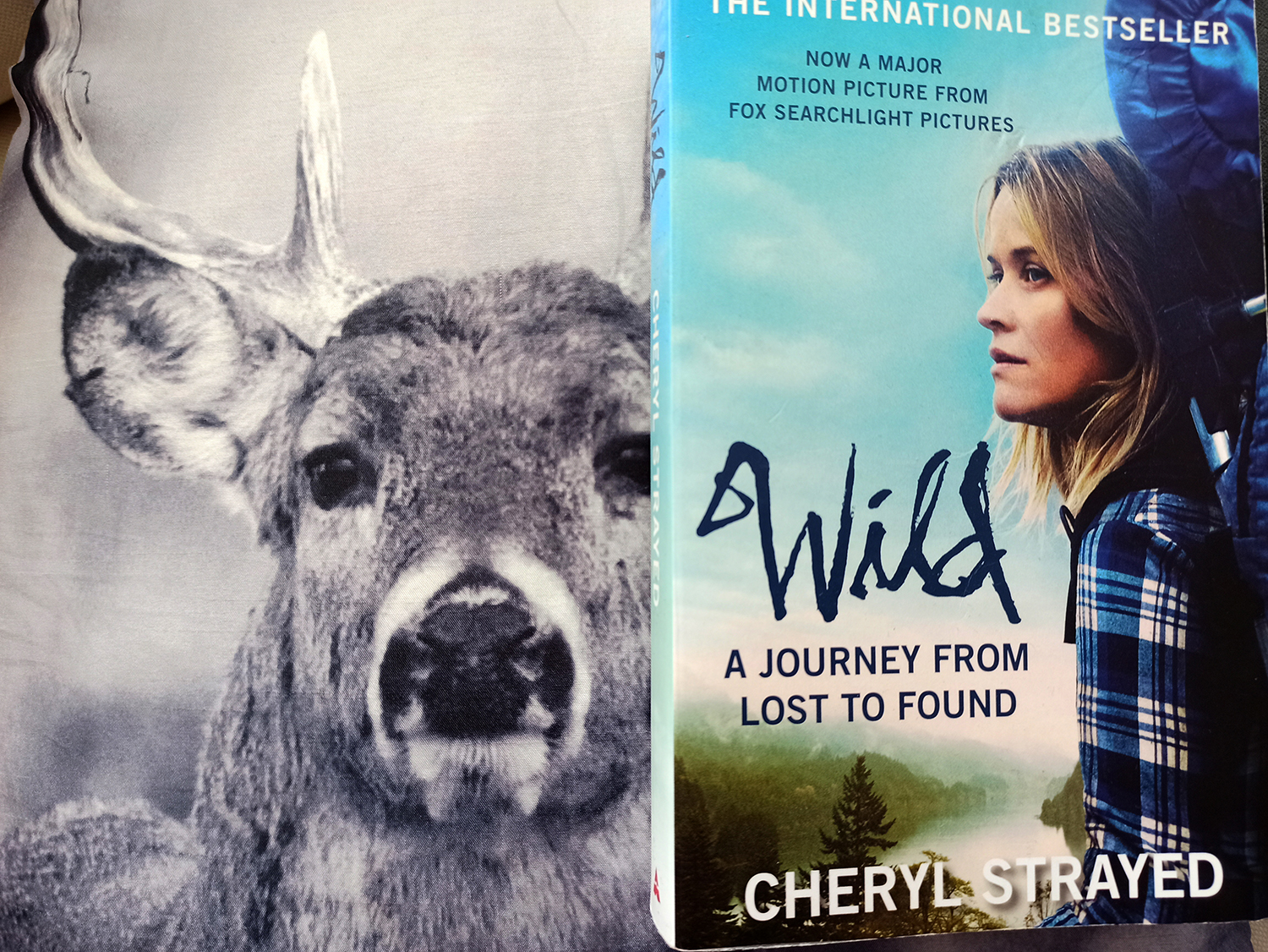
Wild by Cheryl Strayed (Photo: Paul Stafford for TravelMag.com)
Wild: From Lost to Found on the Pacific Crest Trail (2012) – Cheryl Strayed
Some may question this popular book’s inclusion on a list of the all-time greats, but it really has all the ingredients of a classic exploration of the human psyche. The physical duress that Strayed experienced on her hike of the Pacific Crest Trail (which runs from California’s border with Mexico to Washington’s border with Canada), and the gradual loss of her toenails as a result, is depicted with visceral precision. Her self-inflicted pain mirrors the mental health and dependency issues that plagued her before embarking on the feat, and in the process, we discover the restorative power of travel, of meeting new people and of forcing ourselves to step beyond our comfortably-positioned boundaries. Like any good travel literature, this book sheds light on why travel is so addictive, powerful and pertinent. Just like all the other books on this list, you’ll finish it wanting to plan your next trip.
Publisher: Atlantic Books, Buy at Amazon.com
Latest Articles
- 10 Unmissable London Attractions for First-Time Visitors July 5, 2024
- Burgunday: 5 of the Best Beaune Wine Tastings & Tours July 5, 2024
- Best Way to Visit The Last Supper in Milan July 5, 2024
- Where to Find Stylish Coliving Spaces in Austin July 4, 2024
- A Comparison of Huacachina Day Tours from Lima July 4, 2024
The Best Books of 2022
This Year's Must-Reads
The Ten Best Books About Travel of 2022
After two years of limited travel opportunities, we’re ready to explore the world once more
Jennifer Nalewicki
Travel Correspondent
:focal(800x602:801x603)/https://tf-cmsv2-smithsonianmag-media.s3.amazonaws.com/filer_public/3b/7e/3b7e7ae6-49a4-4bbd-a363-c799d3044e79/travel-booklist.jpg)
Traveling is about much more than your destination—it’s about the people who live there, and for many travelers it’s the experiences they have alongside locals that are the most memorable. Take, for instance, the story of a journalist who lived with an Iñupiaq family of whale hunters in Alaska before setting off with her toddler to follow the gray whale migration, or a young woman who traveled solo 6,800 miles by bike from Europe to the Middle East, often turning to local farmers and villagers to help her navigate unfamiliar territory. Both women adapted their experiences into books where they relive the laughter (and the pain) they shared with members of the local communities that go far beyond anything found in a guidebook.
Here are ten travel book releases from 2022 that are inspiring us to dust off our passports and experience new locales alongside the people who make them unforgettable.
The Catch Me If You Can: One Woman’s Journey to Every Country in the World by Jessica Nabongo
Visiting all 195 countries in the world is no small feat and a goal that most people can only dream of. Luckily, armchair travelers can live vicariously through author Jessica Nabongo’s epic worldwide adventure in her book The Catch Me If You Can . From retelling the blow-by-blow of a scooter accident in Nauru (an island nation in Micronesia that also happens to be the world’s least visited country) and dog-sledding in Norway to swimming with humpback whales in Tonga and learning the art of making traditional takoyaki (octopus balls) in Japan, the 38-year-old, who’s also the first Black woman to travel to every nation in the world, introduces readers not only to bucket-list-worthy places but also to the people who live there.
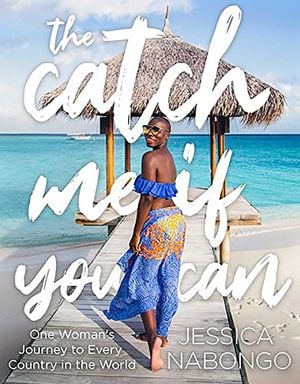
The Catch Me If You Can: One Woman's Journey to Every Country in the World
In this inspiring travelogue, celebrated traveler and photographer Jessica Nabongo―the first Black woman on record to visit all 195 countries in the world―shares her journey around the globe with fascinating stories of adventure, culture, travel musts, and human connections.
Soundings: Journeys in the Company of Whales by Doreen Cunningham
In an everchanging world threatened by climate change, whales have learned to adapt. Irish British author Doreen Cunningham takes that notion to heart in Soundings , which blends science and nature writing with memoir as she shares her own experiences as a struggling single mother and journalist. Together with her toddler, she follows the migration route of gray whales as they make the long journey between Mexico and Alaska (where years earlier she spent time with Iñupiaq whalers), experiencing from a distance the familial bonds, not unlike her own close relationship with her son, of the marine mammals. “What at first seems a reckless, near-mystical pursuit of an imagined being leads her to find a human pod of her own,” writes the Guardian ’s Edward Posnett.
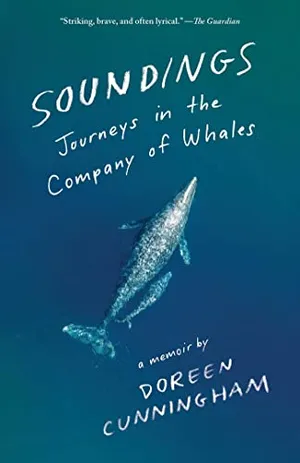
Soundings: Journeys in the Company of Whales: A Memoir
A story of courage and resilience, Soundings is about the migrating whales and all we can learn from them as they mother, adapt, and endure, their lives interrupted and threatened by global warming.
Bridges of the World by Giancarlo Ascari
Italian cartoonist and journalist Giancarlo Ascari has a degree in architecture, so it’s no wonder why he’s fascinated with bridges. Packed with illustrations by Pia Valentinis , Ascari’s book Bridges of the World highlights recognizable spans like the brightly painted Golden Gate Bridge in San Francisco and the Victorian Gothic-style Tower Bridge in London, while also highlighting less obvious examples, including the stretch of wire French high-wire artist Philippe Petit strung between the Twin Towers in New York City and dangerously crossed in 1974. In total, Bridges of the World features 50 human-made and natural wonders accented by interesting facts and anecdotes.
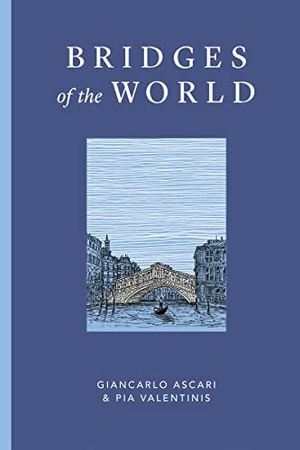
Bridges of the World
Fifty bridges from all over the world to be crossed on foot or with one's imagination.
Black Lion: Teachings from the Wilderness by Sicelo Mbatha
When Sicelo Mbatha was a child, he watched in horror as a crocodile viciously attacked his cousin. Rather than shy away from the cruel realities of nature, the Zulu author, who goes by the nickname Black Lion, confronted them head on to become a wilderness guide. Over the years, he’s volunteered at Imfolozi Game Reserve in KwaZulu-Natal, a province located along the coast of South Africa. Because of his childhood encounter, he has learned to approach the savanna and the lions, elephants and other animals that inhabit it from a spiritual perspective. He has since fostered a deeper connection with the local fauna and hopes to pass that mindset on to visitors on his guided excursions as well as readers of Black Lion , his debut book.
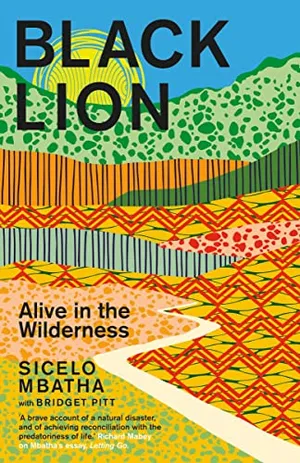
Black Lion: Alive in the Wilderness
Wilderness guide Sicelo Mbatha shares lessons learnt from a lifetime’s intimate association with Africa’s wildest nature.
The Writer’s Journey: In the Footsteps of the Literary Greats by Travis Elborough
Ask any writer, and they’ll likely confirm that a story’s setting plays as critical a role as its plot. Case in point: Would Bram Stoker’s Gothic novel Dracula be as compelling if it wasn’t set in macabre Transylvania? Like Stoker, many literary greats were inspired by places they traveled to before sitting down to write. In The Writer’s Journey , British author and cultural commentator Travis Elborough explores 35 experiences around the globe that influenced authors and helped shape their writings, including Herman Melville’s perilous 1841 whaling voyage on the Atlantic and Jack Kerouac’s cross-country escapades in the late 1940s over “all that raw land that rolls in one unbelievable huge bulge over to the West Coast.”
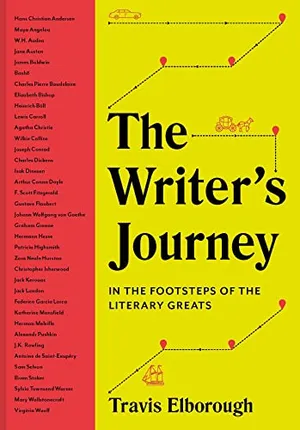
The Writer's Journey: In the Footsteps of the Literary Greats
Follow in the footsteps of some of the world’s most famous authors on the journeys which inspired their greatest works in this beautiful illustrated atlas.
South to America: A Journey Below the Mason-Dixon to Understand the Soul of a Nation by Imani Perry
What comes to mind when you think of the American South? The Civil War? College football? Gone with the Wind ? Imani Perry , an award-winning author and African American studies professor at Princeton University, tackles all of these topics in her New York Times best seller South to America . Combining history with culture, Perry brings readers on an eye-opening journey south of the Mason-Dixon line, from her native Alabama to Appalachia, focusing not only on past civil atrocities that have scarred the region and the country as a whole, but also on the immigrant communities, artists and innovators leading the way to a brighter future.
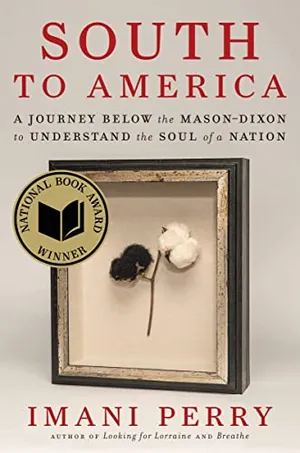
South to America: A Journey Below the Mason-Dixon to Understand the Soul of a Nation
An essential, surprising journey through the history, rituals, and landscapes of the American South—and a revelatory argument for why you must understand the South in order to understand America
The Slow Road to Tehran: A Revelatory Bike Ride Through Europe and the Middle East by Rebecca Lowe
While the Syrian War rattled the Middle East in 2015, journalist Rebecca Lowe embarked on a yearlong 6,800-mile grand tour via a bicycle she affectionately named “Maud” from her home base of London to Tehran. During her epic ride, she cycled through Turkey, Lebanon, Jordan, Egypt, Sudan and the Gulf, often relying on the knowledge and assistance of farmers, villagers and other locals she met along the way. For her travel memoir The Slow Road to Tehran , she weaves her own experiences as a woman traveling alone through the mountains and deserts of the Middle East with tales about the people and cultures she encountered. Tom Chesshyre of the Critic calls it “modern travel writing at its very best, full of vim and vigor, painstakingly researched, laced with wry humor, political (without being too political), adventurous and rich with anecdote.”
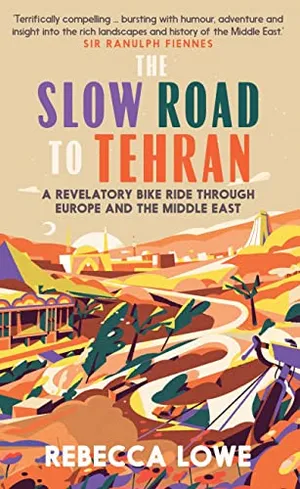
The Slow Road to Tehran: A Revelatory Bike Ride through Europe and the Middle East
One woman, one bike and one richly entertaining, perception-altering journey of discovery.
Antarctica: A History in 100 Objects by Jean de Pomereu and Daniella McCahey
On January 17, 1773, Captain James Cook made the first crossing into the Antarctic Circle aboard the Royal Navy sloop Resolution . Now, on the 250th anniversary of this monumental journey, historical geographer Jean de Pomereu and historian Daniella McCahey have come together to highlight 100 objects (culled from the National Maritime Museum in London, the Library of Congress, the Smithsonian’s National Museum of American History and many other collections) that define the world’s least-visited continent. Items that made the cut and are featured in their co-written book Antarctica include the tiny, 22-foot lifeboat used by Irish explorer Ernest Shackleton and his crew after their ship struck ice and sunk in 1915; a sealing club fashioned out of the penis bone of an elephant seal; and skis that Norwegian explorer Olav Bjaaland used in the early 1900s.
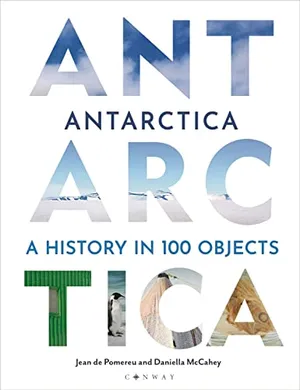
Antarctica: A History in 100 Objects
This stunning and powerfully relevant book tells the history of Antarctica through 100 varied and fascinating objects drawn from collections around the world.
This Contested Land: The Storied Past and Uncertain Future of America’s National Monuments by McKenzie Long
Despite their federal designation as protected land, national monuments in the United States come under threat. Just look at Bears Ears National Monument, a 2,125-square-mile expanse of red sandstone, cliff dwellings and petroglyphs in the Utah desert held sacred by many Native Americans. The Trump administration decreased the monument in size by 85 percent to allow for oil drilling (only for the Biden administration to later restore its protections). In her debut book, This Contested Land , author and graphic artist McKenzie Long sets out by ski, foot and fin to explore 13 sites across the country, including Maine’s Katahdin Woods and Hawaii’s Papahānaumokuākea Marine National Monument, in a series of compelling essays that convey the importance of protecting these natural resources from the threats of development and climate change.
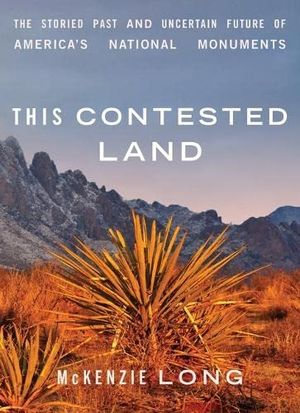
This Contested Land: The Storied Past and Uncertain Future of America’s National Monuments
One woman’s enlightening trek through the natural histories, cultural stories, and present perils of 13 national monuments, from Maine to Hawaii
Crossed Off the Map: Travels in Bolivia by Shafik Meghji
The world’s highest metropolis is La Paz, Bolivia, home to two million inhabitants living at 13,600 feet above sea level (higher than Mount Fuji). However, not many people know this fact, nor much about the South American country, for that matter. In Crossed Off the Map , author, travel expert and Amnesty International editorial consultant Shafik Meghji introduces readers to the landmarks, history and current issues of Bolivia. Fellow travel author Tim Hannigan says in the book blurb, “Shafik Meghji is a natural travel writer with a ready mastery of history, anecdote and atmosphere, and [this] is the best sort of travel book—an informed and informative portrait of Bolivia that doubles as a vicarious journey for readers on an epic scale, through high mountains, across the altiplano [high plains] and into deep tropical forests.”
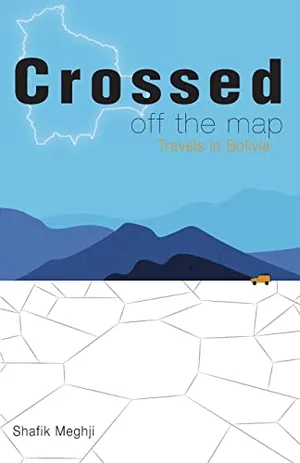
Crossed Off the Map: Travels in Bolivia
Blending travel writing, history and reportage, Crossed off the Map: Travels in Bolivia journeys from the Andes to the Amazon to explore Bolivia’s turbulent past and contemporary challenges.
Get the latest Travel & Culture stories in your inbox.
A Note to our Readers Smithsonian magazine participates in affiliate link advertising programs. If you purchase an item through these links, we receive a commission.
Jennifer Nalewicki | | READ MORE
Jennifer Nalewicki is a Brooklyn-based journalist. Her articles have been published in The New York Times , Scientific American , Popular Mechanics , United Hemispheres and more. You can find more of her work at her website .
- Great Stories
- Learn about the Solas Awards for the best travel stories of the year
- Read some of the best travel writing today
- Here's how to enter the competition for cash awards and publication
- Discover new writers and great reads with Travelers’ Tales books
Win Cash and Publication Many Categories for True Stories Submit Your Story for the Solas Awards Here
Eighteenth Annual Solas Awards Winners Announced
The Travelers’ Tales editors and this year’s returning judge Scott Dominic Carpenter announced the winners of the Eighteenth Annual Solas Awards for Best Travel Story of the Year on March 1, 2024. Grand Prize winner Sue Parman collected $1000 and the gold award for “ Y ou Can’t Get There from Here ,” her wondrous tale about connecting with others in the Outer Hebrides. Lance Mason won the silver award and $750 for “ The Lessons of Drnc ,” his story about cultural conflict in the Balkans. Pier Nirandara took the bronze award and $500 for “ To the Thai Woman Who Touched Me ,” her reflective essay about class and ethnicity in mixed cultures.
Scores of entries in 21 categories kept the judges busy. As usual, not every story that deserved an award received one. Here’s the complete list of winners. Winning stories will be posted as Editors’ Choice stories on TravelersTales.com , and may appear in future Travelers’ Tales books.
Nineteenth Annual Solas Awards Open for Entries
Deadline for the Nineteenth Annual Solas Awards is September 21, 2024. The competition is year-round, however, so submit your stories any time. Winners of the Eighteenth Annual Solas Awards were announced on March 1, 2024.
See the complete list of winners in the Eighteenth Annual Solas Awards.
See the complete list of winners in the Seventeenth Annual Solas Awards.
See the complete list of winners in the Sixteenth Annual Solas Awards .
See the complete list of winners in the Fifteenth Annual Solas Awards .
See the complete list of winners in the Fourteenth Annual Solas Awards .
See the complete list of winners in the Thirteenth Annual Solas Awards .
See the complete list of winners in the Twelfth Annual Solas Awards .
See the complete list of winners in the Eleventh Annual Solas Awards .
See the complete list of winners in the Tenth Annual Solas Awards .
See the complete list of winners in the Ninth Annual Solas Awards .
See the complete list of winners in the Eighth Annual Solas Awards .
See the complete list of winners in the Seventh Annual Solas Awards .
See the complete list of winners in the Sixth Annual Solas Awards .
See the complete list of winners in the Fifth Annual Solas Awards .
See the complete list of winners in the Fourth Annual Solas Awards .
See the complete list of winners in the Third Annual Solas Awards .
See the complete list of winners in the Second Annual Solas Awards .
See the complete list of winners in the First Annual Solas Awards .
Travelers’ Tales Sponsors Solas Awards
Award-winning publisher Travelers’ Tales is the sponsor of The Solas Awards, an annual competition to honor excellence in travel writing.

Dates: You can enter year-round. The current competition closes on September 21, 2024.

Grand Prize for Best Travel Story of the Year:
$1,000 Gold $750 Silver $500 Bronze
Awards in Categories:
Bragging rights for Gold, Silver, and Bronze (no cash awards in categories).
Enter one or more categories and you’re automatically entered for the Grand Prize.

- UK Politics
- News Videos
- Paris 2024 Olympics
- Rugby Union
- Sport Videos
- John Rentoul
- Mary Dejevsky
- Andrew Grice
- Sean O’Grady
- Photography
- Theatre & Dance
- Culture Videos
- Fitness & Wellbeing
- Food & Drink
- Health & Families
- Royal Family
- Electric Vehicles
- Car Insurance Deals
- Lifestyle Videos
- UK Hotel Reviews
- News & Advice
- Simon Calder
- Australia & New Zealand
- South America
- C. America & Caribbean
- Middle East
- Politics Explained
- News Analysis
- Today’s Edition
- Home & Garden
- Broadband deals
- Fashion & Beauty
- Travel & Outdoors
- Sports & Fitness
- Sustainable Living
- Climate Videos
- Solar Panels
- Behind The Headlines
- On The Ground
- Decomplicated
- You Ask The Questions
- Binge Watch
- Travel Smart
- Watch on your TV
- Crosswords & Puzzles
- Most Commented
- Newsletters
- Ask Me Anything
- Virtual Events
- Betting Sites
- Online Casinos
- Wine Offers
Thank you for registering
Please refresh the page or navigate to another page on the site to be automatically logged in Please refresh your browser to be logged in
The Independent's journalism is supported by our readers. When you purchase through links on our site, we may earn commission. Why trust us?
9 best travel books to inspire your next adventure
From eco-minded ventures, to holidays by train – explore these wanderlust-fuelling titles, article bookmarked.
Find your bookmarks in your Independent Premium section, under my profile
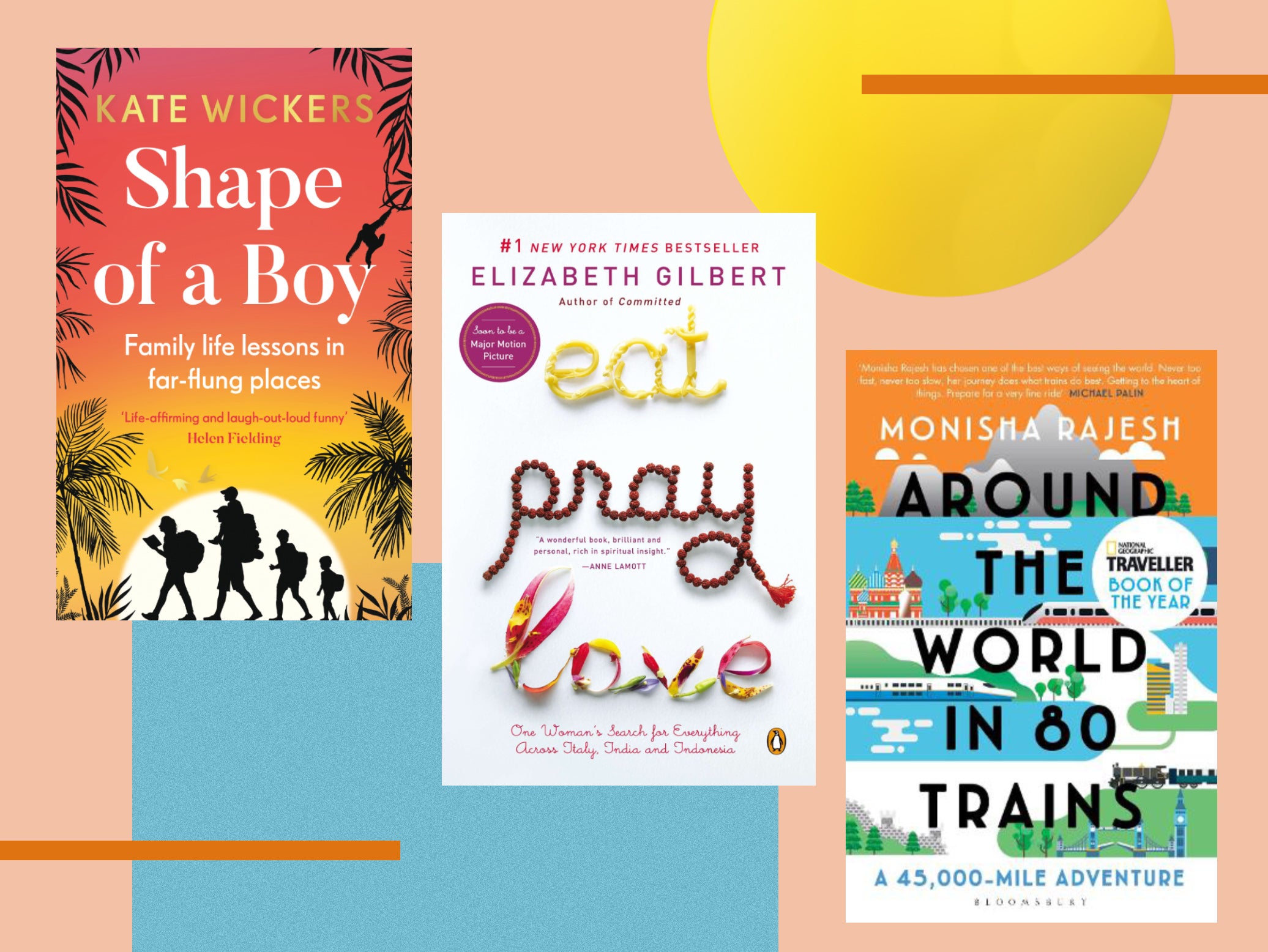
Sign up to our free weekly newsletter for insider tips and product reviews from our shopping experts
Sign up for our free indybest email.
A good book is always transportive. Especially a good travel book – which can have you scaling mountains, traversing deserts or exploring tropical islands with the turn of every page. The best travel reads not only make us feel like we’re there with the author, but they make us feel like the journey is our own.
After a couple of years of travel starvation, we are hungrier than ever for globetrotting reading. Even though we’re starting to explore in real life once more, packing up for beach breaks and city weekends, that hunger is difficult to satisfy.
The reality is that, for most of us, there are only so many calendar days in the year for real-life travelling – especially if you’re on a 28-day holiday allowance.
And so, we’ve brought you the list of our current favourite travel reads to inspire your next adventure and satiate your burning wanderlust.
Some are snapshots of a single place, presented in first-person by an enthusiastic author. Others are compendiums of individual essays, perfect if you need more general inspiration. Some employ the idea of travel a bit more broadly, speaking about ways of movement – the journey itself – rather than the destination.
- 8 best climate emergency books to better understand the crisis
- 10 best books to help you live more sustainably
- 10 best self care books for healing, growth and self love
- 7 best non-fiction books: From historical to self-help titles
How we tested
What our best travel books are not, are guidebooks. While there are many stellar examples of guidebooks around, when choosing our favourite travel books we were looking primarily for inspirational reads, not how-to information. Our best travel books are also not novels. While many fictitious reads are full of colour and insights, we don’t quite consider them “travel books”, as such.
Finally, we looked for a mix of reads that would appeal to different travellers. Not every book on this list will be for you, of course, but that’s OK. Not every destination will be either. That’s part of the joy of discovery.
The best travel books for 2022 are:
- Best overall – The Best British Travel Writing of the 21st Century, edited by Jessica Vincent: £16.99, Waterstones.com
- Best eco-travel read – Zero Altitude by Helen Coffey, published by Flint: £15.63, Whsmith.co.uk
- Best for family inspiration – Shape of a Boy by Kate Wickers, published by Aurum Press: £16.99, Waterstones.com
- Best for off the beaten track discovery – Islands of Abandonment by Cal Flyn: £8.49, Waterstones.com
- Best for walkers – Where My Feet Fall by Duncan Minshull: £18.99, Waterstones.com
- Best for rail junkies – Around the World in 80 Trains by Monisha Rajesh: £10.99, Waterstones.com
- Best classic – Eat Pray Love by Elizabeth Gilbert: £9.99, Waterstones.com
- Best for Nordic adventure – Farewell Mr Puffin by Paul Heiney: £12.99, Waterstones.com
- Best non-guidebook guidebook – Scotland The Best: The Islands: £15.99, Waterstones.com
The Best British Travel Writing of the 21st Century, edited by Jessica Vincent, published by Octopus Publishing Group
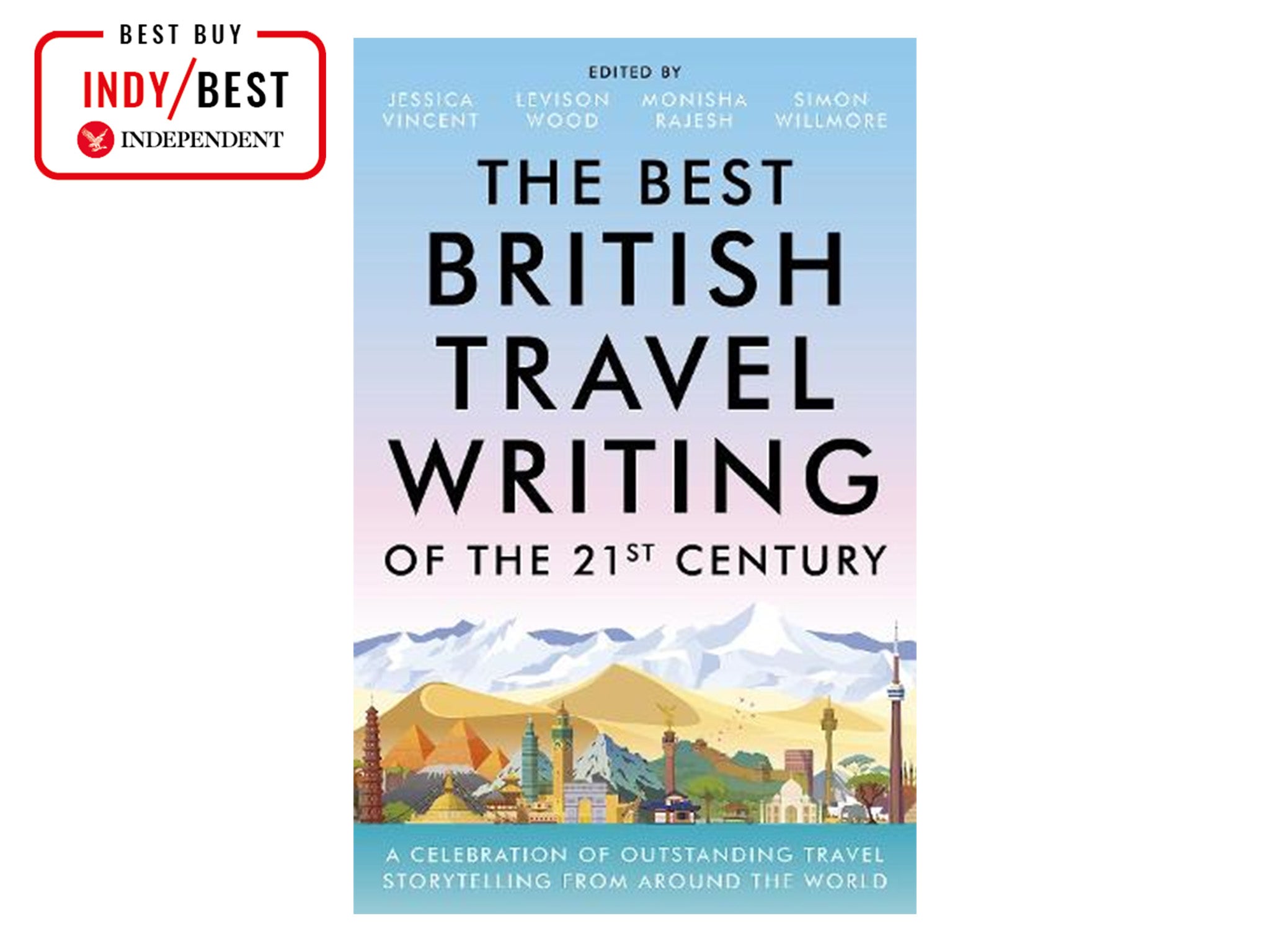
Best: Overall
Rating: 9/10
If you want a proper adventure from your armchair, this compendium of travel articles by some of the country’s best storytellers will fit the bill. When travel writer Jessica Vincent was grounded during the pandemic she had the brainwave to pull together some of the most inspiring essays published in British media in the past two decades, with extracts from the likes of Conde Nast Traveller , National Geographic Traveller and Suitcase Magazine .
The 30 reads are short – just a few pages each – but big in scope, rushing you along the tracks of a train in Baghdad, tracking snow leopards in Ladakh or sleeping under the stars in Malawi. Destinations are deliberately skewed in favour of the world’s lesser-known destinations and champion some emerging writers, providing bitesized nibbles of places you may never have dreamed of going – until now.
This book is as transportive as they come and yet compact enough for soaking up over a few spare moments on the tube, in the bath or when you’re tucked under the covers before bed.
Zero Altitude by Helen Coffey, published by Flint
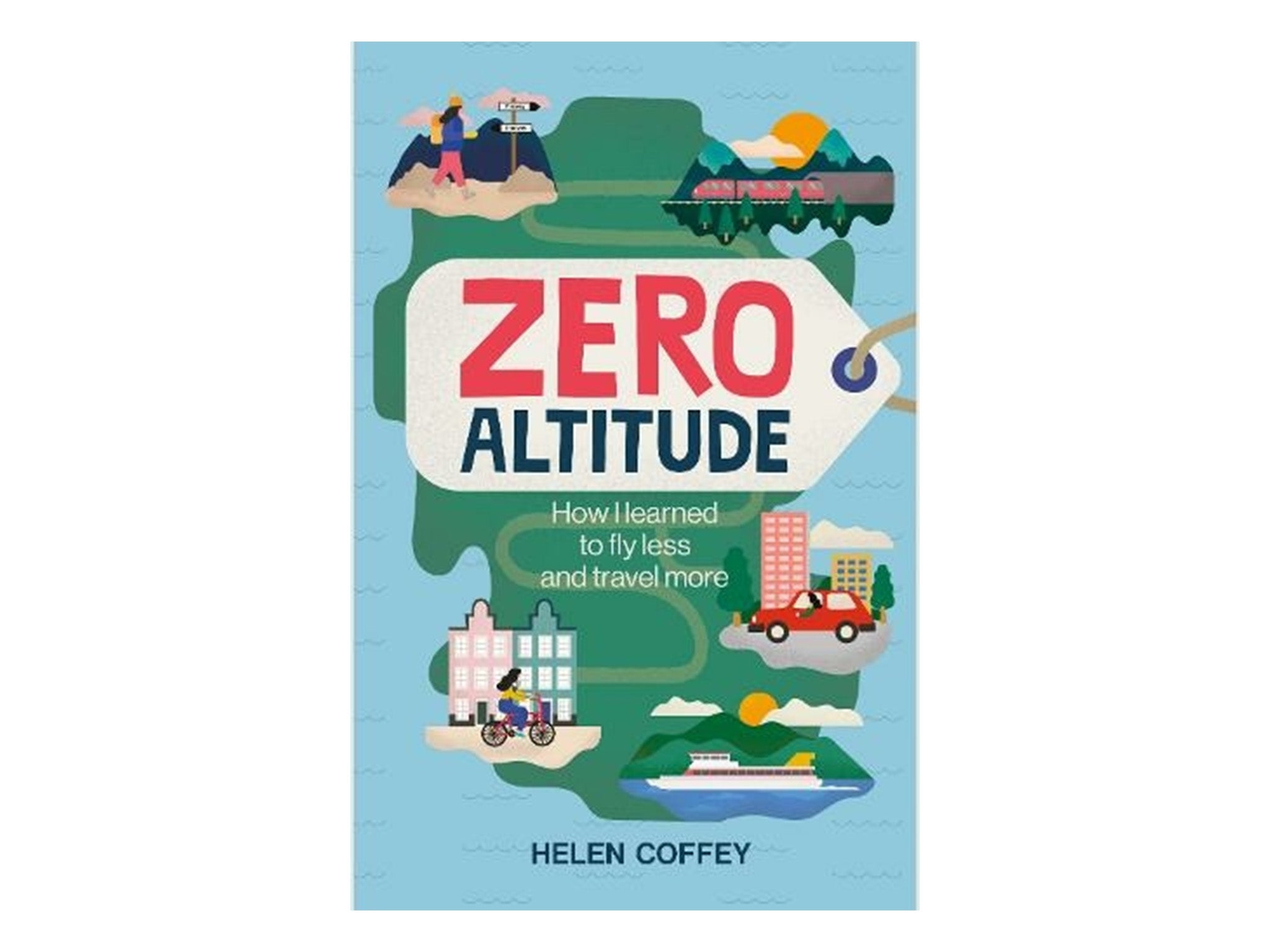
Best: Eco-travel read
Rating: 8.5/10
Penned by The Independent ’s very own travel editor, Helen Coffey, this is a personal account of how one frequent flyer became convinced to go cold-turkey on the holiday industry’s biggest convenience: air travel. After years of zooming around on a near-weekly basis, Coffey had a revelation in 2019 when researching a story on flygskam (the Scandi concept of “flight shame”). In short, she realised quite how bad flying is for the environment.
This read traces her (not always easy) journey to becoming a frequent traveller at “zero altitude”, detailing what she’s learned so far and how she’s managed trips as diverse as the Scilly Isles and Croatia. Coffey manages to weave in the hard-hitting detail in a light manner, which means even when the book is delivering its most serious of arguments – such as the fact that polluting air travel is predicted to double by 2037 – it never feels preachy. Rather, you’ll feel inspired to make a change of your own.
Shape of a Boy by Kate Wickers, published by Aurum Press
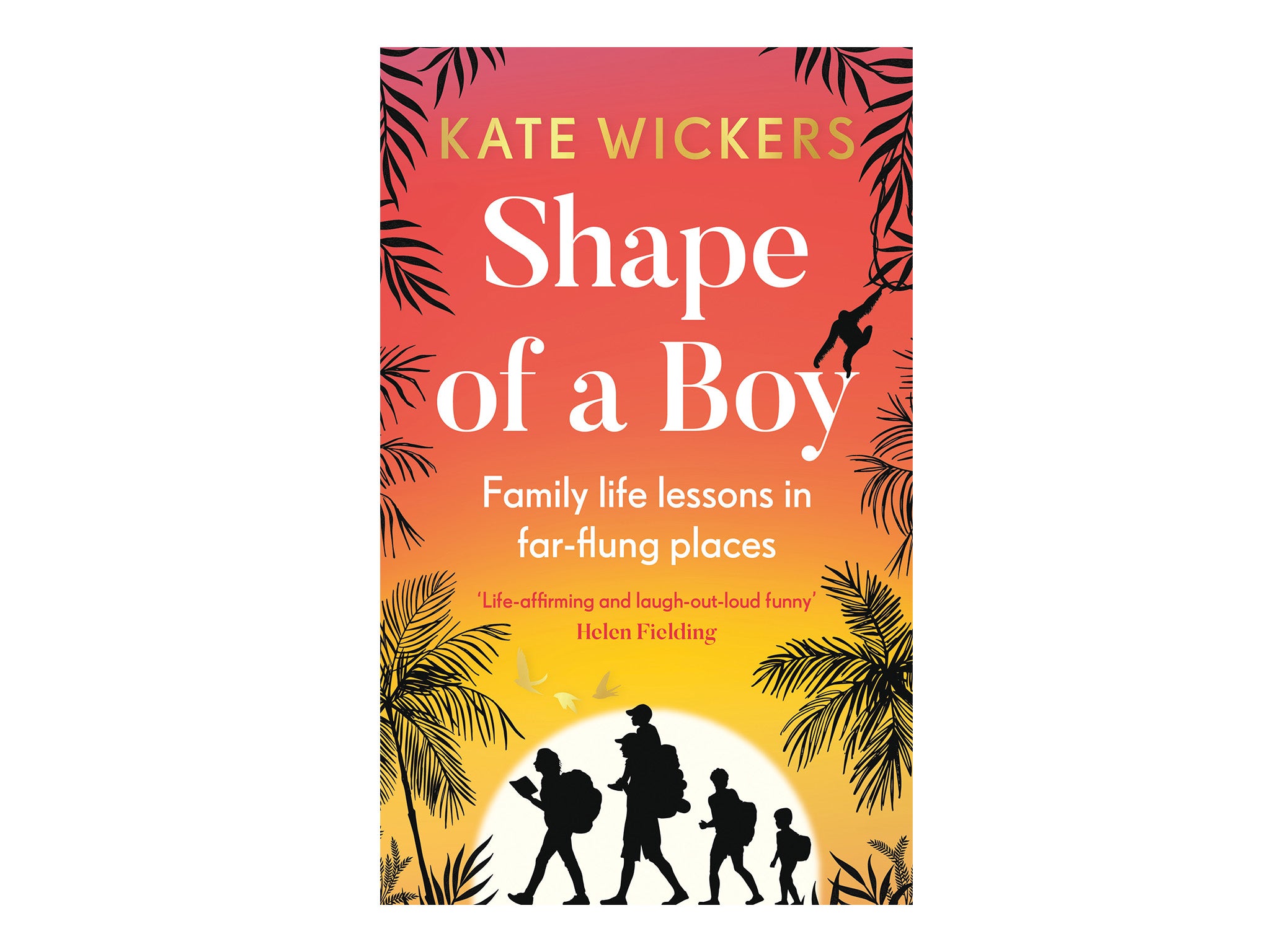
Best: For family inspiration
Rating: 8/10
If you think zigzagging in a Cambodian rickshaw or sourcing dinner in Borneo sounds tricky, just imagine doing it with three young boys in tow. Kate Wicker’s funny and moving account of living her mantra, “have baby, will travel”, shows that being a parent doesn’t have to hold you back from exploring the world – in fact, it can even make your experiences richer. Kicking off with a visit to Israel and Jordan in 2000 while pregnant, then rambling through the years and destinations like Mallorca and Thailand with her growing brood of sons – Josh, Ben and Freddie – Wicker details the lessons that they learn from each place, and each other. It makes travelling the world as a family something to get excited about.
Islands of Abandonment by Cal Flyn, published by HarperCollins Publishers
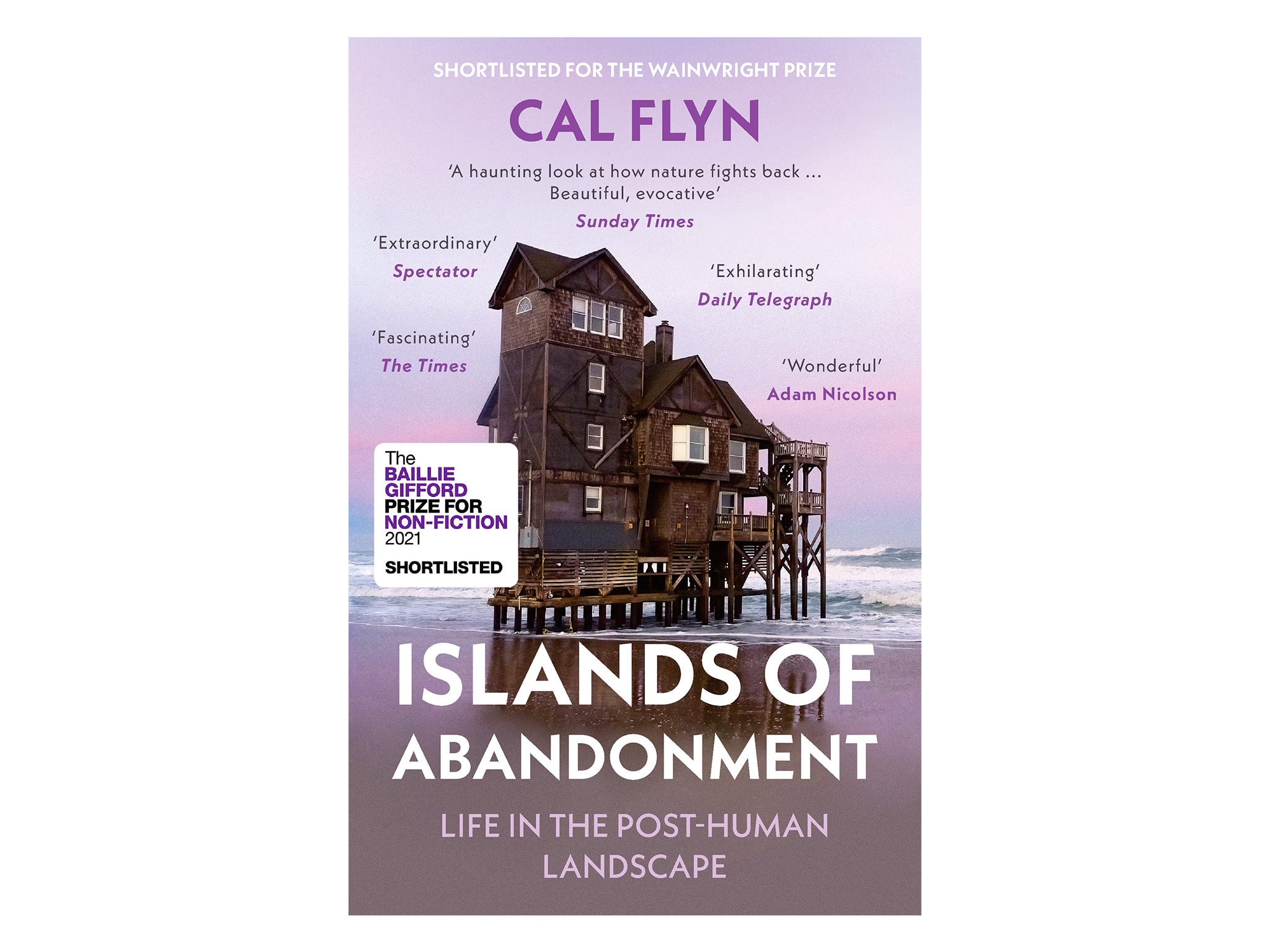
Best: For off the beaten track discovery
Most travel books are about places people want to go. This one is different. It’s about those other, forgotten kinds of places. Places people have fled from, due to catastrophe (for example, Chernobyl), unrest (the Buffer Zone in Cyprus) or shifting politics (communist Harju fields in Estonia); places that have fallen from glory, such as industrial Detroit; and ones that nature has reclaimed, such as Amani botanical gardens in Tanzania.
Author Cal Flyn has meticulously researched the destinations and brings their stories to life through evocative writing. It can make for dark reading at times, but this book makes you realise travel and discovery is as much about the places we choose to avoid as much as it is about those we embrace.
Where My Feet Fall by Duncan Minshull, published by HarperCollins Publishers
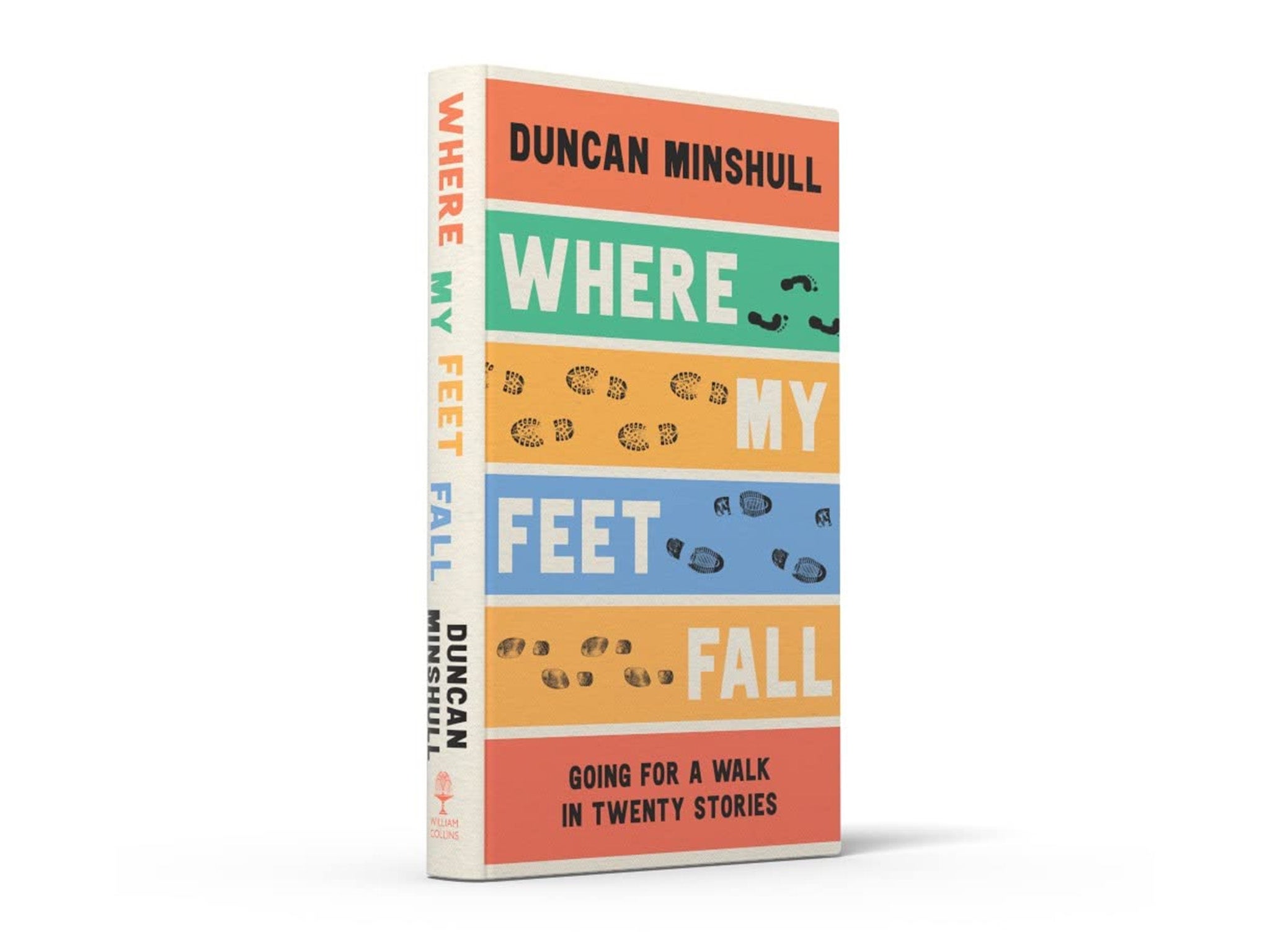
Best: For walkers
If you think great travel writing is all about moving through places in another person’s shoes, then you need this collection of essays from 20 writers about the pleasure of putting one foot in front of another. From bustling walks through Karachi with Kamila Shamsie, to rain-soaked treks in Germany with Jessica J Lee, every entry comes with its own unique flavour and makes you realise that this most rudimentary form of transport can be one of the most evocative. Editor Duncan Minshull, who pulled the collection together, has written three books about walking, so he knows a thing or two about it.
Around the World in 80 Trains by Monisha Rajesh, published by Bloomsbury Publishing Plc
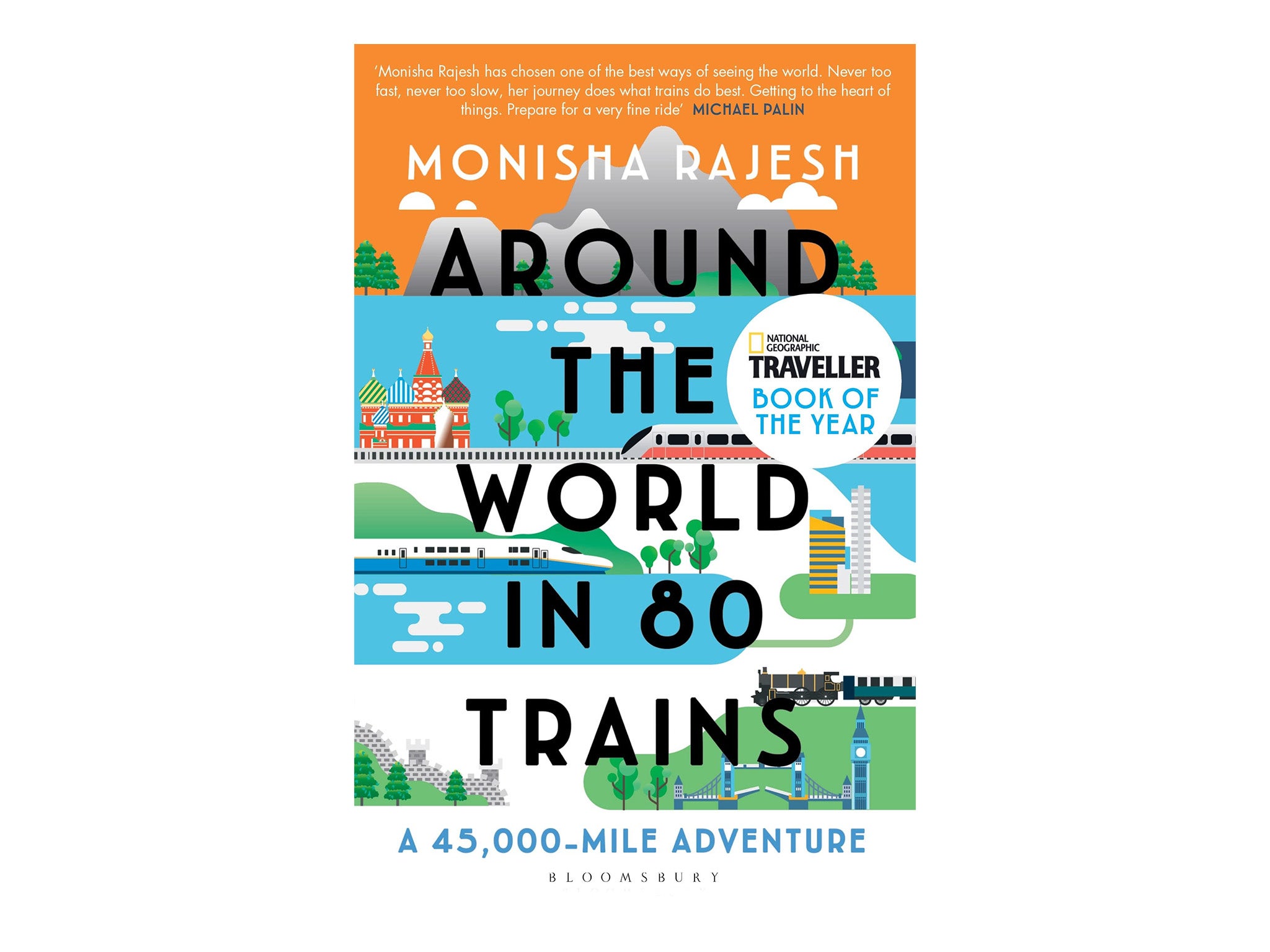
Best: For rail junkies
Does anything really sum up the thrill of travel like a rail journey? Whether you’ve fantasised about chugging your way across Europe or boarding a carriage further afield – say, the Trans-Siberian Express towards Beijing – this account by award-winning travel writer Monisha Rajesh will bring the dream to life. Rajesh’s easy, witty writing style is a big part of the joy, including her descriptions of the (sometimes quirky) characters she meets along the way. If you like this read, you may also want to give Rajesh’s preceding book, Around India in 80 Trains, a read.
Scotland The Best: The Islands
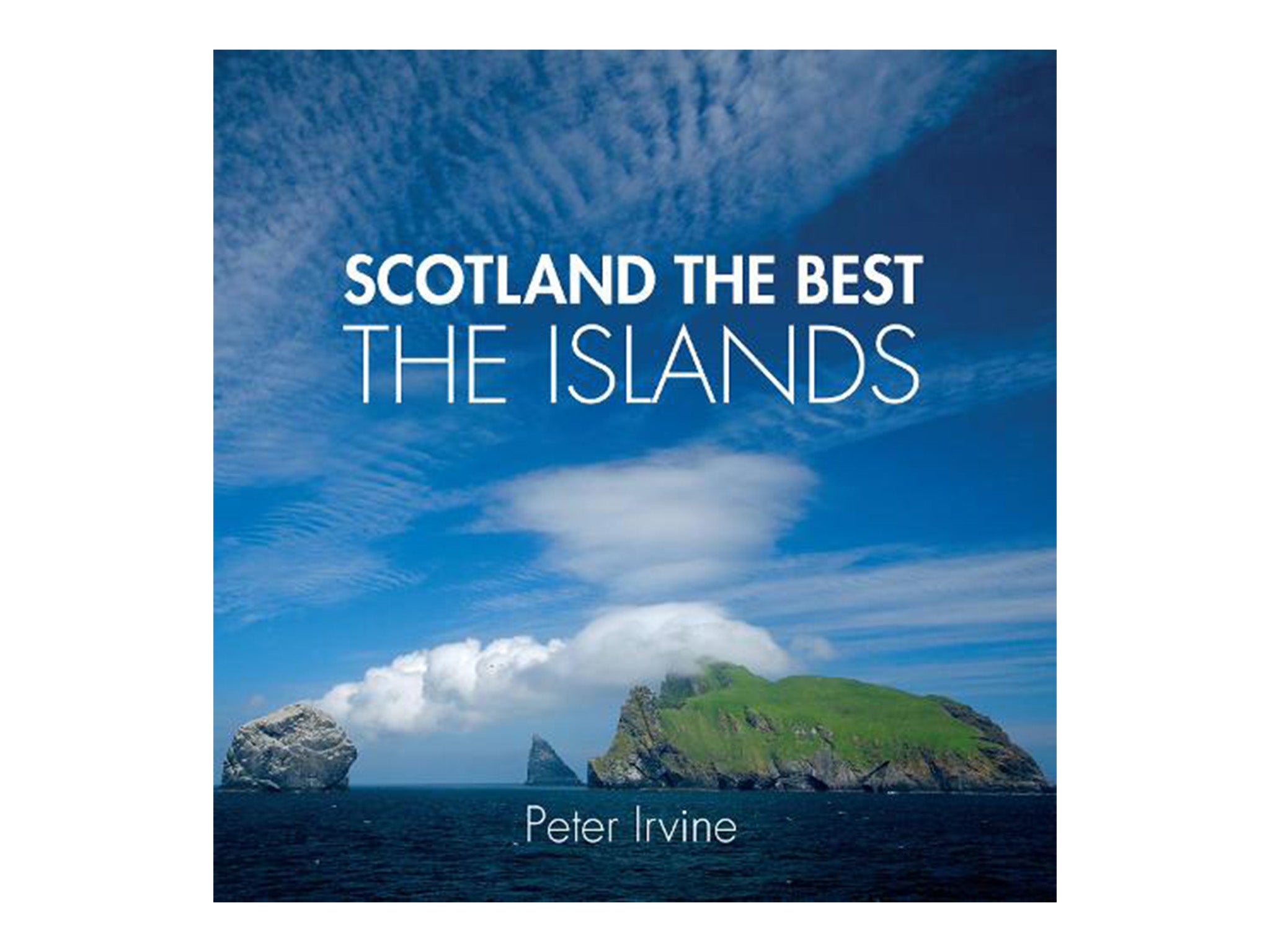
Best: Non-guidebook guidebook
Rating: 7.5/10
While we generally chose to omit guidebooks from this list, we’ve made an exception here – because it’s more of a photography book than anything else. The latest by bestselling travel writer Peter Irvine brings the islands of Scotland, big and small, to life through a collection of unexpected images. Some are snapshots of the big sights, such as the Callanish Stones – a rock formation on the Hebrides older than Stonehenge. Others are far less expected, such as a group of peat cutters or The Butty Bus – a fish and chips takeaway van on Harris.
Chapters are divided by geography. At the end of each one, Irvine lists a handful of his top recommendations of where to eat, stay and walk. But ultimately this is a book that inspires you to discover Scotland’s beautiful corners through your own lens.
The verdict: Travel books
If you want one book to transport you with every turn of the page, it has to be The Best British Travel Writing of the 21st Century . The fact that the writing is great is only one benefit – the digestible nature and mix of lesser-known destinations makes reading it feel like a proper adventure.
For any travellers who are conscious of our carbon impact – and that should be all of us – Zero Altitude is an eye-opener. Not only is Coffey’s writing style fun and engaging, but it packs in plenty of urgent detail on the impact of our addiction to air travel.
Voucher codes
For the latest discounts on audiobooks, try the link below:
- Audible discount codes
For an eco-friendly read, get stuck into the best plastic-free books that will help you lead a greener life
The Best Travel Writing of 2021: Our Favorite Stories of the Year
Tom Lowry , Skift
December 28th, 2021 at 1:30 AM EST
In a year when travel's recovery began, only to sputter, the pandemic was still a story for Skift that just kept giving. Our reporters and editors kept their heads down on crisis coverage, but shared some of the adrenaline too, on other worthy travel topics. Here's our team members' favorites, and how those stories came to be, in their own words.
The first year of the pandemic was an extraordinary achievement for Skift’s team of reporters and editors covering the unparalleled crisis in real time. Year two tested the mettle of the team in new ways, as glimmers of hope seesawed with the heartbreak of setbacks. But the journalism was no less exceptional in 2021.
As I am at this time every year, I am proud upon reflection of what Skift’s journalists accomplished. As is our tradition, I once again asked the difficult question of every reporter and editor who each produce a couple hundred stories a year: Which one was your favorite? They delivered, of course, explaining why the story was their favorite, and how it came to be.
We hope you find that our favorites are yours, too.
Edward Russell, Airlines Reporter
Behind-The-Scenes With American Demothballing Jets From Pandemic Storage
The Backstory: After writing so much about airlines pulling down their schedules, parking jets, and threatening to furlough staff, it was refreshing to actually see how airlines were recovering. In this case, how American Airlines put their jets back in the air to be ready for the then-forecast surge in summer travel. I flew to American’s largest maintenance base in Tulsa, Okla., to see exactly how the carrier did this. The team in Tulsa walked me step-by-step through the process of checking and re-checking every flap, seal, door, and crevice to make sure they were up to par for carrying passengers again.
What really struck me on my visit to Tulsa was how, for all the doom and gloom around the pandemic, the dedicated professionals at American never ceased working hard to make sure every aircraft was safe and ready to fly. Even for the seemingly thankless task of keeping black widow spiders from building webs in wheel wells.
Matthew Parsons , Corporate Travel Editor
Companies Face Challenge of Inclusivity on Travel for Remote Workers
The Backstory: The conversation around business travel shifted even further to remote work In 2021, as the phenomenon flipped from temporary measure to mainstream movement. It spring-boarded countless scenarios, mostly tinged with tourism because destinations saw plenty of marketing opportunities.
But among the images of work and play, I was struck by a conversation I had with the co-founder of a community interest organization who wants to level the playing field. Talking with Lorraine Charles of Na’amal , I was reminded the brave new world of remote work doesn’t revolve around middle and high-income countries, where people have ample opportunity to travel and work where they please.
Charles’ mission is to make remote work available for refugees, for people who don’t have the privilege of a U.S. or European passport, or the means to hop from one sun-kissed island to another with their laptop. She told me she wanted to help convert refugees into employees by training them on the softer skills needed, like Zoom meeting etiquette, then help them connect with potential employers.
In the same way travel broadens horizons for a tourist, does the same apply to an organization that recruits outside of its comfort zone? Later on in the year the topic was broached by immigration lawyer David Cantor , while the growing need for intercultural communications also emerged as a one-to-watch topic during 2021.
The plight of refugees around the world was brought home as we witnessed crises such as the large-scale evacuations from Kabul, and the tragedies of migrants in France attempting to cross the channel to the UK. Climate migration may also become a factor in the years ahead.
A lot of progress has been made in diversity and inclusion over the past few years, and this is one area that I imagine, or hope, more organizations will address over the coming years.
Sean O’Neill , Senior Travel Tech Editor
What Accor’s Top Technology Executive Has to Say May Surprise You
The Backstory : This year, we launched Skift’s first Travel Tech Briefing , a guide for travel executives to decide if their company should “build, buy, or partner” to stay ahead in enterprise technology.
I was delighted that the first edition spotlighted Floor Bleeker, who gave his first interview since becoming Accor’s chief technology officer. The hotel giant had taken a contrarian tech strategy but hadn’t publicly discussed it before.
Until recently, Accor had planned to centralize its core technology systems. That’s a common trend among many large hotel groups. But around the time Bleeker came on board, the company decided to give up its plan to centralize its core technology systems. It will now be running multiple property management systems instead, allowing owners to tap upstart players, such as Treebo and Mews, after it certifies them.
While the move may seem like small potatoes to an outsider, the decision is significant for the hotel technology sector. It allows smaller players to compete to provide critical software to properties. Guests could be the ultimate beneficiary as competition may spur faster innovation in how hotels interact with guests.
Madhu Unnikrishnan , Editor, Airline Weekly
The United Airlines Engine Failure Is a Story Being Wildly Botched by Media: Commentary
The Backstory : On February 20, 2021, one of the two engines on a United Airlines Boeing 777 exploded in spectacular fashion, showering a Denver suburb with wreckage and terrifying passengers with sights of flames shooting out of the jet. The story dominated U.S. television news for several days, and pundits spouted dire predictions about Boeing’s future and the safety of commercial aviation.
Granted, it’s been an exceedingly difficult few years for Boeing, after two fatal crashes grounded its best-selling 737 Max for almost two years (forcing Boeing to admit that the aircraft’s flight-control software was flawed and responsible for the crashes); Federal Aviation Administration inspections of its 787 have halted delivery of a long-range aircraft airlines depend on; and its 777X has been delayed by several years. Boeing has gotten a lot of things wrong in recent years, but the United 777 failure was not one.
There’s an old adage that says a lie travels halfway around the world before the truth puts on its pants. Television news fell all over itself to air video that had already spread on social media. Important context was missing. Yes, the footage was horrific, but what was lost was why the incident happened. A fan blade broke loose from one of the aircraft’s Pratt & Whitney engines, causing the engine to fail and exposing its combustion chamber. The fan blade did not pierce the fuselage.
What was lost in the consumer media’s coverage was this: The aircraft stayed intact, and its many safety systems prevented a catastrophic accident. The crew performed flawlessly and safely landed the airplane without any injuries. In fact, most of the flight’s passengers were rebooked and carried on with their travels that same day. In other words, the real story was that the everything and everyone worked as they should, which may be a lot less exciting than the breathless stories the news media reported, but important to note.
Lebawit Lily Girma, Global Tourism Reporter
Why Tourism Needs to Step Up and Push for Vaccine Equity
The Backstory: The horrific pandemic surge in India in April had just unfolded and in parallel, the travel industry in the U.S. and Europe, and their consumers, were focused on planning for the start of a “hot vaxxed summer.” The contrast was glaring and a clear sign to me that vaccine access would be critical for a full and fair tourism recovery. So while it was a difficult choice to make — this being my first full year of tourism coverage for Skift — I am most proud of this initial story on vaccine equity. It became the first in what has been a series of updates from us throughout the year after leading this conversation for the travel industry.
Why this topic continues to matter is because first, it’s an issue that remains critical for the industry and continues to impede and influence travel’s recovery everywhere, as we’re currently witnessing with the Omicron variant. Second, it’s critical to push travel leaders in the major source markets to recognize that solely advocating for the lifting of border restrictions is a short-sighted approach. There’s a clear business case for the industry — particularly the World Travel & Tourism Council and the United Nations World Tourism Organization and their members — to use its political muscle to push for more rapid vaccine distributions and donations globally so that the recovery is sustainable.
Third, this is a time in which we need bold leadership and vision. We saw companies such as Intrepid Travel and Expedia Group move forward with vaccine equity campaigns some months after this initial story was published. Many more need to follow.
We need this industry to have a reckoning on what global tourism should represent and stand for in the future, and that it’s about more than arrival numbers and gross domestic product. Vaccine equity is an opportunity to do just that.
Rashaad Jorden , Editorial Assistant
How One Tour Operator Is Using a 1977 Hit Tune to Lure Back Travelers
The Backstory: I was looking to write a story about a tremendously successful tour operator marketing campaign that I thought could become a regular feature, and I was referred to Steve Born, the chief marketing officer of the Globus family of brands.
How exactly? Globus was saying that landmarks popular with their guests – including the Eiffel Tower and the Easter Island statues – had missed them by singing Player’s hit Baby Come Back. Born explained in the story how the campaign came about and why it had enjoyed success.
It was my favorite story from the year because as Born mentioned, travel is fun and supposed to bring a smile to travelers’ faces. Seeing the video of popular landmarks — or even thinking about it — has never failed to elicit a chuckle from me. Born talked about the hard work that went into creating the campaign, which was timed to coincide with the reopening of numerous destinations.
But most importantly, travel for many is a cause for celebration, and despite numerous ongoing challenges, some tour operators have had things to celebrate this year.
Cameron Sperance , Hospitality Reporter
Lessons for Travel’s Recovery From Anthony Bourdain’s New Book
The Backstory: Some travel stories span beyond one’s assigned beat. It was timely to see the late Anthony Bourdain’s travel guide come out just as unruly airline passengers and rude hotel and restaurant guests became the unfortunate legacy of the pandemic. You couldn’t go days without seeing a headline of a diverted aircraft because some idiot wouldn’t wear a mask and punched a flight attendant to make a point — a point the federal government and airlines responded to with jail time and a lifetime ban from flying.
Restaurants and hotels weren’t spared the abuse. Irate was the default mood for patrons who had to wait longer than expected for a meal or, heaven forbid, were told by hotel management to keep their volume down.
Bourdain’s book made me miss his weekly wisdom doled out on his TV series, and I felt a particular bond with the words since I live in Provincetown, Mass. — the seaside town at the end of Cape Cod where he got his start in the world of restaurants.
But the guide also painted some important travel lessons: Always remember you’re a guest in someone else’s hometown. Be patient in this era of longer waits: It’s not neglect; it’s a labor shortage crisis.
Oh, and stop being a jackass to hospitality workers.
Angela Tupper, Deputy Editor, EventMB
The Catch-22 of Zero-Covid Zones: Events Happen But Can Cancel on a Dime
The Backstory: A major part of our 2021 news cycle was dominated by Covid coverage, but this story was particularly compelling because it approached a well-known news story from an under-reported angle. While major publications were drawing attention to Australia and New Zealand’s success with enforcing a zero-Covid policy, there was very little coverage of what this approach meant for the event industry. Headlines announced that life Down Under was able to continue largely as normal, apart from periodic snap lockdowns whenever a handful of cases were confirmed. Were large-scale events able to move forward as well?
Through multiple interviews with event professionals in Australia, a consistent story emerged: The nation’s successful suppression of Covid transmission made it much safer to hold events from a public health standpoint, but the measures needed to maintain zero-Covid status also meant that a lockdown could be triggered by just one case — with events therefore prone to last-minute cancelation. In other words, reducing the health risk indirectly amplified the financial risk. In turn, What began as an investigation into the viability of events turned into a conversation around the need for event cancelation insurance. With private insurers unwilling to cover the risk, lobbyists were calling for government-backed programs.
In some ways, this story provided a glimpse into the “stop-and-go” future that the global event industry would soon be facing in a post-vaccine world periodically threatened by new variants of concern. Since then, the UK has announced a government-backed event insurance scheme, as has the Australian state of Victoria. The impact of these programs will be a story to watch in the coming year.
Dennis Schaal , Founding Editor
Vacasa Paid $619 Million for TurnKey Vacation Rentals in Mostly Stock
The Backstory: This story combined two things I love: A scoop of sorts and scouring Securities and Exchange Commission financial filings.
What’s the first thing that travel veterans ask you when they learn of an acquisition? Namely, what do you think the sale price was? On smaller deals, when a startup gets bought by a public company, the buyer doesn’t necessarily have to explicitly disclose the price, and when a private company acquires a startup, the usual thing is there is no public statement about the price.
Vacasa’s acquisition of a smaller property management company, TurnKey, wasn’t a small deal, it turns out, but it involved two private companies. I therefore didn’t expect Vacasa to disclose the acquisition price — and apparently neither did the rest of the press — but the twist was that Vacasa was slated to go public in a blank check merger and was filing its financials with the Securities and Exchange Commission. Vacasa eventually went public, on December 7.
I love reading certain Securities and Exchange Commission documents and frequently tell my reporter colleagues that you can find all kinds of news bits and scoops if you take the time to read them, which I often do during the evenings or on weekends — for fun.
So there was the price tag and details about the deal in a Vacasa financial filing. Vacasa acquired TurnKey for nearly $619 million, mostly in stock. As TurnKey had only raised some $120 million in funding, it appears as though co-founders T.J. Clark and John Banczak did fairly well for their investors.
Miguel Neves , Editor-in-Chief, EventMB
Event Tech Investment Tracker
The Backstory: For my favorite article, I am going to say the EventMB Event Tech Investment Tracker . This continually evolving post sums up a lot of my learnings in 2021. I knew that joining Skift to lead EventMB, I would bring the event professional’s point of view with me. With this post, I am not distilling what I have learned from all the amazing editors at Skift and their unique ways of looking at the travel industry. I’ve had help from many members of the Skift and EventMB to make this post a real at-a-glance review of the crazy world of mergers and acquisitions in event tech. Everyone I have shared it with has given positive feedback and I know it will be an important part of future iterations of the EventMB website, so the story will continue to evolve.
Colin Nagy, On Experience Columnist
Doha Quickly Comes of Age Ahead of World Cup 2022
The Backstory: This was an interesting story to report, as Doha is in the harried run-up to a major milestone, the World Cup in 2022. The event has been a forcing factor for a lot of the obvious things like hospitality and infrastructure but also has accelerated a lot of Qatari soft diplomacy: museums, interesting small businesses and centers to attract more of the global creative class. Covid has put a damper on a lot, but it is clear to see there’s been clear vision and a lot of progress. I liked this piece because it was an honest look at what is working well, and what needs to be improved in a region that has a lot of shallow, one-note coverage from Western outlets. There is a lot of depth and moving parts to the modern Qatar story: from regional and global politics, to business, investment, real estate to national country branding and the desire to live up to the promise of the World Cup. These are my favorite stories to try and make sense of when I can.
Ruthy Muñoz , Freelancer
How Unruly Do Airline Passengers Have to Be Before the Government Decides to Prosecute?
The Backstory: I love writing feature stories that bring extraordinary people to the forefront, but surprisingly, when faced with choosing my favorite account this year, a Skift feature wasn’t it. Instead, my favorite story is accountability in the other pandemic- unruly passengers.
As a former flight attendant, I understood there’s only so much flight crews could do without the backup of airlines, the FAA, the Justice Department, and Congress. Writing this and other stories on unruly passengers and holding everyone accountable to bring about needed change is what the power of the journalistic keyboard is for me.
Lisa Jade Hutchings , Branded Content Writer
How Event Professionals Can Cope With Imposter Syndrome
The Backstory: I have had the opportunity to work on some great stories this year, such as the effect of the pandemic on local event industries around the world and an analysis of the sector’s commitment to net-zero. However, my favorite post explored the topic of how event professionals can better cope with imposter syndrome.
While massive technological advancements and innovation have taken place within the sector, I wanted to delve deeper into the human experience of an event professional through real-life insights into the current situation. As professionals working in a high-stress industry (events), the cancellations and job losses due to the pandemic have impacted the mental health of those working within the space. Because of this, many planners have experienced crippling self-doubt in adapting to new tech, event formats, external stressors — all while learning new skills.
In writing the post, a background of the syndrome was given, alongside actionable tips to coping so people could gain tangible value by reading the piece. To better understand imposter syndrome, its effects, and how people can manage, insights were gained by speaking at length with a counseling psychologist, researching the topic online, connecting with others in the industry, and drawing on past personal experiences.
The highlight of the post for me was seeing the effect it had on others in the industry — people were able to relate and felt that a voice had been given to an experience so many people live with daily.
The Daily Newsletter
Our daily coverage of the global travel industry. Written by editors and analysts from across Skift’s brands.
Have a confidential tip for Skift? Get in touch
Tags: airlines , coronavirus , events , tour operators , tourism , travel recovery , vacation rentals , vaccine equity
- NONFICTION BOOKS
- BEST NONFICTION 2023
- BEST NONFICTION 2024
- Historical Biographies
- The Best Memoirs and Autobiographies
- Philosophical Biographies
- World War 2
- World History
- American History
- British History
- Chinese History
- Russian History
- Ancient History (up to 500)
- Medieval History (500-1400)
- Military History
- Art History
- Travel Books
- Ancient Philosophy
- Contemporary Philosophy
- Ethics & Moral Philosophy
- Great Philosophers
- Social & Political Philosophy
- Classical Studies
- New Science Books
- Maths & Statistics
- Popular Science
- Physics Books
- Climate Change Books
- How to Write
- English Grammar & Usage
- Books for Learning Languages
- Linguistics
- Political Ideologies
- Foreign Policy & International Relations
- American Politics
- British Politics
- Religious History Books
- Mental Health
- Neuroscience
- Child Psychology
- Film & Cinema
- Opera & Classical Music
- Behavioural Economics
- Development Economics
- Economic History
- Financial Crisis
- World Economies
- Investing Books
- Artificial Intelligence/AI Books
- Data Science Books
- Sex & Sexuality
- Death & Dying
- Food & Cooking
- Sports, Games & Hobbies
- FICTION BOOKS
- BEST NOVELS 2024
- BEST FICTION 2023
- New Literary Fiction
- World Literature
- Literary Criticism
- Literary Figures
- Classic English Literature
- American Literature
- Comics & Graphic Novels
- Fairy Tales & Mythology
- Historical Fiction
- Crime Novels
- Science Fiction
- Short Stories
- South Africa
- United States
- Arctic & Antarctica
- Afghanistan
- Myanmar (Formerly Burma)
- Netherlands
- Kids Recommend Books for Kids
- High School Teachers Recommendations
- Prizewinning Kids' Books
- Popular Series Books for Kids
- BEST BOOKS FOR KIDS (ALL AGES)
- Ages Baby-2
- Books for Teens and Young Adults
- THE BEST SCIENCE BOOKS FOR KIDS
- BEST KIDS' BOOKS OF 2023
- BEST BOOKS FOR TEENS OF 2023
- Best Audiobooks for Kids
- Environment
- Best Books for Teens of 2023
- Best Kids' Books of 2023
- Political Novels
- New History Books
- New Historical Fiction
- New Biography
- New Memoirs
- New World Literature
- New Economics Books
- New Climate Books
- New Math Books
- New Philosophy Books
- New Psychology Books
- New Physics Books
- THE BEST AUDIOBOOKS
- Actors Read Great Books
- Books Narrated by Their Authors
- Best Audiobook Thrillers
- Best History Audiobooks
- Nobel Literature Prize
- Booker Prize (fiction)
- Baillie Gifford Prize (nonfiction)
- Financial Times (nonfiction)
- Wolfson Prize (history)
- Royal Society (science)
- Pushkin House Prize (Russia)
- Walter Scott Prize (historical fiction)
- Arthur C Clarke Prize (sci fi)
- The Hugos (sci fi & fantasy)
- Audie Awards (audiobooks)
Make Your Own List
Nonfiction Books » Travel
The best travel writing, recommended by colin thubron.

To a Mountain in Tibet by Colin Thubron
The much-travelled author Colin Thubron reflects on more than 40 years of writing about other cultures, and shares his own favourite travel reading with us
Interview by Alec Ash
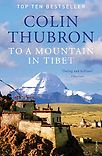
The Road to Oxiana by Robert Byron
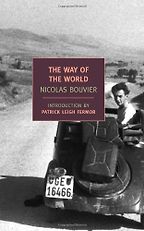
The Way of the World by Nicolas Bouvier
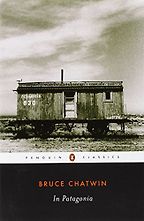
In Patagonia by Bruce Chatwin
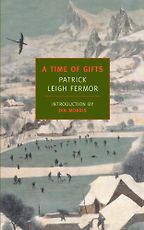
A Time of Gifts by Patrick Leigh Fermor
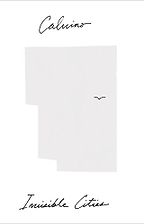
Invisible Cities by Italo Calvino
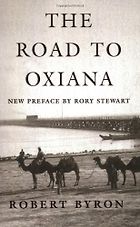
1 The Road to Oxiana by Robert Byron
2 the way of the world by nicolas bouvier, 3 in patagonia by bruce chatwin, 4 a time of gifts by patrick leigh fermor, 5 invisible cities by italo calvino.
I read your book, To a Mountain in Tibet , last night. It’s a different sort of travel book for you – a journey to Mt Kailash in western Tibet that was inspired by deaths in your family. What did you want to achieve with this book?
In your previous travel books the attention is more simply focused on where you are. But is there a theme that ties them together?
Retrospectively, the recent ones have all been about the countries that we have been brought up to be afraid of. The first one being Among the Russians in Brezhnev’s Russia in the early 1980s, then the China one [ Behind the Wall ], then central Asia [ The Lost Heart of Asia ] and Siberia [ In Siberia ]. My parents were brought up to feel that Germany was the enemy, but my generation felt that the Soviet Union was the enemy. It was very forbidding and impenetrable, much more so than Nazi Germany to my parents’ generation. The Soviet Union was kind of occluded, and there were journalistic clichés about what it was, but they didn’t conform to the other Russia I knew from reading Dostoevsky or Tolstoy – these incontinently human people, all drunk and melancholy mad. Similarly, China was pretty enigmatic. When I went there [in 1986] it had just opened up, it had only been possible for a few years to go more or less where you wanted.
And so I had the instinct to understand these two great ogres of my childhood, the great bear of Russia and the yellow peril of China . I think it is cliché that understanding dispels fear – maybe it exacerbates it – but I wanted to humanise the map. That’s why I chose those places. It wasn’t a conscious, evangelical programme. I wasn’t going in thinking, “Ah, now I’m going to explain and humanise Russia and China to the West.” It was a self-centred instinct of my own, that this is worth doing for me. I’ve always needed challenge in my books. I’ve always needed to define that what I’m doing is difficult, and therefore that what I’m bringing back has the value of something that’s extracted from difficulties of culture, even geographical difficulties.
Do you travel, and write, for your reader or for you?
For me, I’m ashamed to say. Although the reader is always in my head. I say that rather self-scathingly, but I don’t do them consciously for the reader. I’m not setting out to explain a culture. Cyril Connolly said, “It’s better to write for yourself and have no public, than to write for the public and have no self.” I have to feel it’s right for me, even if it’s not a very promising book in other ways. The publishers weren’t keen on the Silk Road book [ Shadow of the Silk Road ], for instance, but the more I thought about it the more I wanted to do it. I feel that I’m doing what I love, and what’s meaningful to me.
What then is the function of travel literature ?
The function of the travel book is not that of an academic treatise. It’s not saying, “This is how the world is, this is my theory about it.” It’s building up experience. It’s not the intellectual understanding about the subject, it’s the emotional experience of it. Experience not of any specific aspect of the culture, but a bit of everything. So you get history, landscape, chance conversations with people – a smell in the back of a train, the way people feel about their lives, even in some trivial fashion, plus a chunk of more serious politics. All of these things can follow on from one another in a travel book. By the end of it, you hope the reader has a kind of mosaic of what this country is, or what it was to you. It’s an accumulation of data of every different sort, such as no other genre is. And I think that’s what a travel book has to give, a sort of smell and feel of a culture – or how it was in one instance. It’s not going to be like that in 10 years time, or even five, but you’re catching the moment on the wing and saying, “This is how it was to me”.
Outside autobiography , travel literature is the only genre that invites the first person singular. You’re in the landscape, and dependant on the people (in my case, at least) for your survival and hospitality. You’re up for grabs. I think the personality of the writer in travel books is very exposed. And that’s good. In a way it’s an acknowledgement that this is a subjective experience. The moment you decide to write about one thing rather than another thing on your journey, it has become your account. When you talk with someone, what strikes you about the conversation is what goes down in the writing. So to pretend that it’s objective is ridiculous, more so than in most genres. Some writers write a great deal about themselves – that they had toothache and so on. To intrude yourself too much may be absurd. But personality comes through in a travel book. It’s a sort of tacit acknowledgement that we can’t be God. We can’t say, “This is how it is”. We can only say, “This is what happened to me. This is what I felt. This is what I thought. I may be wrong.”
Do you think you can really get to know a country by travelling in it?
That’s the hardest question. You mentioned you lived two years in China . I just went through it in four months. Always, I think, the travel writer feels that those who inhabit the land, the culture – whether they’re visitors or natives – know and experience things with greater depth and sophistication than we can possibly have. Travel writers can make horrible mistakes because of lack of knowledge. But often I feel that people who live there can’t see the forest for the trees. As a travel writer, you come, you see something, and it’s usually striking. You’re recording the superficials but hoping that they leak in, that they have a penetrative quality.
So someone passing through has that valuable freshness of impression.
Yes. I often find that after a few months in a country I’m already accepting so much which no longer seems strange or striking to me, so the moment I’m in a country I have to pour down impressions much faster than I can develop them later. I couldn’t write a book on London. I wouldn’t know where to begin. But I would always be interested in someone from, say, Czechoslovakia coming and spending a couple of months here, and giving their impressions.
How do you take notes on the road?
My writing is very small, it’s crammed into thin-lined notes, and the notes are very full. There are two types of notes that people take – those that jog the memory, and those that almost take the place of memory. Mine are the second. They’re very full of detail, because my memory is not particularly good, and I would forget everything within a month or two of travelling. You think you’re going to remember it and that you just need a few trigger words, but you don’t. I have to put down everything. Particularly things that give life to a detail – the texture of a rock, or the particular expression somebody used. A high percentage of the words that arrive in prose in my books are there in my notebooks.
What is travel literature, as opposed to travel guides?
Let’s get stuck into your book selection, which covers the great canonical works of travel writing. Your first choice is Robert Byron’s Road to Oxiana . Where is “Oxiana”?
Oxiana is a coinage of his, and it doesn’t geographically specifically exist. It was a way of saying Persia (as it was to him) and Afghanistan. Byron’s journey starts in Venice and ends in what is now Pakistan. He went there in 1933-34, not long before he died in World War II, drowned when his ship was torpedoed. Although the book is terrifically chauvinistic – he’s appalling when he writes about the local people, almost always without sympathy and sometimes with extreme colonial arrogance – it’s full of wonderful descriptions. It’s rather like what I was saying about building a mosaic about a country. He does that marvellously, in a description of landscape, then a menu, then a conversation, often humorous or sometimes a bit mad, and then some of the finest architectural descriptions in the language. His passion was early Persian architecture.
Support Five Books
Five Books interviews are expensive to produce. If you're enjoying this interview, please support us by donating a small amount .
He strikes me as fitting the mold of traveller scholar.
That’s certainly one type of travel writer. The Paddy Leigh Fermor tradition, if you like. Byron was a serious art historian. He was a bit of a contrarian, a bit of a rebel. He hated the Omar Khayyám brigade – you know the rubáiyát of Omar Khayyám, the popular Persian poem translated by Edward Fitzgerald. “Awake! for Morning in the Bowl of Night / Has flung the Stone that puts the Stars to Flight: / And Lo! the Hunter of the East has caught / The Sultan’s Turret in a Noose of Light.” That sort of thing, very Georgian. And if you read the original, it doesn’t read anything like it, it’s completely different. Robert Bryon mocked this sort of orientalism, he wanted to get to the real thing. It’s an artistic and architectural pilgrimage, if you like. But the scholarship is combined with outrageous, funny interviews with people. In the Persia of the time, you couldn’t speak or write about the Shah openly, so he called him Marjoribanks, a silly name to make fun of pomposities.
Robert Byron was an old Etonian, as were you. Does this have anything to do with the notion of a “gentleman traveller”? What does that mean, anyway?
I don’t know what it means, really. I should think it means gentlemanly attention to scholarship, I dare say often too superficial. It’s the feel of a big literary tradition in the background, and of a slightly mandarin kind of writing. Paddy is certainly very rich in his style, and Byron too can be. I fear that it may suggest a certain superiority. That certainly shows in Byron – not in Leigh Fermor, he’s too generous, but Byron is typical of that post-colonial arrogance.
Do you think the tradition of travel literature is a British tradition, tied to a sense of colonial adventure?
Yes I do. I think that almost all of the travel writers we’re talking about are British public school people. And I think that system had a big effect. I was sent to boarding school at the age of seven. My parents were over in Canada, I was here 3,000 miles away. That sort of thing, for better or worse, makes you very independent – both psychologically and even physically. Just having to cope for yourself at that age makes a big difference, and I feel that is quite important in the tradition of travel writing being so British. There are very few other countries that produce the same travel-writing creature, and there’s an awful arrogance about the genre sometimes. But still, such writers have been given the self-confidence to feel that they’re going to be OK, so there’s not that degree of anxiety that so many people have when they’re travelling.
Do you feel that tradition is dying?
Let’s move onto the second book, Nicolas Bouvier’s The Way of the World.
Bouvier follows some of the trail of Robert Byron, travelling to the Khyber Pass in 1953-54. But the book is mostly set in Turkey and western Iran, where they get stuck. Bouvier never wrote another book comparable to this one. I loved it for its humanity, for its footloose feeling. He says somewhere, “You think you are making a trip, but soon it is making you – or unmaking you.” And you feel that he’s a very vulnerable traveller. I love that sense of not having a planned journey – it might go anywhere. He travelled in this funny little car, a Fiat Topolino. I travelled in Russia in a Morris Marina, which people laughed at, and it secures your independence.
We were talking earlier about a travel writer being a travel companion. But Bouvier had his own, Thierry Vernet, an artist who ended up illustrating the book with his drawings of what they had seen.
It’s surprising how many travel writers have travelled with a companion and not acknowledged them. I think Evelyn Waugh and Graham Greene both did so in the 1930s, and didn’t even mention in their books that the fellow traveller was there. I travel without, because I think you’re more sensitive without a companion. And the more the companion belongs to your own culture, the more insulated you’re likely to be in your own world. If you’re alone, you’re forced to get an understanding of where you are because you have no cultural references. If you imagine walking down the aisle of a ruined cathedral, and there’s someone with you, some of your attention is given to the companion and to their reaction. If you’re alone, the outside is pouring in on you and there’s nothing to give you comfort in the literal sense. You’re absolutely exposed. And that’s why I like to be solitary.
What I loved in this book were the quotidian moments. There are some wonderful descriptions of how bread is different in Turkey, Iran and Armenia. Or there’s a very true moment when he says hospitality is not endlessly questioning newcomers, but letting them sit down and drink their soup in quiet. How important do you think quotidian moments are in travel writing, or are they the boring bits one must leave out?
Your third pick is Bruce Chatwin’s In Patagonia .
This struck me as a rather different way of travel writing. It is very individual, with stark, short passages. There’s very little of him in it. This is his walking journey in lower Patagonia, split between the Argentine and Chile, published in 1977. I knew him slightly, and he wanted to do a Cartier-Bresson thing of encapsulating a society in a short, sharp photograph, as it were. And he was also fascinated by stories – especially those which are a little bit curious and sometimes grotesque. The left-over beliefs of strange spirits and suchlike. He starts the book with his childhood fascination with the skin of a giant sloth, which his remote ancestor brought back from a cave in Patagonia, and he searches for this sloth skin. He goes into the myth of Butch Cassidy and the Sundance Kid, and comes up with strange little anecdotes. His research isn’t a history of that area, it’s all about the strange inhabitants of it, and the weird leftovers. Anything that was incongruous he loved – a Welsh community in southern Argentina, that sort of thing. It was a world of oddities, of leftovers, of communities that had been isolated, people that had gone there for God knows what reason. He always felt himself to be an outsider in the world, and that’s what fascinated him.
He has been accused of some fabrication in this book and others. Some of the locals have challenged his descriptions.
At one time people rather pooh-poohed In Patagonia and said he must have made it up. But when Nicholas Shakespeare did a great biography of Chatwin and followed in his footsteps, it seemed that largely it was very credible.
There are other well-known writers accused of this, though – Greg Mortenson and Ryszard Kapuściński, for instance.
In Kapuściński’s case, I think it’s true. In The Emperor , in particular, or in the Africa book, The Shadow of the Sun . I still think Kapuściński is rather wonderful, because he’s so good psychologically. It’s very interesting what he’s got to say. In The Emperor , for instance, you still get a sense of isolation in this weird, ancient, Abyssinian court, with all of its protocols, so out of touch. These books have moments of great psychological truth, even if they aren’t always literally true. But in other instances such inaccuracies are a shame. If people are not giving the actual facts you immediately mistrust their insights into the country too. In general, if you make it up, it’s got to be stated somewhere in the book. If you don’t do that, you’re sending things into historical record which are conceived to be true and which are not. And yet I can’t help feeling that Kapuściński had some line on a sort of poetic truth.
I myself have jumbled people. It’s useful in some ways. In the China book [ Behind the Wall ], I wasn’t sure if some people or myself were not being watched, so you displace them in the narrative to somewhere else. I’m fairly sure that dissidents I spoke to in the Soviet Union [in Among the Russians ] were being taped. I remember a wonderful hunchback dissident in Leningrad with a circle of followers about him, but I couldn’t possibly write about him, as he was too identifiable. And it’s futile to pretend you’re objective. If I were to recall later this conversation we are having, what I would remember about it would be different to what you would remember. Immediately it’s my choice, it’s coloured by my sensibility. You do a train journey, you decide to talk about this landscape rather than that landscape, you meet this person rather than that person. You can pick up any travel book and almost within a few sentences you know who the author is, because you sense their personality.
So it becomes not fictionalised, but framed with the same tools of fiction? Plot, perspective, characterisation.
Yes. It’s not that you create a plot, because the plot’s there, it’s the journey ahead. It’s more choice. It’s the stuff that you decide is important, and what isn’t.
Some journalists I’ve known talk about the temptation to make things up, or fudge quotes. Do you ever feel that temptation?
There’s been a temptation. But what would be difficult for me is that I don’t know the cultures well enough. I didn’t know China, or the Soviet Union, or central Asia well enough to be able to guess things. I think I’d be exposed almost at once if I did it. It also seems a very poor journey if you’ve got to make up things. Reality is so extraordinary that you really don’t have to. It’s fascinating enough what happens. If someone were to say I’ve got to make up somebody I met, I wouldn’t know where to begin – it would stick out like the most obvious fake.
Let’s move onto the fourth book. Talk a little if you will about Patrick Leigh Fermor and A Time of Gifts .
This is the first volume of his journey in 1933-34 from the Hook of Holland, as he called it, to what he insisted on calling Constantinople (Istanbul). It was to be in three volumes. This one takes him beyond Vienna. The second volume, Between the Woods and the Water , takes him through Hungary to the Balkans. The third volume was going to get him across Romania to Istanbul, but he never wrote it. There is a very modified version of it, which will probably be published – people are so longing to see this third volume that even an outline of it will suffice. But it’s not finished by his standards, which were very exacting.
Like many people, I love the idea of this young 19-year-old gypsy going off on foot on his own, with just a pound a week, footloose and fancy free, full of delight at the world and fascination at where he’s going. That’s one of the lovely things about the book. It’s beautifully written, very rich prose. Have you read it? It’s model was Norman Douglas – rich in language, vocabulary, scholarship. It’s rather an acquired taste, and may seem to a younger generation old-fashioned.
Not at all! I love the prose. He’s very good at describing people, like the postmaster’s widow whose parrot keeps interrupting her with comic songs.
Good, because I know younger people may find the writing a bit much. I love the delight in everything, with all its byways in history or folklore, and the people he meets are so marvellously and generously described. He had such a big heart, a generous spirit. You feel he must have been a delightful companion for anyone to meet on the road. Some people find it a little bit showy-offy, because of all of the stuff he quotes as having by heart – but he did, it’s perfectly true. He had an excellent memory, and into his old age he was a great raconteur.
I know that you knew him quite well. Will you tell us about his character? He died very recently, of course.
Yes, he died about a month ago. Well, he was what you would expect. In some ways, he was rather an innocent. He wasn’t an intellectual, but he loved facts and data and history and architecture. He also loved show, and a good story. He was a delightful companion, very funny, and he was a bit original. He would sometimes say something rather fanciful, he had a marvellous imagination. But there was this innocence about him. It’s as if he was in a time warp, and in rejoining his youth in these two books he was rejoining somebody he still was, in a sense, his sensibility was so young. He hadn’t changed in many ways, he hadn’t been disillusioned. They are very “illusioned” books, if you like. It’s a very wonderful idea to go back to who he was, because he could so easily enter into the spirit of that liberated delight in the world which he kept with him always. He was very frail when he died, but he still kept that with him.
Leigh Fermor wrote A Time of Gifts in 1977, when he was 62, but the travel he describes he did when he was a teenager. What does that mean for the book?
Well, the problem of memory is horrific. He had notebooks, but they were stolen, so he had notes for some of the journey but not all of it. Of course it’s possible to revisit and reimagine, but I don’t know that he did that for A Time of Gifts . I know he did it when he was trying to write the third book, but it was a disaster because it was Eastern Europe and had changed so much. So it was an extraordinary feat of memory.
I gather some of his notebooks were returned to him after many years, found in a Romanian castle where he had stayed.
Yes, he had stayed with a painter called Balasha Cantacuzene, an older woman in Romania whom he’d fallen in love with. He was with her until the outbreak of World War II. And the notebooks he had then were returned to him after the war – I think she kept them. Amazing fluke. But those notebooks for the beginning of A Time of Gifts were stolen, lost forever. And in some ways the book is more free-flowing for it, because he was less tied down to them, going more on memory and general sweep.
How does travel change a person? It’s a platitude that a physical journey is also an inner journey, but many platitudes are true.
I don’t know really. It’s supposed to broaden the mind. If I look at the travel writers I know and have known, there’s a certain breadth of knowledge. One would hope there’s a breadth of understanding or of sympathy too. In my own case, it’s very hard to say what it’s done to me. Of course, it makes you a sort of amateur. You’re a free agent, you’re the oddball. One can understand why dictators find travellers a threat – you’re not beholden to anyone and you’re doing what you want, which is a marvellous privilege. But what it does to you character-wise, I don’t know.
The title A Time of Gifts comes from a line of poetry by Louis MacNeice …
“For now the time of gifts is gone / O boys that grow, O snows that melt.”
That certainly hints at growth of character.
Yes it does. This was his great extended epiphany, to be suddenly going out travelling. That was the time of gifts for him, when the world opened to him. He was obviously ready for it. He was always on the wrong side of authority in England, and he was expelled from school. He got into a rather posh artist society in London – people like Robert Byron – and he was enormously entertaining and fun, and very handsome as a young man. But he hadn’t travelled anywhere. So suddenly to loose yourself on the world was surely his time of gifts.
When he set out on this journey, he carried with him just a few clothes, an Oxford Book of English Verse and a copy of Horace’s Odes . What do you carry with you when you travel?
Nothing of that kind. Paddy’s Horace was stolen, along with his notebooks.I don’t take anything in my luggage which is not absolutely useful, because it’s just a little rucksack and I shrivel it down to the minimal. The only book I invariably take is a language manual for the country I’m in – so if I’m stuck in a hole I can always brush up on my language. I’ve struggled with Mandarin and Russian for half my life.
I love Leigh Fermor’s motto. Solvitur ambulando .
Your final choice is something a little different. On the back cover of Italo Calvino’s Invisible Cities there is a wonderful quote from Gore Vidal: “Of all tasks, describing the contents of a book is the most difficult and in the case of a marvellous invention like Invisible Cities , perfectly irrelevant.” I found that amusing as on FiveBooks we describe the contents of books. Now I’m going to be a cruel interviewer and ask you to describe the contents of Invisible Cities .
Oh God. Well, officially it’s Marco Polo describing the cities of his travels to Kublai Khan. It’s been opined that every city he describes is a version of Venice, but I think that doesn’t really work. They seem to me to be marvellous imaginative fantasies, which sometimes reproduce states of mind. There are 40 or so cities described, all entirely imaginary I think, and that’s what’s so magical about them. But there are passages that are suggestive of something, and nearly always of the way memory works. It’s a very hard book to describe, because the cities are never just a description of a place. They all mirror states of mind and being.
Does Calvino draw on Marco Polo’s actual accounts of his travels in China in the 13th century?
Of course, Polo’s travels in China have also been questioned as to their truth, although I believe he did go. But as far as I can see, Marco Polo’s travels in the realm of Kublai Khan are not much echoed here. It’s more been felt that the cities are versions of Venice. Some of them – cities on water – very well could be, but others not at all. I think it’s purely a kind of gimmick, the structure that Calvino’s chosen, that they should be recounted in this fabulous way, from a fabulous traveller like Polo to a fabulous Khan like Kublai. It’s all in the realm of quasi-myth.
Why did you choose it? What does it say about travel literature?
I chose it for its sheer imaginative quality. I loved it almost as an extension of the travel book in the mind – the travel book that has no responsibility to where it has been because it hasn’t been anywhere real, it’s been in the realm of ideas and images.
Some of the phrases in the book would be absolutely beautiful pieces of travel writing, were they real – haunting descriptions of a city that “repeats itself so something will stick in the mind”, or of one that displays one face to the desert and another to the sea.
Yes, it’s remarkable. It does have that element of the concrete, or the illusion of it, so you do think sometimes that perhaps a city is out there somewhere, although clearly most of them can’t possibly be. As far as I know, Calvino didn’t travel widely or have any great fascination with the further world. It’s entirely an interior journey.
Part of the fun of the book is that Kublai Khan never quite understands what Marco Polo is describing, because of the language barrier between them, but also because it’s difficult to describe places you’ve been to. Do you sympathise with the troubles Polo has of describing locations to an audience which hasn’t seen them?
It’s terribly difficult to express something you’ve experienced, and get it down onto the page. And I don’t know any travel writers who don’t find it terribly difficult. I’m always very suspicious of a person who says “this poured out of me”. It’s a great romantic fantasy, but it doesn’t happen. They’re all hard worked at. Leigh Fermor’s manuscripts are covered in corrections, it’s nothing but corrections. And I know I have to struggle like hell. You start with the notebooks, and they seem to make sense. Mine are always very impressionistic, and you think that will probably do. But it doesn’t – it’s not in sentences, it doesn’t convey what you want sequentially.
How has the nature of travel writing changed in the 21st century, where every corner of the world is now accessible? I can look at Mt Kailash on Google Earth. I can read anecdotes of backpackers in Afghanistan on a travel forum. And I can travel to these places quickly and cheaply.
Huge question. It would be ridiculous to suppose it hasn’t changed. The era of geographical exploration has clearly gone. Travel writers can’t bring back, or imagine they are bringing back, knowledge that’s of any empirical use for the society where they have come from. You can’t pretend that you’re exploring, or finding the new, in any old-fashioned or Victorian sense. All that has been denied the modern travel writer, in the sense that the modern world is so accessible – you can Google up whatever and see the same things, up to a point, that the travel writer has seen.
Get the weekly Five Books newsletter
It does throw back the onus on the writer himself. On his perception, his ideas, his experience. Travel writing increasingly has to be well-written by a person you want to travel with, to see things through their eyes rather than through your own. And there’s nothing that replaces experience on the ground. You can look at a screen forever, but nothing replaces what you are receiving when you’re actually there. That can’t be duplicated. There’s no virtual stuff for that. And it’s that experience which you’re transmitting onto the page. Also, it’s true that most of the world is accessible to easy travel, but quite a lot of it isn’t. I did a journey in the early 70s which is virtually impossible to do now – in eastern Turkey and Iran, then northern and southern Afghanistan, and around Kashmir, northern Pakistan. We’re not conditioned very well for the dangerous, maybe less well than the Victorian who had that explorer mentality. We don’t have that mentality, partly because things are so easy to Google up. There’s a reluctance to acquire them by any harder way.
The other thing is that the world’s changing all the time. It’s never seen once and for all, it has to be interpreted again and again, like Dante’s Divine Comedy . One of the possibilities for the modern travel writer is to look under the surface, interpreting what you find. You can Google up the image, but you can’t explore for yourself the society that is inhabiting the area. And increasingly, with a superficially Westernised world, a travel writer can find what is real under that superficial Westernisation. As you know, in a way China hasn’t been Westernised, it’s sort of sinicised the West. And one finds that again and again – things that look superficially like us are not, underneath, like us at all. That’s one of the great benefits of a travel book. It exposes what seems apparent to be just a veneer.
July 22, 2018
Five Books aims to keep its book recommendations and interviews up to date. If you are the interviewee and would like to update your choice of books (or even just what you say about them) please email us at [email protected]
Colin Thubron
Colin Thubron is a British travel writer and novelist. He has written more than 20 books, and been translated into as many languages. He has won many awards for his writing, and was named one of the 50 greatest British postwar writers by The Times of London . Thubron is Commander of the Order of the British Empire, and President of the Royal Society of Literature. He is a collateral descendant of the poet John Dryden, and lives in London
We ask experts to recommend the five best books in their subject and explain their selection in an interview.
This site has an archive of more than one thousand seven hundred interviews, or eight thousand book recommendations. We publish at least two new interviews per week.
Five Books participates in the Amazon Associate program and earns money from qualifying purchases.
© Five Books 2024
Trending Destinations
Trending articles.

10 of the UK’s best stargazing escapes

10 of the best new wildlife trips for 2024

Where is Dune: Part Two filmed?
Destinations.
Sorry but no search results were found, please try again.

The best travel books of 2022
From the latest tales of a TV legend to inspiring fictional adventures, these are the top travel books to come out of 2022, and the perfect Christmas gift for the travel lover in your life…
Readers get 10% off all books marked with * by using the code ‘Wandering’ on the Stanfords website .
Wanderlust members can get 25% off all books marked with * on the Stanfords website – or 15% off any other items on their website; click here to get the code.

Distant Melodies: Music in Search of Home *
By Edward Dusinberre
Combining travel writing with insights into the working lives of string-quartet musicians, Dusinberre illuminates the relationship between music and home by discovering ways in which the former tweaks our longing for a place of one’s own. And when travel is forbidden, he finds the ability of music to affirm home and transcend distance takes on extra significance.

Antarctica: A History in 100 Objects
By Jean De Pomereu and Daniella McCahey
This book retraces the history of Antarctica through fascinating objects drawn from collections across the world. It has been published to coincide with the 250th anniversary of the first crossing into the Antarctic Circle by James Cook aboard the ship Resolution, on 17 January 1773. As such, it presents a gloriously visual history of the White Continent, from Terra Incognita to the expeditions of Shackleton and Scott, to its emergence as the frontline of climate change.

brother. do. you. love. me. *
By Mani Coe & Reuben Coe
Reuben is living in a home, struggling to accept that he has Down’s syndrome, when he sends the titular text message to his brother, Mani, who lives in Spain. Mani returns to England and moves the pair into a farm cottage, rebuilding their relationship through walks in the area in what is a moving paean to brotherhood.

Everything the Light Touches *
By Janice Pariat
A wonderful example of fiction with a strong sense of place. This book journeys across continents as the centuries intertwine in a multi-layered saga that unfolds through the lives of four unique characters, taking us to Italy, India’s north-east and the forests of the lower Himalaya on journeys that change the lives of its protagonists forever.

Parsi: From Persia to Bombay – Recipes & Tales from the Ancient Culture *
By Farokh Talati
Farokh Talati, head chef of London’s acclaimed Spitalfields eatery St John Bread and Wine, gathers recipes from his travels through India and time spent in the kitchen with family. Blending Persian and Indian cooking from west London all the way to Gujarat and beyond, his life is told through recipes, stories and photographs in what becomes something of a love letter to the Parsi culture and people.

Atlas of Geographical Curiosities *
By Vitali Vitaliev
This compendium of curious, interesting, unexpected and downright bizarre geographical anomalies is filled with fun tidbits to reel off to friends. The world is full of little-known corners that have often been the result of diplomatic horse-trading or overly ambitious armies. Discover countries that do not really exist, the world’s only town that lies entirely underground, a hotel room whose bedroom is in France and whose bathroom is in Switzerland, and lots more.

36 Islands: In Search of the Hidden Wonders of the Lake District *
By Robert Twigger
Armed only with an inflatable canoe, Twigger – a man resolutely fascinated by uninhabited isles – journeys beyond the tourists and busy roads to explore Cumbria’s finest. In doing so, he visits both real and remembered islands, drawing inspiration from the Lakeland poets, Alfred Wainwright and others, to redraw his own map of the Lakes and visit a place very different to the one we know.

The Last Overland *
By Alex Bescoby Crossing 23 countries on the mother of all road trips, filmmaker Alex Bescoby recreates a journey originally documented in the mid-1950s, when a group of students drove for the first time from London to Singapore in a pair of Land Rovers. The aim here is to do it all in reverse (not literally), as the author seeks to return one of the original vehicles home, bookending one of the great overland adventures of the last century in buccaneering fashion.

Landlines *
By Raynor Winn Raynor Winn knows the health of her husband is declining, so they set off on another healing walk in what is a sequel of sorts to her last book, The Salt Path. Together, they embark on a 1,600km journey from Scotland to the familiar shores of the South West Coast Path, through Northumberland, the North York Moors and Wales. Each step is recorded in luminous prose as she greets strangers and friends, wildlife and wilderness along the way.

The Writer’s Journey *
By Travis Elborough When writers step outside of their familiar surroundings, special things can often happen, as this collection charting the 35 routes that changed the lives and legacies of some literary giants, from Charles Dickens to Herman Melville, adroitly shows.

By Sarah Malik Safar is the Urdu and Arabic word for ‘journey’. Through a series of interviews with Muslim women from different backgrounds, Sarah Malik delves into the emotional and spiritual aspects of travel with often moving results.

Into Iraq *
By Michael Palin In the literary companion to his latest TV series, Palin tracks the River Tigris through Iraq to get a sense of what life is like now in a region that was once the cradle of civilisation but has suffered greatly. There are plenty of patches of light amid the gloom, as the author’s warmth and humour shines through in a vivid portrait of a complex country.
Read next Wanderlust’s exclusive interview with Michael Palin on Iraq

Britain’s Best Bike Ride *
By Hannah Reynolds & John Walsh
There are multiple ways to cycle from Land’s End to John O’ Groats, and the route created for this book takes inspiration from just how many there are, highlighting the myriad quiet roads, quaint villages and wild landscapes along the way that are worth detouring for. The result is a wonderfully illustrated guide that puts the choice in your hands.

Endurance *
By Levison Wood
In this engaging anthology, explorer and Edward Stanford Travel Writing Award-winner Levison Wood gathers 100 accounts of human endurance throughout history. Packed full of you-couldn’t-make-it-up stories and adventures, he finds plenty of meat in the enduring nature of the human spirit and the physical determination that it sometimes takes to achieve one’s goals.

Bridges of the World *
By Giancarlo Ascari & Pia Valentinis
Throughout history, bridges have been used as a way to link people, places and cultures. This collection of stories uses its subject matter as a jumping-off point to explore legends, anecdotes and the inspirational lives of those who designed, built and crossed some of the greatest bridges of the world.

Tourists: How the British Went Abroad to Find Themselves
By Lucy Lethbridge A fascinating study of the emergence of the UK’s travel industry, from the end of the Napoleonic Wars through to the package holiday boom and on to the Instagram era, taking in tour guides and guide books along the way. Lethbridge casts a canny, sharp eye on the British traveller’s often-misguided perceptions of both themselves and their hosts.

My Family and Other Enemies
By Mary Novakovich
Part-travelogue, part-memoir, Mary Novakovich focuses on the relatively little-known Lika region in central Croatia as the battleground for exploring her own complicated relationship with the country and her family’s roots. As she visits and revisits her relatives over the years, she crafts a moving, living portrait of the landscape, the people who inhabit it and the culture and history surrounding them.

By Erika Fatland
Having established herself as one of travel writing’s rising stars with Sovietstan and Border, Erika Fatland ascends to new heights with her fascinating journey among the isolated villages spanning the fractious borders that divide up the Himalaya region. Expect a collision of religion, history, tradition and politics at the roof of the world.

The Draw of the Sea
By Wyl Menmuir What is it about the water that calls us back to it? Using Cornwall and its communities as his muse, author Wyl Menmuir poetically explores our fascination with and dependence on the sea. He talks to fishermen, beachcombers, surfers and other locals about living their lives by the tides, and explores his own personal emotional connection to the water.

Island to Island: From Somerset to Seychelles
By Sally Mills
Isolated, with neither electricity nor running water yet teeming with rare species, Aride Island in the Seychelles is the stuff of Robinson Crusoe-esque dreams. It was certainly enticing enough to lure conservationist Sally Mills and her husband to take a job there. This account of their 20-month experience managing the Aride Island Nature Reserve is a blend of wondrous wildlife and hard decisions, as they try to bridge the vast culture gap with the local rangers.

Taverna by the Sea: One Greek Island Summer
By Jennifer Barclay
More than one traveller has dreamt of spending the summer working at a bar overlooking the Aegean. For her latest intimate insight into Greek island life and culture, Jennifer Barclay does just that, finding herself serving customers and fending off vicious competition at the titular taverna in the old village of Olympos on the Dodecanese island of Karpathos.

The Raven’s Nest
By Sarah Thomas
The otherworldly scenery of Iceland seems to capture most visitors’ imaginations, but Sarah Thomas fell hard for its rugged charms – and a local, too – and quickly decamped to the island. While her marriage plays out in the background, the book details Thomas’ growing connection to and understanding of that extraordinary landscape and the people and wildlife that call it home.
Read next Wanderlust: Off the Page – the brand new travel podcast

Zero Altitude: How I Learned to Fly Less and Travel More
By Helen Coffey It’s no secret that travel has a flying issue, but can we really avoid it and the environmental harm it does? Yes, reckons Helen Coffey, whose book explores flight-free science and thinking with her on-the-road attempts to put it into practice. The opportunities that open up for adventure are encouraging.

Along the Amber Route
By CJ Schüler Now out in paperback, CJ Schüler’s acclaimed – and timely – account of following the millennia-old trade route of those supplying amber to high-end customers takes him from St Petersburg down to Venice, tracing a history of Central European progress and suffering along the way.

Wild Places
By Sarah Baxter
The draw of the wild – the remote, the untamed, the inhospitable, the bizarre – has long spurred travellers forward. Here long-standing Wanderlust contributor Sarah Baxter collects 25 raw areas to visit, from UK spots like Ennerdale, St Kilda and Strumble Head to Canada’s Great Bear Rainforest and New Zealand’s Te Wāhipounamu, all colourfully illustrated by Amy Grimes.

By Leonie Charlton
A paperback release for those who missed Leonie Charlton’s beautifully written memoir about pony trekking in the Outer Hebrides first time around. The journey serves as a cathartic expedition for the grieving writer – but also a great sketch of one of the UK’s wildernesses.

Shape of a Boy
By Kate Wickers
Becoming a parent has put paid to many a traveller’s ambitions. Not Kate Wickers, who relays her family’s misadventures in the likes of Japan, Cuba and Borneo and what she found out on her journeys – usually learned the hard way, and often the funniest way too.

A Trip of One’s Own
By Kate Wills
After her marriage falls apart within a year, journalist Kate Wills takes inspiration from a litany of female travellers and writers throughout history – from Emily Hahn to Gertrude Bell, to Virginia Woolf – to experience the world on her own terms. This memoir recounts her solo journeys and collects plenty of tips for travellers. Now out in paperback.

From the Cliffs of Cornwall to Kilimanjaro
By Eric Marks
Eric Marks, a sprightly 75-year-old, has an ambition to join his nephew and climb Africa’s highest peak. But before he can get to Tanzania, Marks needs to get into trekking shape. This is how he finds himself tackling large northern sections of the South East Coast Path – from Minehead to St Just – where he picks up a taste for walking and meets plenty of characters along the way.

Lost Lanes Central
By Jack Thurston
With many post-pandemic cyclists continuing to enjoy the delights of home, you can avoid the crush of the pack with this guide to 36 routes of varying ability in the under-appreciated Midlands and beyond, taking in the likes of Lincolnshire, Shropshire, the Peaks and the Lakes.

The Slow Road to Tehran
By Rebecca Lowe
Figuring that the best way to discover the truth about a place is to experience it yourself, Rebecca Lowe grabbed her bicycle to wind 11,000km through the Middle East. Taking her from Europe to Iran via Turkey, Lebanon, Jordan, Egypt, Sudan and the Gulf, the novice cyclist’s oft-punctured journey allows her to see the human faces behind the headlines. Illuminating, gripping and often funny.

The Green Traveller
By Richard Hammond
It’s something of an understatement to say that green considerations are a major concern for travellers and tour operators alike these days. It’s certainly a reality that the founder of greentraveller.co.uk, Richard Hammond (not the guy from Top Gear), takes very seriously. Here he provides handy tips on helping you plan an eco-conscious trip, including ways to see through “greenwashing” and how to be a more thoughtful visitor, as well as lists for destination inspiration.

The Saviour Fish: Life and Death on Africa’s Greatest Lake
By Mark Weston
Once one of the most biodiverse places on the planet, Lake Victoria and the communities that rely on it are grappling with the devastating results of climate change. Mark Weston goes to live on an island on the Tanzanian side of the lake, and paints a vivid picture of a way of life under man-made threat.

Wanderlust Himalaya
Edited by Cam Honan
Get a widescreen dose of trekking inspiration with this glossy guide that’s part coffee-table read, part practical advice. Taking you through Nepal, Bhutan, India, Tibet and Pakistan via maps, alternative itineraries and tips from those who have done it, this book will still look sharp on your shelf while you’re out wandering the roof of the world.

Walking with Nomads
By Alice Morrison
Adventurer Alice Morrison’s passion for her adopted homeland of Morocco takes her on three expeditions across it, centred on the Draa River, the Sahara and the Atlas mountains. But she doesn’t just shine a fascinating, intimate light on the life and culture outside of the cities – as well as on the sex lives of camels – but also the threat that climate change poses to this already challenging landscape.

By Simon Parker
People travel for all sorts of reasons. In Simon Parker’s case, it’s to heal. With a close friend dying and COVID-19 looming large – sparking a suppressed anxiety disorder – he sets off on a 5,500km journey around Britain on a bicycle. Along the way he discovers a new sense of hope and optimism, not just in himself but in a country blearily emerging from lockdown.

Galapagos Crusoes: A Year Alone with the Birds
By Bryan & June Nelson
Imagine spending a whole year on the Galápagos Islands. The late zoologist Bryan Nelson’s 1968 ornithological classic gets updated with the input of his wife, June. Having undertaken the isolated, wild study with him, she further fleshes out the experience of living alone (and often roughly) in this wildlife paradise.

The Architectural Guides
A good way to truly understand a country is through its architecture, revealing the true history of culture, politics and economics than underpin it. DOM publishers’ The Architectural Guides don’t just provide an excellently curated list of the most intriguing buildings in a destination for visitors to seek out, but also the context behind their construction and ideas they represent. Successfully combining DOM publishers’ joint passion for architecture and high-quality books, the 150-strong series is not only one of the best on-to-go travel guides to appreciate some more off-the-beaten track destinations – including Bishkek, Iran, Kabul, Kazakhstan, Minsk, Sofia, Tunis and the UAE – but beautifully constructed enough to simply inspire armchair travellers at home. You can find the full catalogue at dom-publishers.com .

The Best British Travel Writing of the 21st Century Edited by Jessica Vincent
The Best British Travel Writing of the 21st Century
Edited by Jessica Vincent
The best travel writing inspires and educates at the same time. Collecting together 30 of the best travel stories of the last two decades, this book doesn’t just send us around the world, but brings it a little closer to us too. And obviously Wanderlust is featured in it!

Crossed off the Map By Shafik Meghji
Crossed off the Map
By Shafik Meghji
Wanderlust contributor and South America expert Shafik’s new title uses a mix of travel writing, history and reportage to tell the story of Bolivia – how its impressive influence helped shape the world, and how its people are responding to the modern world.

Great Escapes: Alps
Europe’s big mountains are gaining travellers’ attention, especially out of ski season. This coffee table book reveals the most picturesque places to stay – historic inns, monasteries, mountain huts, palazzi, even a youth hostel – balancing the accommodation imagery with the widescreen scenery.

How to Become a Professional Travel Writer By Mark Eveleigh & Narina Exelby
How to Become a Professional Travel Writer
By Mark Eveleigh & Narina Exelby
Fancy becoming the next Paul Theroux? This handy title breaks down the practical realities of becoming a proper ‘getting paid’ travel journalist – how to pitch, how to get on press trips, how to balance the books and, of course, tips on actually writing the pieces.

Black Lion By Sicelo Mbatha
By Sicelo Mbatha
The moving, inspirational tale of how Sicelo Mbatha was irresistibly drawn to becoming a guide in South Africa’s Imfolozi Nature Reserve, shaking off a childhood trauma and instead forging an astonishing spiritual connection to the wilderness.

Shadowlands: A Journey Through Lost Britain By Matthew Green
Shadowlands: A Journey Through Lost Britain
By Matthew Green
Historian Green goes on a moving journey across Britain to find the ghosts of places that found themselves lost – whether through disaster or mis-deed – telling the disappeared occupants’ long unheard stories.

Epic Train Journeys By Monisha Rajesh
Epic Train Journeys
By Monisha Rajesh
Mixing the spectacular with a good selection of the niche and little-known, the 40 journeys is this well-presented photobook take you from the Andean Explorer in Peru through to The Ghan in Australia.

Life Lessons From the Amazon by Pip Stewart
Life Lessons From the Amazon
By Pip Stewart
Following her gruelling world’s-first 1,014km journey following Guyana’s Essequibo River from source to sea, Pip Stewart bring home with her a lot of life lessons and a flesh-eating disease. In this absorbing read, she shares the story of her encounters with caiman, jaguars and the indigenous Waî Waî community – and the life-changing perspectives that the experience gave her.
More armchair travel
The best travel podcasts you need to listen to, the best travel books of 2021, 5 amazing virtual tours we love.

Explore the lesser-known museum city of Houston, Texas, USA


13 of the best things to do in the Philippines

How Strasbourg is celebrating being UNESCO World Book Capital in 2024
Explore more.

Sign up to our newsletter for free with the Wanderlust Club, full of travel inspiration, quizzes, events and more
TRY OUR FREE APP
Write your book in Reedsy Studio. Try the beloved writing app for free today.
Craft your masterpiece in Reedsy Studio
Plan, write, edit, and format your book in our free app made for authors.

Blog • Perfecting your Craft
Posted on Jun 21, 2017
12 Types of Travel Writing Every Writer Should Know
So, you want to be a travel writer?
There are plenty of reality doses out there already, so we’re going to focus on the positives, and what you can do to maximize your chances of travel writing professionally. One of the first steps: you should absolutely know your markets, and what types of travel writing are popular in them. In today’s competitive market, this knowledge can both help you structure your article and target the right audience.
In this post, we break down modern travel writing into three distinct categories: freelance journalism , blogging, and book writing. Then we identify the prevalent types of travel writing each category is known for, to give you an initial sort of compass in the industry.
Freelance Travel Journalism

The truth is this: the travel sections in major publications (New York Times, Washington Post, Wall Street Journal) are slimmer now, so competition will be tall. But there are other outlets. Local newspapers are sometimes open to travel pitches from freelancers. Certain websites pay for travel articles, while magazines can be great for targeting niche audiences.
So what are the common types of freelance travel journalism?
Destination articles
Here, the game’s in the name: destination articles tell readers about a place they might want to travel one day. One of the most standard type of travel stories, these pieces act as the armchair reader’s bird-eye view of a place. Useful or interesting facts pepper the writing. History, points of interest, natural scenery, trendy spots: a destination article can touch upon them all within the framework of a broad narrative.
Where the average article gives readers a sense of the destination, the best of the best convinces readers that this is a destination they want, nay, need to visit. As such, though some destination articles are written in first person, the focus is rarely on the writer. Instead, the destination is the star of the show.
For examples of destination articles, check out:
- Besalú, the most interesting Spanish village you probably don’t know (LA Times)
- In Indonesia (Washington Post)
- 36 Hours In The Finger Lakes Region of New York (New York Times)

Special-interest articles
Special-interest articles are offshoots of destination articles. Instead of taking the reader on a tour of an entire country or city, these pieces cover one particular aspect of the destination. This kind of writing can cover anything from art in Colombia, ghost towns in the U.S., trekking in Patagonia, alpaca farms in Australia, motorbiking in Brazil, railroads in France, volunteering in Tanzania — you get the gist.
Since special-interest articles are narrower in topic, many writers tailor them for niche magazines or websites. Before you start pitching, we recommend flipping through the Writer’s Handbook , one of the most useful guides to the freelance publishing market, to see which publications fit your target audience.
For a taste of some special-interest articles, see:
- Exploring Portugal — From Pork To Port (epicurious.com)
- This Unsung Corner of Spain is Home to Fabulous Food (Washington Post)
- Karsts of China's Getu River region attract rock climbers, other travelers (CNN Travel)
Holiday and special events
Holiday and special events travel articles ask writers to write about a destination before the event takes place. The biggest global events are magnets for this type of travel writing, such as the World Cup, the Olympics, the World Expo, fashion weeks, and film festivals. Depending on the publication, regional events work just as well.
Want to see what special events pieces look like? Have a read through these:
- This summer’s solar eclipse is southern Illinois’ chance to shine (Chicago Tribune)
- How To Plan A Trip To The 2016 Rio Olympics (Travel & Leisure)
You’ll recognize a round-up article when you see one, as it’ll go, “40 best beaches in West Europe,” or, perhaps, “20 of the greatest walks in the world!” It’s a classic tool in any magazine or newspaper writer’s toolbox, taking a bunch of destinations and grouping them all under one common thread.
Ultimately, a clear motif makes this type of article a breeze to read, as they’re a play on the ubiquitous List Format. But, OK, before you jump at this excuse to sacrifice your belly at 99 food trucks in New York City, remember that your premise should be original, not to mention practical. What’s tough is coming up with X ways to do Y in the first place, as that demands you put in the travel and research to produce a thorough write-up.
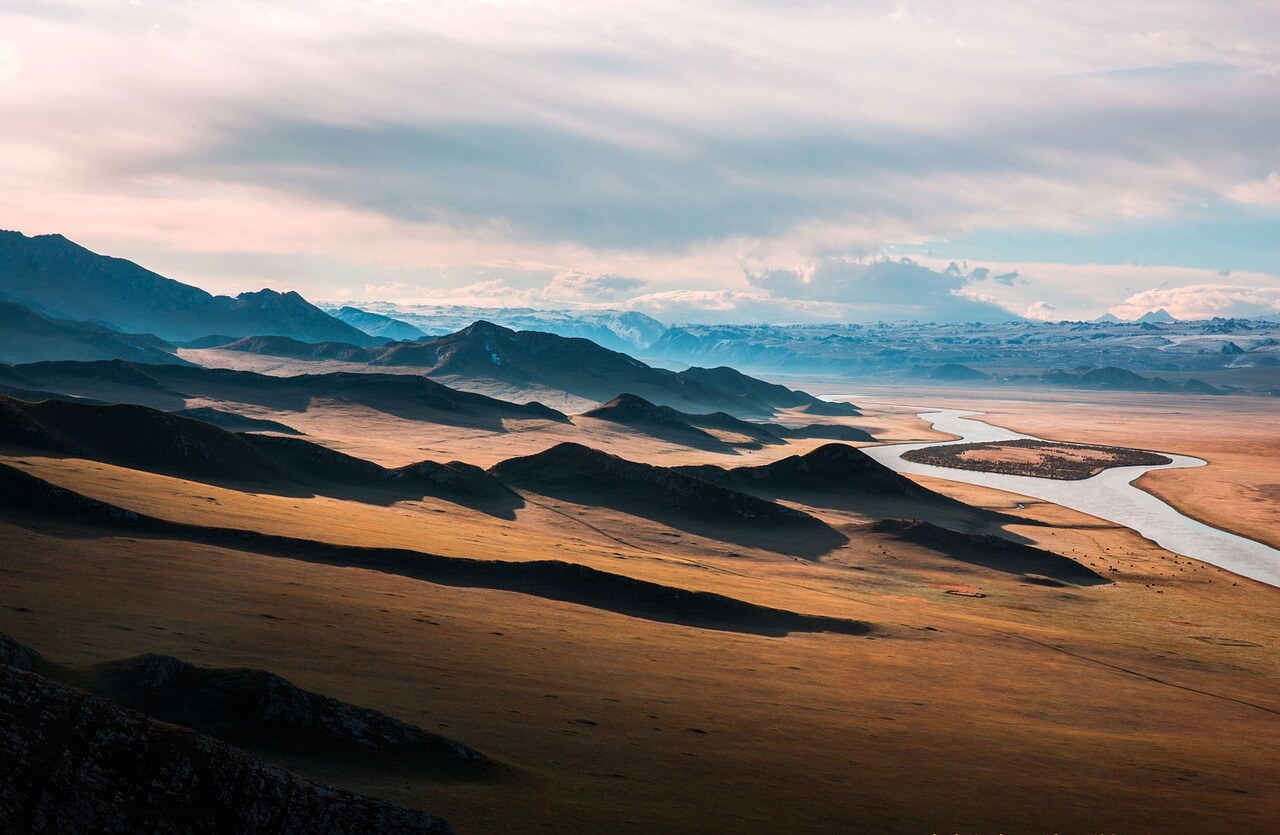
Want even more examples of round-up articles? Here you go:
- 12 new art exhibits to see this summer (Smithsonian)
- 21 ways to see America for cheap (Huffington Post)
- 41 places to go in 2011 (New York Times)
Personal essays
Publishers are experiencing something of a personal essay fatigue , so the market for more might be scarce these days. However, quality trumps all, and a good personal travel essay is just plain good writing in disguise: something that possesses a strong voice while showing insight, growth, and backstory.
Just don’t make it a diary entry. In an interview with The Atlantic , travel writer Paul Theroux said: “The main shortcut is to leave out boring things. People write about getting sick, they write about tummy trouble. They write about waiting. They write three pages about how long it took them to get a visa. I’m not interested in the boring parts. Everyone has tummy trouble. Everyone waits in line. I don’t want to hear about it.”
Here’s a jumping-off point for personal travel essays:
- Taking the Great American Roadtrip (Smithsonian)
Have a burning opinion to share? Sometimes publications end up giving op-eds to staff, but there are always open calls for opinion pieces.
Travel op-eds are much rarer than political opinion pieces, but there’s a pattern to the ones that make the cut: good persuasive writing. If you can come at a topic from a unique angle (and argue your case clearly) then you may be able to publish your opinion.
If you’re in the mood for travel op-ed articles, see:
- The West Coast Is The Best Coast For Food In America (Food & Wine)
- Why Climate Change Is Actually Relevant To Travel (Conde Nast)
Travel Blogging

When typing “travel blog” into Google returns 295 million results, we can guess it’s a fairly competitive market.
Here’s the plus side: bloggers get to write what they want and go where they please. When it comes to blog posts, there are no editors, no gatekeepers. Only you and the “PUBLISH” button.
We won’t go revisit the types of travel writing we covered earlier (such as the roundup format). Instead, we’ll explore some of the other formats bloggers use to tell their travel stories. Since the rules of travel blogging are next to non-existent, our tally below is by no means definitive. And, again, our best advice is to note what your favorite bloggers do on their blogs.
Already running a successful travel blog? You might consider turning it into a full-length book !
How-to articles are already fairly popular in magazines, but they’re positively omnipresent in the travel blogging world. Blogs provide a direct communication platform, allowing trust to build up quicker with the readers. As a result, for the search query, “How to travel Europe on a budget,” six out of the top ten results are posts from trusted independent blogs.
A How-To article is the most standard form of advice column a travel blogger can produce. It’s intrinsically useful, promising that it’ll teach something by article’s end. A blogger’s challenge is delivering fully on that promise.
How to read more How-To articles? We got you covered:
- How To Start A Travel Blog (Nomadic Matt)
- How To Travel Solo To A Party Destination (Adventurous Kate)
- How to Visit Penang’s Kek Lok Si Temple (Migrationology)
Itineraries
Itineraries reveal the schedule that the writer took at a given destination, city-by-city or sight-by-sight. They’re meant for the traveler who’s embarking on a similar trip and needs a template. Typically, you’ll find that an itinerary post is an easy place for you to slip in recommendations, anything from the accommodation you used or the restaurants you tried.
You can use itinerary posts to reinforce your blog’s brand. For instance, an itinerary posted on a blog focused around budget travel will probably maximize cost-saving chances.
For more itineraries, see:
- My Trip To Japan (A Complete Japan Itinerary)
- Backpacking Vietnam on a budget: 2-3 Weeks Itinerary + Tips
Longform posts
Longform travel blogging tells a travel story through extended narrative content, as it takes a week’s worth of adventure and shapes it into a story. Longform blog posts about travel often end up being creative nonfiction : a way to present nonfiction — factually accurate prose about real people and events — in a compelling, vivid, dramatic manner.
Photography can add another dimension to the form, as Emmanuel Nataf (our co-founder!) shows on his travel blog . And Reedsy's very own Arielle provides a glimpse into why she prefers longform travel writing on her blog, Steps, a Travel Journal :
My favourite kinds of stories are the ones that give you a real sense of place. That’s why I enjoy longform travel blogging: I get to describe the character of a place through the experiences I encountered there.
If you want to dip your toe into the sea of longform posts, you can also read:
- The Cow Head Taco Philosopher King of Oaxaca (Legal Nomads)
- The Best Worst Museum In The World
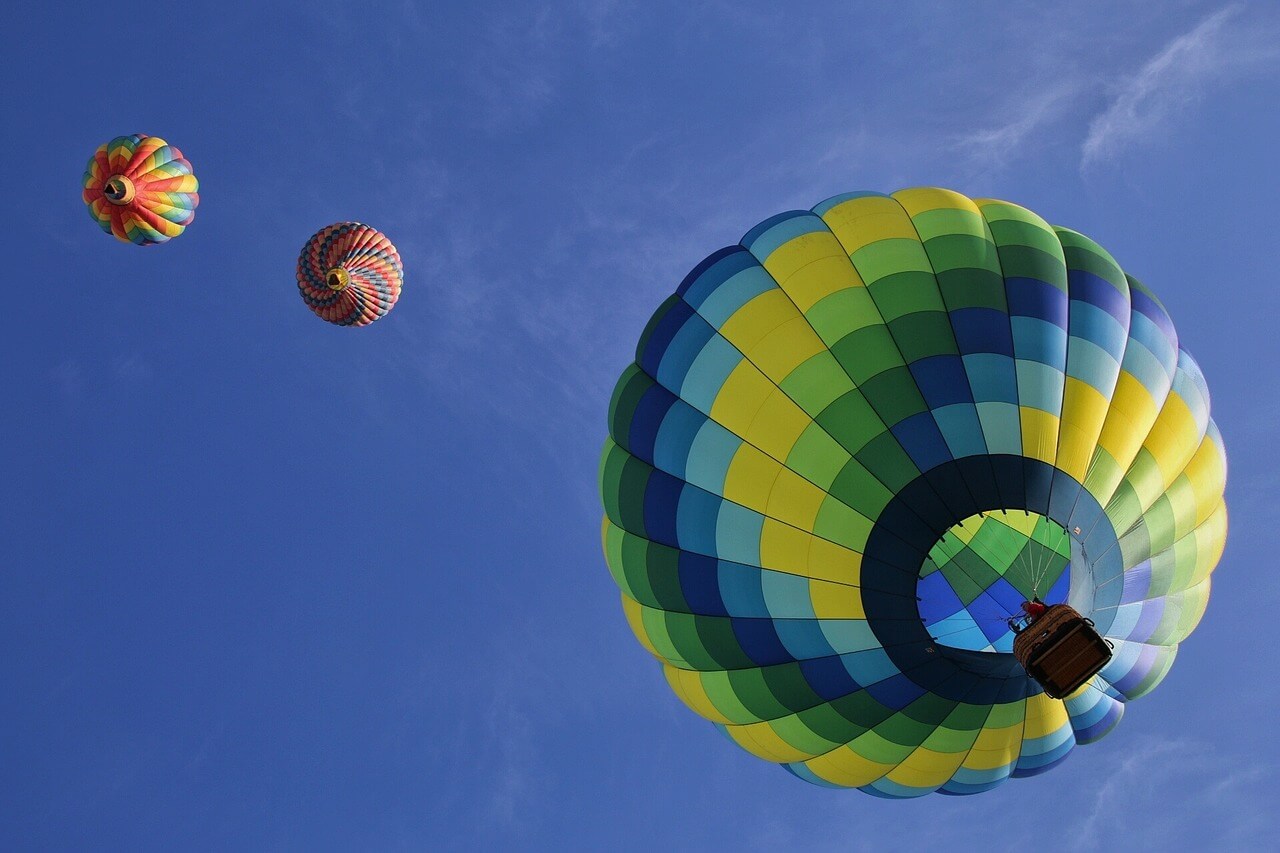
When it comes to writing a book, you can take all the challenges about travel writing from above and magnify it times 2,000. If you’re asking readers to commit to you for more than 100 pages, you’d best make sure that your book is worth their while.
As far as examples go, travel writing’s boomed in the mainstream book market recently. But there’s much more to it than Eat, Pray, Love and its descendants.
Travelogues
In travelogues, authors record their adventures in a way that illustrates or sheds insight upon the place itself. Travelogues possess a storied past, from Lady Mary Wortley Montagu’s Turkish Embassy Letters in 1763 to Mark Twain’s 1867 The Innocents Abroad , which paved the way for the sort of comic travelogues that Bill Bryson’s perfected today.
Up for some travelogues? Check out:
- Notes From A Small Island , by Bill Bryson
- In Patagonia , by Bruce Chatwin
- Travels with Charley In Search of America , by John Steinbeck
Travel memoirs
Nowadays, travel memoirs are practically synonymous with Elizabeth Gilbert’s wildly popular Eat, Pray, Love and Cheryl Strayed’s bestselling Wild , both of which were recently adapted into Hollywood blockbusters.
That said, be aware that you’ll need a pretty exceptional personal story for your memoir to compete in today’s market . If you’re still set on writing or self-publishing a travel memoir, it’s tricky to balance personal backstory and travel for 400 pages, so think about taking on a professional for a second pair of eyes.
Did you know? You can find Nicki Richesin , a top Bloomsbury editor who’s edited for Cheryl Strayed, on our marketplace.
In addition to Eat, Pray, Love and Wild , you can read:
- Under the Tuscan Sun , by Frances Mayes
- Coasting , by Jonathan Raban
- Wind, Sand, and Stars , by Antoine de Saint-Exupéry
As Oscar Wilde said, “I never travel without my diary. One should always keep something sensational to read in the train.” But these days, people are replacing diaries with travel guides — the ubiquitous Lonely Planet becoming one of the more common sights on transit.
Travel writing in guidebooks is straightforward, informative, and fact-filled. In addition, a certain amount of responsibility comes with the job. Lonely Planet alone is read by millions of travelers worldwide.
General Tips and Guidelines

As we mentioned before, the trick to producing great travel writing is ultimately simply writing well . To that extent, you should make sure to follow all the guidelines of good writing — not least, spell-checking your article before submitting or publishing it anywhere. You don’t want an editor or reader to see it while it stilll reads lik edis.
Also, keep in mind the tone, style, and vibe of the publication and platform (and by extension, your audience). A story about a moon-rock could go into a kid's magazine or it could go into Scientific America .
Finally, some category-specific tips:
- If you’re freelance writing, always check submission guidelines. Publications may accept only pitches or they may welcome articles “on spec” (pre-written articles). Some sources only take travel articles that were written within 6 months of the trip.
- If you’re blogging, brand your website (same advice if you’re an author who’s building a homepage ).
- If you’re writing a book, get a professional editor! An unedited book is an unwieldy thing, and professional eyes provide direction, continuity, and assonance. ( Layout designers can be important if you’re publishing a travel photography book, in the meanwhile.)
Travel writing isn't a cinch. In fact, it's a long and often hard grind. But by figuring out what type of travel writing you want to try your hand at, you're taking the crucial first step.
7 responses
Amanda Turner says:
20/03/2018 – 16:20
Thank you, this was very helpful. Here's one of mine: http://vagabondingwithkids.com/every-mothers-guide-to-piranha-fishing-in-the-amazon/
Travalerie says:
24/05/2018 – 18:42
I landed on this page Googling for one thing and coming up with another. Haha! But what I found instead was helpful as I'm devouring as much as I can on travel writing. A few months ago, I started a new travel business, revamped my website including a new blog, and am in the process of writing, writing, writing. I took 2 trips this year so far and wrote what seemed like a mini-novella. Burning out in the process. I know I can do better. But I had no idea what I was writing could be re-worked to fit a certain category of travel writing -- which is what I found helpful in this post above. Thanks https://www.travalerie.com/blog
Surya Thakur says:
04/03/2019 – 12:39
Very good information. Lucky me I discovered your blog by chance (stumbleupon). I’ve saved as a favorite for later! KuLLuHuLLs
David Bishop says:
08/05/2019 – 12:28
Thanks for this good article. I'm in my third year on the road and recently started my senior solo adventure travel website. I think my site has some pretty good stuff, of course. Take a look and tell me what you think. www.davidhunterbishop.com
Iris C. Permuy says:
23/05/2019 – 18:03
Thank you very much for all of these useful pieces of advice. I will make sure to implement them all on my travel blog, which is a combination of travel and gastronomy and uses the memoir and itinerary types, apart from recipes. Come check it out if you feel like it! I am more than open, eager for some professional feedback :)
Serissa says:
26/10/2019 – 14:53
This post is the perfect diving board for aspiring travel writers. I plan to link to this page from my travel blog if that is alright! ?? The link on my website will appear as "[title of this post] by Reedsy Blog". I assume this is alright, but if not, please email me directly to let me know! Thanks so much!
↪️ Martin Cavannagh replied:
29/10/2019 – 10:11
We'd be absolutely delighted if you shared this article on your blog :)
Comments are currently closed.
Continue reading
Recommended posts from the Reedsy Blog

450+ Powerful Adjectives to Describe a Person (With Examples)
Want a handy list to help you bring your characters to life? Discover words that describe physical attributes, dispositions, and emotions.

How to Plot a Novel Like a NYT Bestselling Author
Need to plot your novel? Follow these 7 steps from New York Times bestselling author Caroline Leavitt.

How to Write an Autobiography: The Story of Your Life
Want to write your autobiography but aren’t sure where to start? This step-by-step guide will take you from opening lines to publishing it for everyone to read.

What is the Climax of a Story? Examples & Tips
The climax is perhaps a story's most crucial moment, but many writers struggle to stick the landing. Let's see what makes for a great story climax.

What is Tone in Literature? Definition & Examples
We show you, with supporting examples, how tone in literature influences readers' emotions and perceptions of a text.

Writing Cozy Mysteries: 7 Essential Tips & Tropes
We show you how to write a compelling cozy mystery with advice from published authors and supporting examples from literature.
Join a community of over 1 million authors
Reedsy is more than just a blog. Become a member today to discover how we can help you publish a beautiful book.

We made a writing app for you
Yes, you! Write. Format. Export for ebook and print. 100% free, always.

1 million authors trust the professionals on Reedsy. Come meet them.
Enter your email or get started with a social account:
National Geographic content straight to your inbox—sign up for our popular newsletters here

The Masterclasses 2023: 10 travel writing tips from our experts
From establishing a niche to tackling writer’s block, the autumn series of The Masterclasses saw 12 of the UK’s leading travel journalists share the tips and tricks behind their success.
The Masterclasses by National Geographic Traveller (UK) returned in September 2023 with a brand-new series of insightful, hour-long online sessions curated for aspiring travel writers and photographers.
Leaving no stone unturned, the expert panel of travel writers explored everything from penning that all-important opening line to forming good relationships with editors. Throughout the three sessions, they shared a wealth of inside knowledge — offering up advice that will prove invaluable to anyone hoping to make travel writing a full-time career.
These are their 10 top tips on getting your story published, navigating the industry and using structure to elevate your travel writing.
1. Know your reader
“I would say the number one mistake freelance writers make when pitching is they don’t understand the audience of the title. The best thing you can do if you’re really interested in writing for a publication is to go out and buy yourself the magazine and familiarise yourself with the content, the tone and the kinds of things that the readership might find of interest.” — Alicia Miller, Pitching and getting published
2. Be patient
“If you’re really interested in something, then there will be an audience out there for that story. It’s just about finding the right home for it. Don’t get discouraged — and believe in your idea! Because if you find it interesting, other people will too.” — Daniel Stables, Pitching and getting published
3. Win over commissioning editors
“When I first started freelancing, editors didn’t know who I was. One way of showcasing my knowledge was deeply researching a destination and including a taste of that in the pitch. Make it concise, but also show that you have knowledge about the destination. If I was working with a new editor for the first time, I would always include links to previous work, or somehow demonstrate my expertise in the subject.” — Qin Xie, Pitching and getting published
4. Utilise social media
“Dinosaurs like me may absolutely despise it, but the reality is that if you’re a travel writer and you have no presence on social media, you have no presence.” — Tharik Hussain, How to be a savvy travel writer in 2023
5. Know today’s travel writing landscape
“Perhaps 10 years ago, 20 years ago, travel writing came from a person’s appreciation of a destination. Now what we’re looking at is trying to capitalise on what other people in the big internet landscape are looking for… Travel writing is kind of evolving away from being that destination-led 'this was my experience, and this is how you can recreate it' and it’s turning to using travel as a sort of lifestyle trend.” — Cathy Adams, How to be a savvy travel writer in 2023
6. Find a niche
“Editors, increasingly, are looking for people either based in a destination or people who know a place really well and really understand the culture. And so, a couple of benefits of having a niche are that it helps editors find you: they can remember what your patch is. And then, on a personal level, I find it really satisfying to find those stories that take you to the deeper levels of a destination. You have to have a really genuine passion for the place because it’s a bit like writing a book: you still have to find it interesting after 50,000 words.” — Zoey Goto, How to be a savvy travel writer in 2023

7. Find the right working environment
“Usually, I’ll find some travel writing from a writer I really like, and I’ll kind of read over their pieces just to get in the right frame of mind. I’ll usually listen to some quite amped-up music — usually the same playlist I use for running — because it kind of gets you in the mood to do things. For actual writing, I’m a big fan of white noise. Having narrowed it down over several years, I think my favourite type of white noise is the tumble dryer; there’s a whole tumble dryer playlist on Spotify that I am really dedicated to.” — Georgia Stephens, How to structure your storytelling
8. Write as though talking to a friend
“You don’t have to use highfalutin prose to make an intro work. Often, it’s the simple stuff. Good journalism is a bit like talking to a friend. Just tell me what’s happening… And in the same way that your friends wouldn’t when you tell them about your travels, [the reader] won’t listen to more than two sentences of description. With the greatest of respect, no one cares.” — James Stewart, How to structure your storytelling
9. Make the most of quotes
“Quotes are a way to deliver information to your reader from a different perspective — and it’s so much more powerful coming from someone else other than you. It’s definitely important to use quotes, especially when you’re writing about communities that you may not be a part of. Allowing people to tell their stories in their own words as much as possible, is so important.” — Katherine Gallardo, How to structure your storytelling
10. Don't be afraid of writer's block
“As someone who has come to this relatively recently, I would say that even the best writers struggle to write sometimes. Everybody gets writer’s block, even published authors. Just don’t beat yourself up. If it’s not coming, it’s not coming. Just come back to it another day.” — Georgia Stephens, How to structure your storytelling
Related Topics
- ADVENTURE TRAVEL
- TRAVEL AND ADVENTURE
- STORYTELLING
You May Also Like

A Croatian coastal odyssey: why road-tripping from Split to Dubrovnik is easier than ever

Four culinary experiences to try in Hokkaido
Fourth of july special.
Get National Geographic magazine for $10 off

How new flights to Akureyri are opening up northern Iceland

The essential guide to Switzerland

10 best things to do in Switzerland

An insider's guide to Denver, Colorado's wildly creative capital

A guide to Hamburg, north Germany's fiercely independent maritime hub
- Environment
History & Culture
- History & Culture
- Mind, Body, Wonder
- Paid Content
- Terms of Use
- Privacy Policy
- Your US State Privacy Rights
- Children's Online Privacy Policy
- Interest-Based Ads
- About Nielsen Measurement
- Do Not Sell or Share My Personal Information
- Nat Geo Home
- Attend a Live Event
- Book a Trip
- Inspire Your Kids
- Shop Nat Geo
- Visit the D.C. Museum
- Learn About Our Impact
- Support Our Mission
- Advertise With Us
- Customer Service
- Renew Subscription
- Manage Your Subscription
- Work at Nat Geo
- Sign Up for Our Newsletters
- Contribute to Protect the Planet
Copyright © 1996-2015 National Geographic Society Copyright © 2015-2024 National Geographic Partners, LLC. All rights reserved
Top 10 Travel Writing Books
Travel Writing 2.0: Earning Money from your Travels in the New Media Landscape – A well-written and easy to understand guide for aspiring travel writers that covers today’s digital environment as well as traditional publishing, both of which are vital for a truly successful career in travel writing. With plentiful and generous advice, and numerous interviews with successful travel writers and authors, Mr. Leffel offers a comprehensive learning tool that should be a part of every writer’s library.
» Read our full review of Travel Writing 2.0
Lonely Planet Travel Writing (How to) – The definitive guide for both aspiring and experienced travel writers. What Lonely Planet is to millions of travelers around the world, this guide is to those who want to write about their travels. Whether you want to become a professional Travel Writer or are already a Travel Writer and just to improve your skills, we highly recommend this book. Limited budget and can only afford one book? This is the one.
The Writer’s Handbook Guide to Travel Writing – Full of good advice and a number of very interesting interviews with leading Travel Writers, The Writer’s Handbook is one you’ll refer to often as you build your own business and reputation. Learn how to avoid many common mistakes and get started on the right path to becoming a successful (or more successful) Travel Writer.
Travel Writer’s Guide – a solid basic guide that is better suited for beginning Travel Writers, particularly those who have not traveled extensively in the past, the Travel Writer’s Guide has a lot of great tips for planning and organizing a trip, along with good advice on how to interview others, how to structure your writing, and how to market your articles.
» Read our full review of Travel Writer’s Guide .
The Travel Writer’s Handbook: How to Write – and Sell – Your Own Travel Experiences – A unique perspective and solid tips on some of the smaller details (such as record-keeping), as well as a good focus on basics (like researching your destinations) make this book a useful and illuminating read, worth your time even if you’re an experienced travel writer. The newest edition covers relevant topics missing from previous versions, such as the opportunities bought about by the internet, as well as the advantages (and disadvantages) of digital photography.
» Read our full review of The Travel Writer’s Handbook .
The ASJA Guide to Freelance Writing: A Professional Guide to the Business, for Nonfiction Writers of All Experience Levels – filled with great suggestions and valuable tips, each of this book’s 26 chapters was written by a different member of the American Society of Writers and Journalists. Although you’ll find a lot of good nuggets of advice, the book’s focus is on writing , something that can get overlooked in the quest to become a professional writer. The best way to ensure your success as a writer is to make sure your writing skills are of a professional caliber, and this book will definitely help with that.
The Renegade Writer: A Totally Unconventional Guide to Freelance Writing Success – Unconventional is definitely the singular descriptive for this book. While full of common sense and good advice, this book turns most of the conventional rules of freelance writing upside down and breaks a few along the way, while still proving that success can often be found by not following the rules. Additionally, this book offers a unique value by providing readers with an online Wiki for writing markets, and access to successful query letters to help you with your own. The authors also offer online courses taught by successful freelancers on a wide variety of writing topics, including travel writing.
How to Make a Living As a Travel Writer – A well-organized primer on the industry of Travel Writing in general, with a number of good examples of different types of travel writing styles and articles. Nothing new here for experienced professional travel writers, but it’s a good starting point for those looking to become a travel writer.
Travel Writing: See the World. Sell the Story. – A thorough, comprehensive, and well-structured guide that includes exercises to reinforce it’s lessons, written by an experienced and successful travel writer. Included is a well-written explanation of the various classifications of travel articles, and a number of additional resources, such as writing examples, marketing directory listings, organizations, and more. This book stays focused with just nine chapters, so there is not a lot of wasted fluff here – a good read with good sound advice, perfect for beginners, but all travel writers can pick up a thing or two here.
» Read Our Full Review of Travel Writing: See The World, Sell The Story
Get Paid to Write! The No-Nonsense Guide to Freelance Writing – This book is unique amongst all others in this genre in that its author was also an editor and publisher, and he shares his experience and insights into the other side of the travel writing partnership – getting published. You may have wonderful writing skills, but getting published is about giving readers what they want, and this book will help you to do just that. Packed with good advice and insider tips and success secrets, this book is a “must-have” for any serious freelance travel writer.
» Read our full review of Get Paid To Write!: The No-Nonsense Guide to Freelance Writing
The Best Travel Writing 2008: True Stories from Around the World – Reading this collection of some of the very best articles from Travel Writers is a great way to get a feel for what makes a great story. Learning from these examples may just help you find your own style if you’re brand new at Travel Writing, or to improve your style if you’re already an experienced, if not already successful, Travel Writer. Some of these stories are so good you’ll feel like you were there – Travel Voyeurism at it’s finest!
Bonus! A Sense of Place: Great Travel Writers Talk About Their Craft, Lives, and Inspiration – Not a “travel writing guide book” – you won’t find how-to’s or getting-started advice here – but what you will find is an entertaining and illuminating look at the literary genre of Travel Writing from the perspective of some of the best in the business – writers whose words paint pictures and whose stories have drawn tourists from all over the world to the places they’ve written about. This book won’t teach you, but it will inspire you and encourage you, and you’ll likely find yourself reading it many times over.
All material on this site is subject to Copyright © 2008 - 2019. All Rights Reserved. No reprint/republication of any materials from this site without written permission from TWE.

Mastering the Art of Travel Writing: Tips for Students
D o you love writing and traveling? Do you dream about seeing the world and discovering hidden gems in every country you go to? Then you might have considered becoming a travel writer. Even though this is one of the dream jobs many students have, it comes with challenges too. Mastering the art of travel writing is not hard, but you have to put in a lot of dedication, effort, and time. This is a captivating genre that allows you to share your experiences, observations, and adventures from your journey. Writing about travel is what you, as a student, might aspire to.
So, you are probably looking for some tips and tricks on how to get started. What is travel writing? Are there more types of travel writing? Learn more about some travel writing tips that can enhance your craft and help you create engaging stories. While some spots can inspire you to write fascinating posts, you can take matters into your own hands and improve your skill.
Immerse Yourself in Traveling
Well, you cannot be a travel writer if you are not traveling. This is why it is essential to travel extensively. Explore distinct places , cultures, and landscapes. Get to know the locals, talk with them and find out more about the local traditions and social norms. Every country is different from another one. And even though some beliefs or lifestyles might be similar, there are so many things that tell them apart. And you can learn more about this by traveling and talking with locals too.
However, as a student, you have academic responsibilities too. Getting an education in school is not only about attending classes or what notes you take during teaching but about writing essays and assignments too. And traveling around the world is time-consuming, which might make you fall behind your deadlines. Thankfully, there are essay writers for hire, essay writers that are skilled and professional and can help you complete your assignments. Getting some much-needed help will help you follow your passion and travel around the world. This way, you will gather experiences you can write about.
Maintain a Travel Journal
To write a travel short story or an article for your blog, you need to travel. But you also need to observe the peculiarities of every place you go to. You may not have time every day to write an article, but there is a solution. You could maintain a travel journal. Have it with you everywhere you go.
Write down your thoughts, impressions, and experiences while they are still fresh in your mind. This way, you make sure you do not forget anything worth mentioning. When you will sit down and write your articles later, this journal will be an invaluable resource.
Take Photos
If you want to become a travel writer, you have to write, of course. But photos can add more value to your travel stories or articles. So, whenever you can, aim to capture high-quality photos . Learn more about the art of photography to complement your words with images.
Read Widely
Besides practicing the art of writing more and traveling around the world, you could hone these skills by reading too. It is known that reading helps you expand your vocabulary as you learn new words that will help you convey the message effectively.
But, reading what other travel writers have published will help you learn more about writing techniques. How do they tell a story? How do they hook you and capture your attention? Reading widely does not mean that you will end up copying others. It just serves as a source of inspiration that will help you develop your unique voice.
Honesty and Authenticity
Many students who are aspiring to become travel writers think that they only have to share positive experiences from their travels. Indeed, when you discover new places and cultures, everything you see might be through some pink lens.
However, readers appreciate honesty and authenticity. So, help them see your experience through your eyes. Do not be afraid to share the parts of the trip that were not as pleasant. This will help them have a clear idea of what to expect from specific places. They are looking for genuine insights.
What to Keep in Mind?
Writing about traveling and trips around the world is an art. To excel in this craft, not only do you need to improve your writing skills, but also gain as much traveling experience as you can. For those who might not have the time or expertise, there are paper writers for hire who specialize in travel content. However, do not forget that travel writing is a journey in itself. Embrace the process, keep practicing, and let your passion for exploration and storytelling shine through your words.
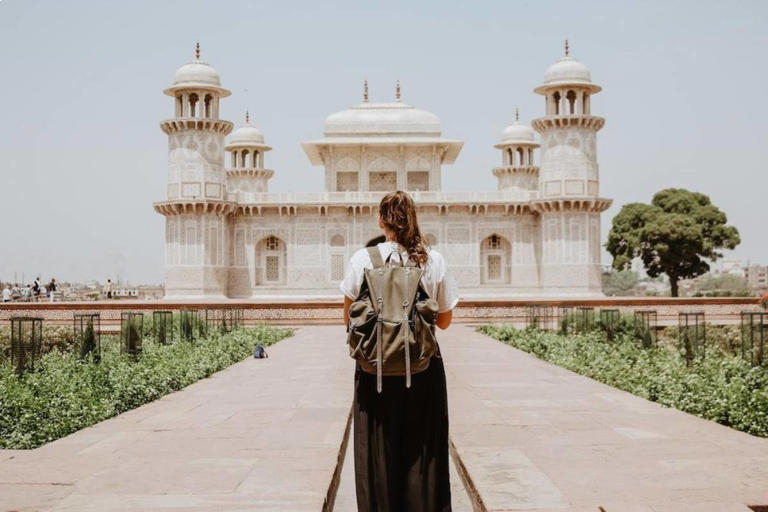
- Search Please fill out this field.
- Manage Your Subscription
- Give a Gift Subscription
- Newsletters
- Sweepstakes
If you click on links we provide, we may receive compensation.
- Travel Products
- Trends + Deals We Love
- Amazon Products
I’m a Travel Writer, and These Are the 15 Amazon July Fourth Travel Gear Deals You Won’t Want to Miss
Including roomy weekender bags, comfy travel sets, noise-canceling headphones, and more, starting at $8.
:max_bytes(150000):strip_icc():format(webp)/Screenshot2024-03-27at8.41.45AM-d2c20db7b82947f79a863625c7c42018.png)
Travel + Leisure
The Fourth of July is just around the corner, and with it comes one of the busiest shopping days of the year. In fact, Amazon has already begun preparing for the holiday by slashing prices sitewide , up to a whopping 70 percent.
Right now, travelers can save on much-needed travel essentials , ranging from luggage and tech to apparel and accessories. Deals can be found on expandable checked suitcases , portable digital travel scales , comfortable travel sets , and wireless noise-canceling headphones from big-name brands like Samsonite, Beats, and Vera Bradley. Best of all, prices start at just $8.
Whether you’re in the market for some new travel gear or are just looking for an excuse to add to your collection, we’ve done the heavy lifting and found you some seriously fantastic deals. So, without further ado, keep scrolling for the 15 best Fourth of July Amazon travel deals to make any summer plans smooth and effortless.
Apple AirTag
Apple AirTags should be your best friend when you travel. They can help you track your luggage while traveling, which if you’re anything like me, will help ease your mind. I use these every time I travel, whether for a domestic or international trip. They’ve especially come in handy when my luggage has been left behind during layovers, as I could track its exact location in the airport and when it was eventually making its way over to me. Although pricey, Apple AirTags are worth every penny, and the good news is that you can pick one up right now for just $25.
Samsonite Freeform Hardside Expandable Checked Spinner Suitcase
Samsonite is a brand that needs no introduction — the travel giant is known to pump out sleek and durable luggage with smart features including USB charging ports and internal compression dividers. If you’re in the market for a new suitcase or are just looking for an excuse to update your current one, then look no further than the Samsonite Freeform Hardside Expandable Checked Spinner Suitcase .
The suitcase features a built-in ID tag, a TSA-approved three-dial combination lock, and internal organization pockets to keep your belongings safe and secure when traveling. With all these smart features, it should come as no surprise that the suitcase has garnered over 10,000 five-star ratings on Amazon. Now, you can get it for an amazing 44 percent off at $157.
Bagsmart Toiletry Travel Bag
This small toiletry bag packs quite the punch when it comes to organizational capacity. It unfolds into four main compartments, two of which can hold full-sized bottles; even serial overpackers will be left with plenty of room to spare. But that’s not all, as it’s also crafted out of water-resistant polyester and features a 360-degree swivel non-slip metal hook so that you can hang it wherever you want. If that’s not enough to sway you, consider the following: it has over 46,000 five-star ratings, it’s currently Amazon’s top seller in toiletry bags, and it’s on sale for just $19 when you use the included coupon.
Vera Bradley Cotton Grand Weekender Travel Bag
Travelers tend to have one or two weekender bags in their luggage collection because they’re versatile, stylish, and spacious. For those looking for a weekender bag for their travels, consider the Vera Bradley Cotton Grand Weekender Travel Bag — it’s currently a whopping 50 percent off.
Crafted out of machine-washable recycled cotton and wrapped in a classically whimsical Vera Bradley print, this weekender bag is a no-brainer for its style, large capacity, and organizational capabilities. Its exterior features three slip pockets and two zip pockets, while its interior is lined with five mesh pockets. It also has a trolley pass-through sleeve to make any airport experience a seamless one by popping it on top of your luggage.
Anker Power Bank Portable Charger
A portable charger is a must-have when traveling and investing in one that can easily and quickly power up multiple devices at once is even more essential. This Anker Power Bank Portable Charger is not only sleek enough to fit into a personal item, but it also has enough juice to power any of your devices, from cell phones and wireless earphones to tablets and laptops — all at once . You’ll never have to worry about staying connected again while on the go with this small but mighty device. Its best feature, however, may just be that it’s currently on sale for $110, making it an investment worth every cent.
Tanming Sweater 2-piece Lounge Set
Let’s be honest: Traveling, especially by plane, is never a comfortable affair. And if you’re one of those unlucky souls who simply cannot catch a wink of sleep while flying, then it’s important to at least be comfortable even if you have to be awake. This two-piece sweater lounge set is sure to keep you comfy and relaxed on even the longest flights or if you find yourself in the dreaded middle seat.
Available in nine colors, this stylish set is lightweight enough that you’ll stay cool when moving around the airport, but thick enough that you’ll be warm once the temperatures in the airplane cabin inevitably cool. It’s a steal at just $32 when you use the additional onsite coupon for an extra 10 percent off at checkout.
Bronax Pillow Slippers
If you’ve ever wanted to know what it feels like to walk on clouds, these Bromax Pillow Slippers are the closest you’ll get to experiencing it. The unisex slippers, which are available in 15 colors ranging from neutral to vibrant, are very popular among travelers (if their more than 33,000 five-star ratings are any indication).
Fitted with a nearly two-inch thick sole, the slipper is lightweight, compression-resistant, and ideal for shock absorption. It’s the perfect shoe to travel with and is especially useful for those who may suffer from foot or ankle pain.
Bagail 4-pack Compression Packing Cubes
Serial overpackers, rejoice! Compression packing cubes like this pack of four from Bagail are the answer to all your packing struggles. Whether you’re traveling domestic or international, you’ll be able to pack all your clothing essentials, and then some, into these handy compression packing cubes. Available in four different sizes, they can compress everything from underwear, T-shirts, and dresses to bulkier items like jeans and sweaters. With over 14,000 five-star ratings, investing in this set of packing cubes may just be one of the best travel decisions you make — get them now for just $25.
Travel Inspira Portable Digital Luggage Scale
For those who have had to shell out cash at the airport check-in desk for overweight baggage, the good news is that those days are over. All you need to avoid costly baggage fees is this handy Travel Inspira portable digital luggage scale. Slim enough to fit into a personal item, the small but mighty scale can weigh your suitcase or bag in both pounds and kilograms. Its budget-friendly price tag, now on sale for just $8, will hardly dip too far into your travel budget and is especially worth it if it’ll end up saving you hundreds at the airport.
Rockland Melrose Underseat Carry-on Suitcase
Underseat carry-on suitcases are ideal for quick trips and weekends away. However, finding one that can truly fit under the seat in front of you, no ifs, buts, or maybes, can be tricky — that’s where the Rockland Melrose Underseat Carry-on Suitcase comes in handy.
The small two-wheel suitcase boasts a slew of organizational features including a spacious main compartment, a removable, zippered divider pocket, two slip pockets, and a transparent zippered pocket. The underseat carry-on exterior features two large mesh pockets, ideal for holding bulkier items or water bottles. The cherry on top is its price — it's currently an irresistible 70 percent off and just $55.
Hydro Flask Insulated Stainless Steel 20-ounce Water Bottle
Staying hydrated when traveling, especially while flying, is important to feeling and looking good upon landing. Flying for prolonged periods of time dehydrates your body and skin, and I’ve noticed that I always feel much more refreshed after a long journey when I make the conscious effort to stay hydrated during it.
So, ahead of your summer travels, save 40 percent on this insulated stainless steel 20-ounce Hydro Flask water bottle, one of the best water bottle brands on the market (and one of our editors' top picks ). For just $20, you can keep your body happy and hydrated while jetting off around the world.
Alaska Bear Sleep Mask
Crafted from a delicate silk-cotton blend, this Alaska Bear sleep mask is sure to help even those who can’t sleep on planes find a few moments of rest. It features eye recesses to remove pressure around your eye sockets and is stuffed with a lightweight layer of foam to offer comfortable and lightweight cushioning. The mask, which has over 29,000 five-star ratings, is currently 50 percent off and just $10. So, on your next long-haul trip, throw this over your eyes, put on a pair of noise-canceling headphones, and simply relax.
Beats Studio3 Wireless Noise-canceling Headphones
Traveling, especially by plane or train, can be loud. There’s the sound of people talking, jet engines rumbling, and wheels grinding on tracks, all of which can make it pretty hard to relax. Wireless noise-canceling headphones are the best way to zone everything out and focus on yourself, but not all headphones are capable of truly blocking out the rest of the world.
The Beats Studio3 Wireless Canceling Headphones, which have earned nearly 40,000 five-star ratings, are bound to drone out even the most persistent of noises. They’re compatible with iOS and Android devices, feature real-time audio calibration, and have up to 22 hours of battery life, so you can watch a movie or listen to music or a podcast uninterrupted. Although they're normally $350, get them now for an impressive 55 percent off at just $159.
Zero Grid RFID-blocking Travel Document Wallet
It might sound obvious, but it’s important to keep all your documents in a safe and easy-to-reach place when traveling. This compact Zero Grid travel document wallet, built with RFID-blocking technology to protect you from scams and identity theft, is one way to achieve peace of mind while on the go.
Aside from holding your passport, the document wallet can also safely store your tickets, additional forms of identification, loose change, and up to 10 credit cards. It also comes with a handy micro travel pen in case you need to fill out any customs forms. For $18 (when you use the extra 10 percent off coupon), you can remove a stressor from your travels and keep all your essentials in one secure place.
Samsonite 2-in-1 Magic Travel Pillow
This ultra budget-friendly travel pillow from travel giant Samsonite was counted among the best travel pillows of 2024 , based on research and testing from our editors. The microbead pillow, now on sale for $15, is fitted with a versatile two-in-one design that can seamlessly switch from a U-shape to a rectangle to find the one that works best for you. It’s lightweight, compact, and easy to carry, so it’ll never get in the way of your traveling.
Love a great deal? Sign up for our T+L Recommends newsletter and we’ll send you our favorite travel products each week.
Shop More T+L-Approved Picks
:max_bytes(150000):strip_icc():format(webp)/tl-best-amazon-outlet-fourth-of-july-deals-1346f8e903d24ee38c8e59ffe9ecb6a4.jpg)
Related Articles
Our 10 favorite travel hacks
Want to travel better? The Upgrade has your back.

The Upgrade is By The Way’s series offering writers a place to share their travel hacks and hot takes. For every edition, illustrator extraordinaire Min Heo animates the advice. Below are some of our most popular entries. Some may look basic, but ask yourself: Are you optimizing your travel routine?
Want to write your own Upgrade? See how to submit here .
Dress up for your flight
David Coggins longs for the Cary Grant era of aviation, wishing more passengers would step up their game to bring some dignity and glamour to the experience. The author of “ Men and Style ” argues that making a sartorial effort shows respect to gate agents and flight attendants in uniforms — and your fellow passengers.
“I realize this is a losing battle, but it’s still a good fight,” Coggins writes. “If a sweatsuit is your truth, then there’s nothing else I can say, other than nobody has looked good in a sweatsuit in the history of the world.”
He’s not sure whether wearing that checked blazer will really get you upgraded to first class , but it couldn’t hurt.
Visit ‘second cities’ in Europe
Rick Steves is our favorite pétanque-playing philanthropist . He’s a respected travel expert, too. In his beloved Europe, Steves recommends you break up every visit to a capital with a final day in a “ second city .” Think Porto vs. Lisbon , Glasgow vs. Edinburgh and Marseille vs. Paris .
“While lacking the popularity and the bucket-list sights,” Steves writes, “Europe’s second cities tend to enjoy a creative edge, a strong civic spirit, a Rust Belt toughness, fun-loving eateries with cutting-edge menus, entertaining street art … and far fewer tourists, which also means lower prices, a more authentic welcome and arguably a more honest cultural experience.”
Pick your travel uniform
Like Steve Jobs and many practitioners of quiet luxury , travel writer Jessica Poitevien is all about eliminating decision fatigue. Standardizing a set of clothes only for flying doesn’t just help you streamline your packing routine. Poitevien doesn’t “worry about leaving anything important behind, because I have two of everything: one that’s for home and one that sits in my backpack waiting for the next trip. All I add is my passport, laptop and current reading material, and I’m good to go.”
What’s her uniform look like?
“My top is always a long, loosefitting T-shirt or sweater, so I’m covered through all the bending and lifting that happens with luggage and going through security,” Poitevien writes. “I add a jean jacket to stay warm on those freezing planes and use its inner pockets to keep my phone, passport and boarding pass within easy reach.”
Cut your airport arrival dangerously close
It’s not for the faint of heart, but travel writer Brad Japhe wants to waste as little of his life in airports as possible.
“I live about five miles from Los Angeles International Airport,” Japhe writes, “and if my scheduled domestic flight is at, say, 9 a.m., I’m comfortable entering an Uber up until 8:32 a.m.”
Besides some serious bravado, pulling this off requires the use of PreCheck or Clear, among other conditions:
- Traveling solo .
- Express security lanes .
- A familiar airport.
- No checked bags .
Order the Hindu meal
Food and travel writer David Farley thinks we should reject the binary of chicken or pasta in favor of a plant-based meal that exudes spice . By reserving a Hindu meal on your next long-haul flight, you could be treating yourself to dal makhani and naan, or bhindi masala and raita. As long as you reserve your meal at least 24 hours ahead of your flight, airlines told us, you won’t be taking a special one away from anyone else.
Get up early on vacation
Life is short. So take a cue from the dad playbook, and seize the vacation day with an early wake-up call . For Deputy Features Editor Amanda Finnegan , rising with the sun means hours of calm before your travel partners join you. And by 10 a.m., you’re ready for your first nap.
Make a fashion statement in black and blue
Rachel Tashjian ’s job is cooler than your job. As a fashion writer, she flies to Europe three or four times a year for work, watching extravagant clothes appear in fashion shows for weeks at a time . It’s a dream, but there’s an understandable amount of pressure to look amazing every single day. Enter the black-and-blue hack . By mixing a pop of navy in with a collection of dark pieces, you’re making the daring choice to break one of the primary rules of fashion.
Her packing list:
- Two skirts: something that flows and something that hugs.
- Three jackets: a classic blazer, something weird and an open-front wool jacket.
- One pair of trousers.
- One black dress.
- Three T-shirts.
- Black shoes.
Stop eating airport food
Noah Galuten is a hero hubby. By the simple act of making his wife a sandwich to take to the airport, the Los Angeles-based chef and author had the epiphany that we should all swear off precooked egg patties forever .
Sure, you could settle for upcharged coffee, a Dunkin’ wrap or a sad Caesar from Weirdly Branded Bar & Grill You Have Never Heard Of. Or, you could be the game changer for your household, whipping up breakfast burritos or English muffin sandwiches — or just buying a better sandwich in advance in the real world (see: Emily’s Pork Store , Brooklyn).
Take a solo trip
The secret to a happy relationship is compromise. And giving your partner time to travel solo — especially if you’ve got a kid at home.
That’s the philosophy preached by writer Austin Graff , an extrovert who has learned to appreciate the benefits of going it alone: It’s easier to get into top-rated restaurants, there’s time to wander, and you return to your family more thoughtful and present.
Take a buffer day
The weekend-warrior routine is for people in their 20s. Once you’re in your 30s, Rachel Orr writes, you know well enough to quit pushing so hard and to give yourself an extra day to chill before rushing back to work . “Think of it as a mini staycation at the end of your vacation,” she suggests.
More travel tips
Vacation planning: Start with a strategy to maximize days off by taking PTO around holidays. Experts recommend taking multiple short trips for peak happiness . Want to take an ambitious trip? Here are 12 destinations to try this year — without crowds.
Cheap flights: Follow our best advice for scoring low airfare , including setting flight price alerts and subscribing to deal newsletters. If you’re set on an expensive getaway, here’s a plan to save up without straining your credit limit.
Airport chaos: We’ve got advice for every scenario , from canceled flights to lost luggage . Stuck at the rental car counter? These tips can speed up the process. And following these 52 rules of flying should make the experience better for everyone.
Expert advice: Our By The Way Concierge solves readers’ dilemmas , including whether it’s okay to ditch a partner at security, or what happens if you get caught flying with weed . Submit your question here . Or you could look to the gurus: Lonely Planet and Rick Steves .

- Search Please fill out this field.
- Newsletters
- Sweepstakes
If you click on links we provide, we may receive compensation.
I’m an Amazon Shopping Writer, and the 25 Deals I’m Eyeing This Week Start at Just $3
Including maxi dresses, skin care essentials, and luggage sets.
:max_bytes(150000):strip_icc():format(webp)/IMG_3316-176421d8a2d44ec19ca50935701feb7d.jpg)
- Overall Deals
- Fashion Deals
- Beauty Deals
- Travel Deals
Amazon/ InStyle
Between the Fourth of July weekend, Prime Day on July 16 and 17, and ongoing summer sales , July is shaping up to be an incredible month for shopping—I would know, given that I’m an Amazon writer. It’s my job to stake out the best fashion, beauty, home, and travel deals, and right now, the retailer is overflowing with major discounts on everything from skin-brightening face masks to 50-percent-off voice-controlled smart vacuums.
While this whole month promises to be full of great discounts, I’m particularly impressed with this week’s unique selection of deals, which include low prices on summer wardrobe must-haves like denim shorts , polarized sunglasses , and leather sandals . Plus, with several vacations on the horizon, I couldn’t help but notice that there are plenty of steep discounts on travel essentials, like this 54-percent-off luggage set . And given that I’m moving in a few weeks, I couldn’t ignore Amazon’s unbelievable home goods section, which includes deals like a customer-loved air fryer and the retailer’s number-one best-selling comforter . If you don’t feel like scrolling through endless Amazon pages, that’s what I’m here for; below, find the 25 best deals I’ve spotted this week, starting at just $3.
5 Best Overall Deals:
- Levi’s High-Waisted Mom Shorts , $30 (Originally $60)
- L’Oréal Paris True Match Lumi Glotion , $14 (Originally $17)
- Ninja Ninja Fit Compact Personal Blender , $50 (Originally $70)
- Samsonite Freeform Hardside Carry-On Suitcase , $112 (Originally $200)
- Dyson V8 Cordless Vacuum Cleaner , $380 (Originally $470)
Online shopping can be overwhelming—I get it. That’s why I hand-picked the top five deals you should be paying extra attention to this week. As a denim shorts fanatic, I was shocked to see that Levi’s—the only denim brand I buy—has shorts available for half-off their usual price. As for beauty finds, L’Oréal’s number one best-selling skin illuminator , which customers say leaves their skin “ glowing and radiant ,” is also available for just $14. And even if you aren’t moving anytime soon (lucky you), Amazon’s jaw-dropping discounts on household necessities—like this coffee maker over 20,000 customers bought in the past month —mean there’s never been a better time to spruce up your space. This is just a small slice of all the steals I’ve found this week; shop more editor-approved picks, including items for up to 54 percent off, below.
Best Fashion Deals:
While summer is ripe with new trends, it’s also the time of year I tend to rely on basics the most. The humidity and heat make every task feel exhausting, so I reach for pieces I can throw on without a second thought—and thankfully, Amazon has tons of options. A white maxi skirt is easily one of my most-worn summer staples, and this number-one best-seller is on sale for just $28. For a pair of sandals that are versatile enough for the pool, running errands, or even summer wedding, these leather slides are another favorite. Shop more perfect-for-summer fashion deals, below.
- Trendy Queen Two-Piece Shorts Set , $20 (Originally $26)
- Nashalyly Chiffon Elastic High-Waist Maxi Skirt , $28 (Originally $35)
- Grace Karin Halter-Neck Floral Maxi Dress , $39 (Originally $50)
- Rihero Store Slip-On Leather Slide Sandals , $24 (Originally $34)
- Sojos Classic Polarized Aviator Sunglasses , $13 (Originally $20)
Nashaly Chiffon Elastic High Waist Maxi Skirt
Speaking from experience, few items are easier to style than a white maxi skirt. This chiffon option features an elastic waistband and has been purchased by over 2,000 Amazon shoppers in the past month. Pair it with a breezy blouse and sandals, linen top and sneakers, or a bikini top and flip flops—the options are endless.
Rihero Store Slip-On Leather Slide Sandals
For an everyday sandal, these leather slip-ons are a chic option that can easily be dressed up or down whether you buy them in black, white, green, or brown. Customers say the sandal’s cushioned soles provide “ excellent support for all-day wear ,” making them ideal for getting your steps in.
Best Beauty Deals:
As someone who owns more serums , face masks, and hair oils than I’d like to admit, the warmer months are when I like to simplify my routine. Amazon’s current beauty deals include customer-favorites like the vitamin C face mask over 9,000 shoppers have bought this month, plus this two-pack of spa headbands for less than $2 apiece. Given that I’m more picky about my beauty buys this time of year, my five hand-picked beauty deals below include only the best, and they start at just $3.
- Maybelline Lash Sensational Sky High Mascara , $9 (Originally $13)
- SHVYOG Vitamin C Face Mask , $10 (Originally $15)
- Nakraly 2-Piece Spa Headbands , $3 (Originally $7)
- Boscia Probiotic Exfoliating Face and Scalp Powder , $25 (Originally $38)
- Majestic Pure 100% Organic Castor Oil , $8 (Originally $15)
SHVYOG Vitamin C Face Mask
“ Dewy ,” “ radiant ,” and “ hydrated ” are all ways I want to describe my complexion in the summertime—and luckily, that’s just how customers described theirs after using this Vitamin C Face Mask . Grab it while it’s on sale for just $10.
Majestic Pure 100% Organic Castor Oil
Given that I’m trying to simplify my beauty routine, I love that this castor oil is suitable for hair, skin, and nails. Shoppers have used it for everything from dry skin to thinning hair .
Best Home Deals:
While my online shopping typically involves scouring the internet for the hottest fashion and beauty buys, I’ve been spending extra time perusing Amazon’s home section lately, given that I’ll be furnishing my new apartment this month. With all the great deals available, I’ve had to remind myself that I’m shopping for a tiny New York City apartment, not a four-bedroom family home (although I did send several to my mom because they're just too good to pass up). From bedding sets for just $35 to a half-off air purifier , the retailer has practically everything I need for my new digs. Below, find household must-haves like vacuums and bedding sets, up to 53 percent off.
- Keurig K Classic Coffee Maker , $80 (Originally $150)
- Ninja Pro 4-in-1 Air Fryer , $90 (Originally $120)
- Bedsure Comforter Set , $35 (Originally $55)
- Morento Air Purifier , $104 (Originally $220)
- Shark AI Ultra Voice Control Smart Vacuum , $300 (Originally $600)
Ninja Pro 4-in-1 Air Fryer
My family has had an air fryer for so long, I forget what we ever did without it. Now that I’m shopping for my own, I’m eyeing this one from Ninja that features air crisp technology, four cook settings, and comes with a chef-inspired recipe book.
Shark AI Ultra Voice Control Smart Vacuum
Behold, the vacuum cleaner of the future! The Shark AI Ultra Voice Control Smart Vacuum can be connected to your Amazon Alexa or Google Assistant, features a self-cleaning brush, and is currently $300 off for a limited time.
Best Travel Deals:
All year long, I methodically add to my Pinterest boards in anticipation of summer travel, and finally, the time to hit the road is now. Whether you’re embarking on an international adventure or simply headed on a weekend getaway, Amazon has hundreds of packing necessities that’ll make being on-the-go as stress-free as possible, including savvy travel hacks like these $5-apiece compression packing cubes and this $17 hanging toiletry bag . With so many great options on sale, there’s no need to shop full-price; be sure to shop these picks while they last.
- Vorolo Waist Pack Crossbody Sling Bag , $10 (Originally $12)
- Nishel Travel Toiletry Bag , $17 (Originally $28)
- Samsonite Hardside Expandable Luggage 2-Piece Suitcase Set, $220 (Originally $480)
- Bagail Store Ultralight Compression Packing Cubes , $25 (Originally $30)
- Etronik Weekender Overnight Bag, $30 (Originally $40)
Nishel Travel Toiletry Bag
Rummage no longer! This now-$17 hanging toiletry bag makes it easier than ever to find your packed products with two main mesh compartments and four smaller transparent sections. It’s available in six colors and two sizes.
Bagail Store Ultralight Compression Packing Cubes
For the chronic overpacker ( ahem , me), these nylon compression packing cubes are a must. A customer who purchased the product multiple times said they’ve “ made packing and unpacking a breeze .”
Shop More InStyle-Approved Picks
:max_bytes(150000):strip_icc():format(webp)/062624-shoes-lead-5da6b0b8834f4de7866601c5ba0a3845.jpg)
Related Articles
- Search Please fill out this field.
- Manage Your Subscription
- Give a Gift Subscription
- Newsletters
- Sweepstakes
- Culture and Lifestyle
- Quotes and Sayings
70 Thoughtful Messages For A Meaningful Thank You Note
Not sure what to write in a thank you card? Here's how to show your gratitude with a handwritten note.
:max_bytes(150000):strip_icc():format(webp)/4280D1D0-3A5F-471F-9A1F-672784AFC676-66eabfafbd1d45a79dd9f034a5e7fd19.png)
- Birthday Thank You Card
- Graduation Thank You Card
- Wedding Thank You Card
- Baby Shower Thank You Card
- Interview Thank You Card
- Teacher Thank You Card
- Host Thank You Card
If we learned anything from our mothers, it's that sending a thank you card is non-negotiable . It's the polite way to recognize a friend, colleague, or family member's thoughtfulness and to show you appreciate their support and warm wishes.
Keep in mind that it's also important to try and send your card in a timely manner, so be sure to prioritize your notes . Here are some thank you card messages to get you started.
What To Write In A Birthday Thank You Card
Southern Living
- Thank you for thinking of me on my special day.
- I can't wait to use my new gift!
- I couldn't have picked out a better gift for myself if I tried.
- You knew exactly what I wanted.
- You know me so well, what a precious gift!
- Your thoughtfulness is a gift.
- You made my day!
- This gift is so thoughtful (and then share your plans for how you will use/celebrate this gift)
- I am touched you remembered me.
What To Write In A Graduation Thank You Card
- Thank you for supporting me in my next adventure.
- I'm thankful to have you in my corner as I take this next step.
- I don't know where I would be without your support.
- You lift me up!
- Thank you for believing in me.
- You've always been one of my biggest cheerleaders. Your support means the world!
- I wouldn't be where I am without your help along the way.
- I'm so thankful to have you as a mentor as I start this new chapter.
- Thank you for being part of this big moment.
- I can believe fully in myself because you believed in me first. I'm forever grateful.
What To Write In A Wedding Thank You Card
- Thank you for being here on our journey.
- Thank you for celebrating this milestone with us.
- We're so happy to have you in our lives to celebrate our Big Day.
- Thank you for being part of our joyous day.
- We're so lucky to have you in our lives as we start this new chapter. Thank you for celebrating with us!
- We're touched beyond words by your generous gift.
- Thank you for helping us start our lives together. We're so appreciative to have friends/family like you!
- We can't wait to use {insert gift} in our lives together.
- Having you there as we take this big step meant the world to us.
- We appreciate the miles traveled to attend our celebration, and can't thank you enough for being here. It means the world to us.
- Thank you for coming to our Big Day!
- How did you know we needed {insert gift}? We thank you for your generosity.
What To Write In A Baby Shower Thank You Card
- Thank you for helping us welcome our little one into the world.
- We're so thankful our child will know such love.
- Thank you for supporting us as we take on our exciting new roles.
- This is just what we needed for the baby!
- Thank you for showing us and our baby so much love.
- Your friendship and support make us certain we can do this.
- I can't believe how precious and small baby outfits can be! Counting the days until I can send you photos of our little one wearing the beautiful outfits you gifted us. Thank you!
- We can't wait for our baby to meet you!
- We will make sure the baby knows you were behind this special gift.
- How cute are the toys you gifted us? I can already picture afternoons spent on the floor playing. Thank you for giving me that daydream to look forward to!
- How did you know this is just what we needed? You must have raised a few little ones of your own ;).
- I can't wait to read these books to our little one. I know it will be such a special time. Thank you!
What To Write In An Interview Thank You Card
- Thank you for considering me for this position
- I appreciate you setting time aside to speak with me.
- It was great to hear more about the company.
- Thank you for our wonderful conversation.
- It was a pleasure to learn more about this company.
- Thank you for giving me the opportunity to show you how I can fit into your team.
- I appreciated your thought-provoking questions.
- Thank you for your time. It sounds like you have built a great team, and it's one that I'd be excited to join.
What To Write In A Thank You Card For A Teacher
- Your wisdom and outlook inspire us each day!
- Thank you for helping our child continue to learn and grow.
- We couldn't thank you enough for looking out for our child.
- You've had such a positive impact on our child.
- Thank you for pushing me to be my best self.
- Where would we be without leaders and teachers like you?
- Thank you for encouraging me to keep striving for the best.
- I appreciate all your support and motivation.
- The amount of time and dedication you've given us this year is tremendous. I can't thank you enough.
- Your mentorship is invaluable.
What To Write In A Thank You Card For A Host
- Thank you for hosting!
- Thank you for welcoming us into your home.
- You put together a wonderful celebration.
- I'm so happy we could get together.
- Your home is beautiful!
- Another event, another success. With you as a host, I'm never surprised by how well things go!
- Thank you for organizing everything.
- I appreciate all the time and effort you put in to make this event possible.
- It's always such a pleasure to attend one of your parties.
- As always, you have made everyone feel so welcome. What a wonderful get-together.
- It is always wonderful to spend time with you – thank you for inviting us into your home.
Related Articles
Albanians Gather for Funeral of Writer Ismail Kadare

People pass next to a picture of Albanian novelist and playwright Ismail Kadare, who died at age 88, at the Town Hall in Tirana, Albania, July 3, 2024. REUTERS/Florion Goga
By Florion Goga
TIRANA (Reuters) - Thousands of Albanians gathered in Tirana on Wednesday to pay tribute to their country's best-known novelist Ismail Kadare, who died on Monday after a heart attack.
Albanians from Albania, Kosovo and other countries in the region flocked to the capital to pay their respects to Kadare's coffin, covered with the red and black national flag.
Others applauded and threw flowers when his casket was carried to a hearse for a private funeral in Tirana.
Albania declared two days of mourning, and neighboring Kosovo, which has a more than 90% ethnic Albanian majority, also declared a mourning day on Wednesday.
Kadare, who split his time between Albania and France, was the Balkan country's best-known novelist and his works were published in 45 languages, but he repeatedly irked his homeland's former Communist rulers.
In 1975, he was sent to do manual labor in a remote village after publishing a satirical poem which took aim at Albania's Communist bureaucracy.
"He came, wrote and left," said Prime Minister Edi Rama during a speech close to Kadare's coffin at the National Theatre of Opera and Ballet, near an art installation depicting the hands and scarf of another famous Albanian, Mother Theresa.
He "received all the possible praises and honors of the world, and all possible... insults from the country that gave birth to him", Rama said.
"He was not just a writer. He represented the feelings of all Albanians of all time in history," Angjelina Xhara, a filmmaker who also worked with Kadare, said tearfully.
Kadare gained recognition in 1963 with his novel "The General of the Dead Army", and received numerous awards including the Man Booker International Prize in 2005, the Prince of Asturias Prize for the Arts in 2009, and the America Award in Literature in 2023.
He was nominated for the Nobel Prize for Literature 15 times.
Kadare sought political asylum in France in 1990 after receiving threats following his criticism of the government and calls for democracy.
Last year, French President Emmanuel Macron awarded him the title of Grand Officer of the Legion of Honour.
Kadare was born in the town of Gjirokaster in 1936. He is survived by his wife, the author Helena Kadare, and their two daughters.
(Writing by Fatos Bytyci; Editing by Jan Harvey)
Copyright 2024 Thomson Reuters .
Photos You Should See - June 2024

Join the Conversation
Tags: Kosovo , art , Albania , books , Europe
America 2024

Healthiest Communities
Your trusted source for in-depth analysis on the issues impacting your community’s well-being delivered right to your inbox.
Sign in to manage your newsletters »
Sign up to receive the latest updates from U.S News & World Report and our trusted partners and sponsors. By clicking submit, you are agreeing to our Terms and Conditions & Privacy Policy .
You May Also Like
The 10 worst presidents.
U.S. News Staff Feb. 23, 2024

The Best Cartoons on Donald Trump
July 3, 2024, at 3:35 p.m.

Joe Biden Behind The Scenes
June 28, 2024
Employers Add a Solid 206K Jobs
Tim Smart July 5, 2024

Project 2025: A 2nd American Revolution?
Laura Mannweiler July 4, 2024

Biden’s Team Goes on Defense
Aneeta Mathur-Ashton July 3, 2024

Fed Voices Concern Over High Rates
Tim Smart July 3, 2024

The Supreme Court Cases That Shaped 2024
Laura Mannweiler July 3, 2024

ADP: Labor Market Is Slowing
Biden on extreme heat, hurricane beryl.
Cecelia Smith-Schoenwalder July 2, 2024

Every product is independently selected by (obsessive) editors. Things you buy through our links may earn us a commission.
Our Sleep Writer’s Favorite Memory-Foam Pillow Is Almost Half-Off

Tempur-Pedic makes a lot of my favorite memory-foam products, including the simple-but-effective Tempur-Cloud pillow. I’ve long been a fan of this memory-foam pillow — it features Tempur-Pedic’s dense contouring foam, which offers plenty of neck support and cushioning. It’s also surprisingly comfortable whether you’re sleeping on your back, side, or stomach, which is something I rarely find all in one pillow. It’s currently on sale at Walmart for one of the best prices I’ve seen — $49 — which is almost half off the full retail price and also cheaper than the sale price on Amazon right now.

The Strategist is designed to surface useful, expert recommendations for things to buy across the vast e-commerce landscape. Every product is independently selected by our team of editors, whom you can read about here . We update links when possible, but note that deals can expire and all prices are subject to change.
- the strategist
- deal of the day
Every product is independently selected by (obsessive) editors. Things you buy through our links may earn us a commission.
Micro Sales
Greatest hits, most viewed stories.
- All the Best Early Amazon Prime Day Deals (So Far)
- All the Best Fourth of July Sales
- The 9 Very Best Tinted Moisturizers
- The 13 Very Best Vitamin-C Serums
- The 16 Very Best Protein Powders
Today’s Top Clicked

IELTS Exam Preparation: Free IELTS Tips, 2024
- elektrostal'
Take IELTS test in or nearby Elektrostal'
There is no IELTS test center listed for Elektrostal' but you may be able to take your test in an alternative test center nearby. Please choose an appropriate test center that is closer to you or is most suitable for your test depending upon location or availability of test.
Closest test centers are:
Make sure to prepare for the IELTS exam using our Free IELTS practice tests .
Moscow, Russia
British council bkc-ih moscow, students international - moscow cb, students international - moscow, vladimir, vladimir oblast, russia, students international vladimir, obninsk, kaluga oblast, russia, british council bkc-ih obninsk, nizhny novgorod, nizhny novgorod oblast, russia, students international - nizhny novgorod, british council bkc-ih nizhny novgorod, voronezh, voronezh oblast, russia, british council bkc-ih voronezh, veliky novgorod, novgorod oblast, russia, lt pro - veliky novgorod, kazan, tatarstan, russia, students international - kazan, british council bkc-ih kazan, st petersburg, russia, lt pro - saint petersburg, students international - st petersburg, saratov, saratov oblast, russia, british council bkc-ih saratov, students international - saratov, petrozavodsk, republic of karelia, russia, students international - petrozavodsk, lt pro - petrozavodsk, kirov, kirov oblast, russia, students international - kirov, samara, samara oblast, russia, students international - samara, british council bkc-ih samara, volgograd, volgograd oblast, russia, british council bkc-ih volgograd, students international - volgograd, rostov-on-don, rostov oblast, russia, students international - rostov-on-don, syktyvkar, komi republic, russia, students international - syktyvkar, perm, perm krai, russia, british council bkc-ih perm, students international - perm, ufa, republic of bashkortostan, russia, students international - ufa, british council bkc-ih ufa, kaliningrad, kaliningrad oblast, russia, lt pro - kaliningrad, students international - kaliningrad, krasnodar, krasnodar krai, russia, students international - krasnodar, stavropol, stavropol krai, russia, students international - stavropol, astrakhan, astrakhan oblast, russia, students international - astrakhan, magnitogorsk, chelyabinsk oblast, russia, ru069 students international - magintogorsk, yekaterinburg, sverdlovsk oblast, russia, students international - ekaterinburg, british council bkc-ih ekaterinburg, chelyabinsk, chelyabinsk oblast, russia, british council bkc-ih chelyabinsk, students international - chelyabinsk, murmansk, murmansk oblast, russia, students international - murmansk, tyumen, tyumen oblast, russia, students international - tyumen, omsk, omsk oblast, russia, students international - omsk, novosibirsk, novosibirsk oblast, russia, british council bkc-ih novosibirsk, students international - novosibirsk, tomsk, tomsk oblast, russia, british council bkc-ih tomsk, students international - tomsk, barnaul, altai krai, russia, students international - barnaul, other locations nearby elektrostal'.
- Zheleznodorozhnyy
- Orekhovo-Zuyevo
- Sergiyev Posad
- Podol'sk
- Novo-Peredelkino
- Ryazan'
An Overview of the IELTS
The International English Language Testing System (IELTS) is designed to measure English proficiency for educational, vocational and immigration purposes. The IELTS measures an individual's ability to communicate in English across four areas of language: listening , reading , writing and speaking . The IELTS is administered jointly by the British Council, IDP: IELTS Australia and Cambridge English Language Assessment at over 1,100 test centres and 140 countries. These test centres supervise the local administration of the test and recruit, train and monitor IELTS examiners.
IELTS tests are available on 48 fixed dates each year, usually Saturdays and sometimes Thursdays, and may be offered up to four times a month at any test centre, including Elektrostal' depending on local needs. Go to IELTS test locations to find a test centre in or nearby Elektrostal' and to check for upcoming test dates at your test centre.
Test results are available online 13 days after your test date. You can either receive your Test Report Form by post or collect it from the Test Centre. You will normally only receive one copy of the Test Report Form, though you may ask for a second copy if you are applying to the UK or Canada for immigration purposes - be sure to specify this when you register for IELTS. You may ask for up to 5 copies of your Test Report Form to be sent directly to other organisations, such as universities.
There are no restrictions on re-sitting the IELTS. However, you would need to allow sufficient time to complete the registration procedures again and find a suitable test date.
SHARE THIS PAGE
The reading, writing and listening practice tests on this website have been designed to resemble the format of the IELTS test as closely as possible. They are not, however, real IELTS tests; they are designed to practise exam technique to help students to face the IELTS test with confidence and to perform to the best of their ability.
While using this site, you agree to have read and accepted our terms of use, cookie and privacy policy.

IMAGES
VIDEO
COMMENTS
From Hunter S. Thompson's 1972 acid trip Fear and Loathing in Las Vegas to Herodotus's 440 b.c. Histories, these are the writer-approved best travel books.
Best Travel Authors Ranked. 1. Bill Bryson. Bill Bryson is an American and British author whose book Notes from a Small Island, showcasing travel in Britain, brought him to prominence among travel writers. His travel books include works about travel in America, England, Australia, Africa, and other countries in Europe.
11 Great Travel Writing Examples. Writing with feeling, tone, and point of view creates a compelling story. Below are examples of travel writing that include; first paragraphs, middle paragraphs, and final paragraphs for both travel articles as well as travel books. I hope the below examples of travel writing inspire you to write more, study ...
Writing about Paddy Leigh Fermor in 2020, it would be easy to dismiss the great writer as a privileged individual who was fortunate to stay with royalty and the well-to-do all across Europe as he sauntered from one place to the next. But that would be an awful disservice. ... Because the majority of travel writing is crafted around a voyage or ...
The visitors included many great British authors who also penned travel writing classics, such as D.H. Lawrence (whose marvelous Etruscan Places covers his travels in Italy; Lawrence also showed ...
Fellow travel author Tim Hannigan says in the book blurb, "Shafik Meghji is a natural travel writer with a ready mastery of history, anecdote and atmosphere, and [this] is the best sort of ...
Award-winning publisher Travelers' Tales is the sponsor of The Solas Awards, an annual competition to honor excellence in travel writing. Extraordinary stories about travel and the human spirit have been the cornerstones of our books since 1993. With the Solas Awards we honor writers whose work inspires others to explore.
The best travel books for 2022 are: Best overall - The Best British Travel Writing of the 21st Century, edited by Jessica Vincent: £16.99, Waterstones.com. Best eco-travel read - Zero ...
Tom Lowry, Skift. December 28th, 2021 at 1:30 AM EST. Tags: airlines, coronavirus, events, tour operators, tourism, travel recovery, vacation rentals, vaccine equity. The first year of the ...
Best Travel Writing favourite books on world travel and exploration flag All Votes Add ... How to Travel Italy: Secrets To Glamorous Travel (On A Not So Glamorous Budget) by. Corinna Cooke (Goodreads Author) 4.47 avg rating — 318 ratings. score: 200, and 2 people voted
The book aims to shift perceptions of an often misunderstood part of the world. September Publishing, £18.99. This year's winner of the annual Edward Stanford Travel Writing Awards is Silvia ...
by Colin Thubron. Read. 1 The Road to Oxiana by Robert Byron. 2 The Way of the World by Nicolas Bouvier. 3 In Patagonia by Bruce Chatwin. 4 A Time of Gifts by Patrick Leigh Fermor. 5 Invisible Cities by Italo Calvino. I read your book, To a Mountain in Tibet, last night. It's a different sort of travel book for you - a journey to Mt Kailash ...
Blue Highways: A Journey into America. This masterpiece documents the ultimate road trip through the backroads of the United States. William Least Heat-Moon set out on a three-month, 13,000-mile journey in his van and intentionally avoided cities, interstates, and fast food.
Crossed off the Map. By Shafik Meghji. Wanderlust contributor and South America expert Shafik's new title uses a mix of travel writing, history and reportage to tell the story of Bolivia - how its impressive influence helped shape the world, and how its people are responding to the modern world. Great Escapes: Alps.
Round-ups. You'll recognize a round-up article when you see one, as it'll go, "40 best beaches in West Europe," or, perhaps, "20 of the greatest walks in the world!". It's a classic tool in any magazine or newspaper writer's toolbox, taking a bunch of destinations and grouping them all under one common thread.
These are their 10 top tips on getting your story published, navigating the industry and using structure to elevate your travel writing. 1. Know your reader. "I would say the number one mistake ...
The Best Travel Writing 2008: True Stories from Around the World - Reading this collection of some of the very best articles from Travel Writers is a great way to get a feel for what makes a great story. Learning from these examples may just help you find your own style if you're brand new at Travel Writing, or to improve your style if you ...
Immerse Yourself in Traveling. Well, you cannot be a travel writer if you are not traveling. This is why it is essential to travel extensively. Explore distinct places, cultures, and landscapes ...
A travel writer shares her top picks from the Amazon Fourth of July sale, starting at $8. Shop travel essentials including roomy weekender bags, noise canceling headphones, and comfortable travel ...
Food and travel writer David Farley thinks we should reject the binary of chicken or pasta in favor of a plant-based meal that exudes spice. ... Follow our best advice for scoring low airfare, ...
Ahead of Prime Day and the Fourth of July weekend, Amazon is overflowing with deals on summer clothing, household products, and travel essentials, starting at $3.
Thank you for pushing me to be my best self. Where would we be without leaders and teachers like you? Thank you for encouraging me to keep striving for the best. I appreciate all your support and motivation. The amount of time and dedication you've given us this year is tremendous. I can't thank you enough. Your mentorship is invaluable.
Author of GIRLS WHO TRAVEL. I write about luxury travel and high-end food and drink. Following. Jul 1, 2024, 05:36am EDT. Updated Jul 1, 2024, 10:01am EDT ... Netflix's Best New Show Has A ...
Things to Do in Monino, Russia: See Tripadvisor's 294 traveler reviews and photos of Monino tourist attractions. Find what to do today, this weekend, or in September. We have reviews of the best places to see in Monino. Visit top-rated & must-see attractions.
More than 70 million Americans are expected to travel around the Fourth of July holiday, with traffic and accidents likely to spike as a result. Alan Kronenberg July 2, 2024 Job Openings Hold Steady
Our sleep writer's top memory-foam pillow is on sale for less than $50 at Walmart — the best price we've seen. It has dense, contouring foam that cushions and supports.
Many travellers enjoy visiting Summery House A.I. Morozova (5.7 miles), Shirokov House (8.0 miles), and Pavlovo-Pokrovskaya Factory (8.0 miles). See all nearby attractions. Relax Inn, Elektrostal: See traveller reviews, 17 candid photos, and great deals for Relax Inn at Tripadvisor.
Prazdnik Travel, of. 306, 1 building, 117 Budennogo Street ... The IELTS measures an individual's ability to communicate in English across four areas of language: listening, reading, writing and speaking. The IELTS is administered jointly by the British Council, IDP: IELTS Australia and Cambridge English Language Assessment at over 1,100 test ...
9. Gandikap. 10. Museum of Labor Glory. 11. Papa Lounge Bar. 12. Karaoke Bar. Top Things to Do in Elektrostal, Russia: See Tripadvisor's 803 traveller reviews and photos of Elektrostal tourist attractions.